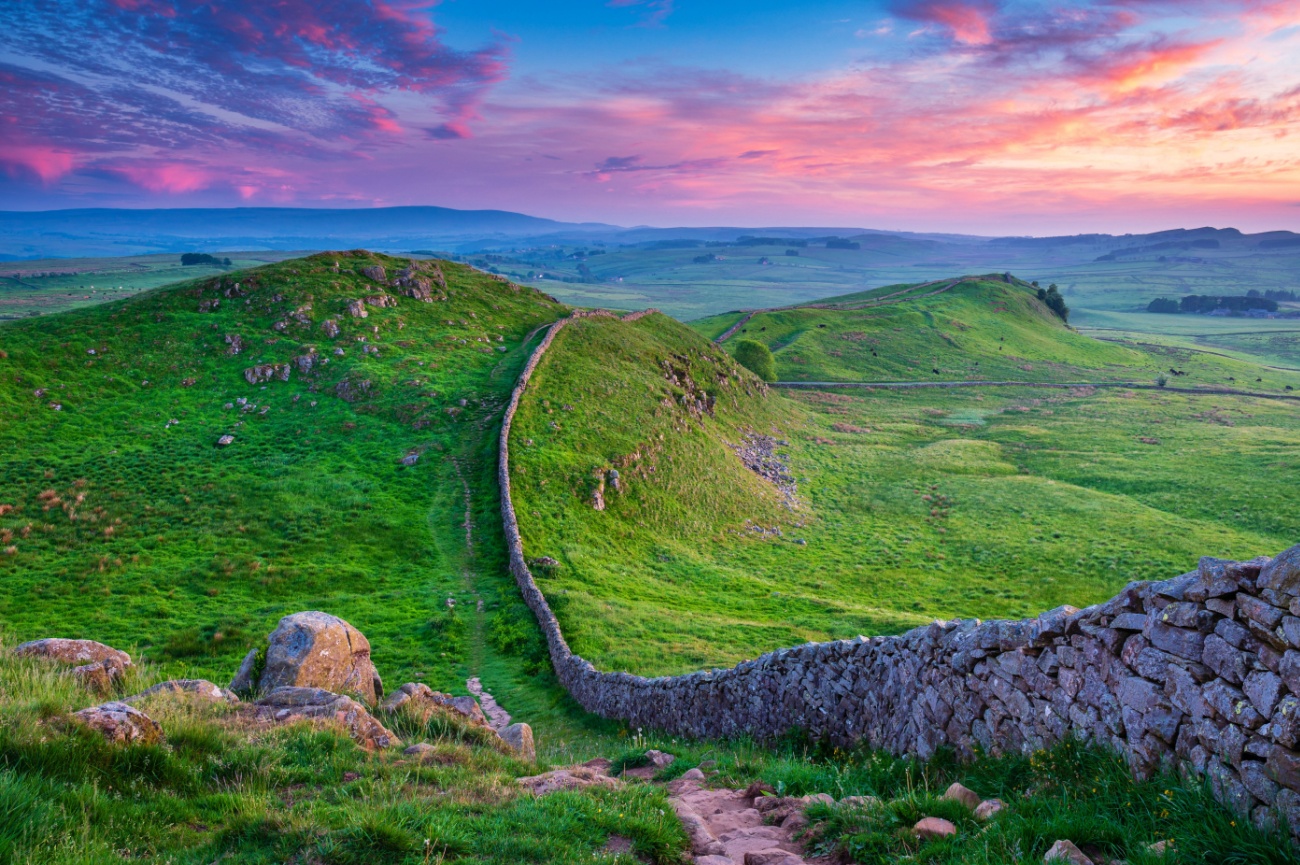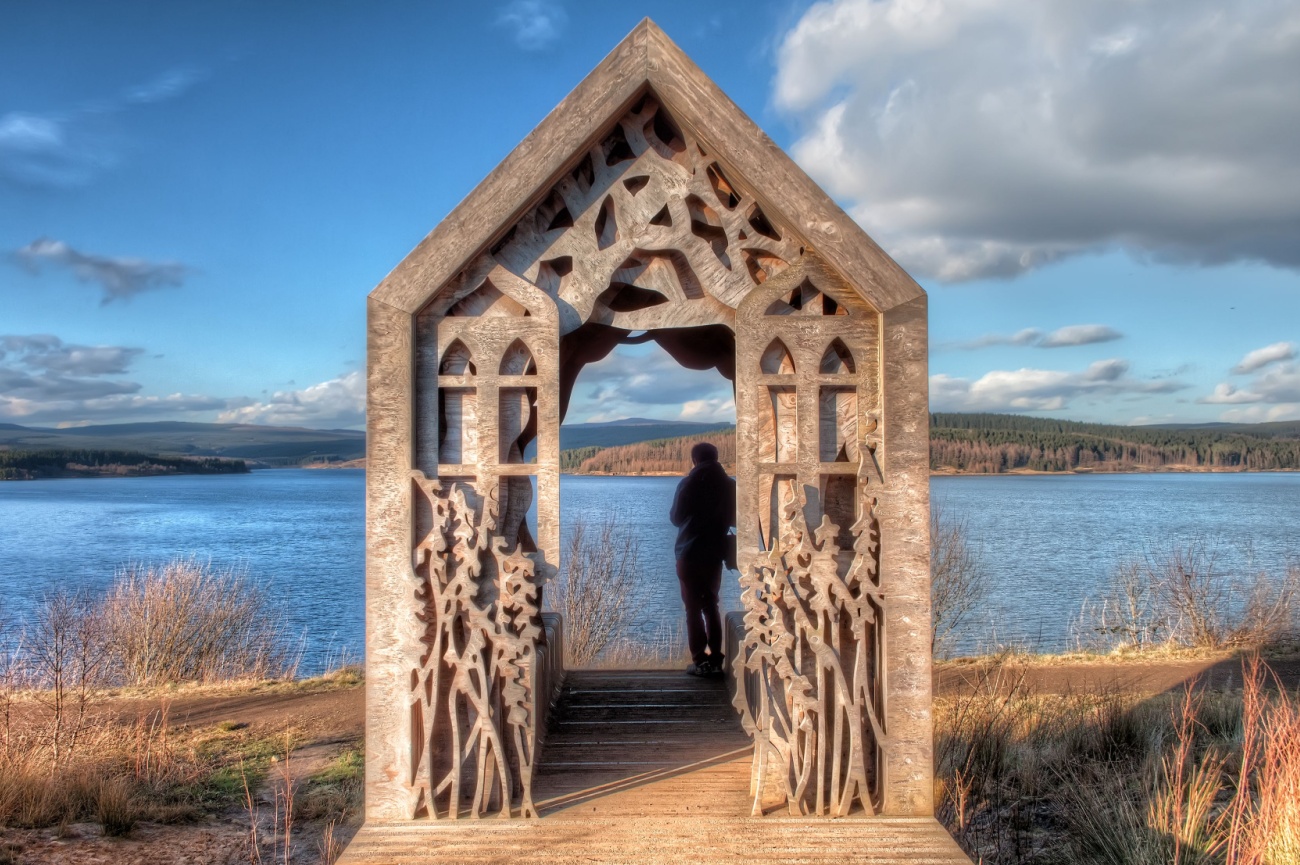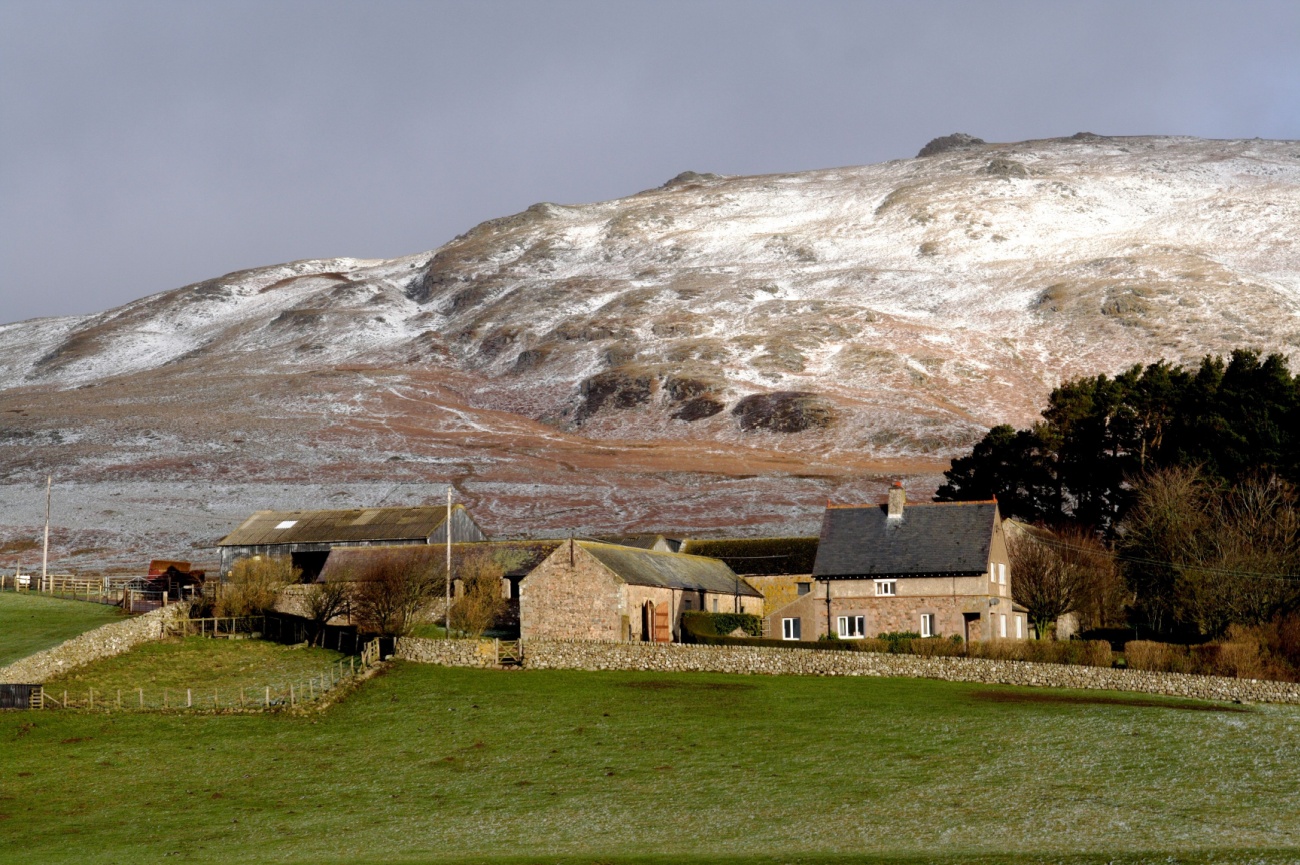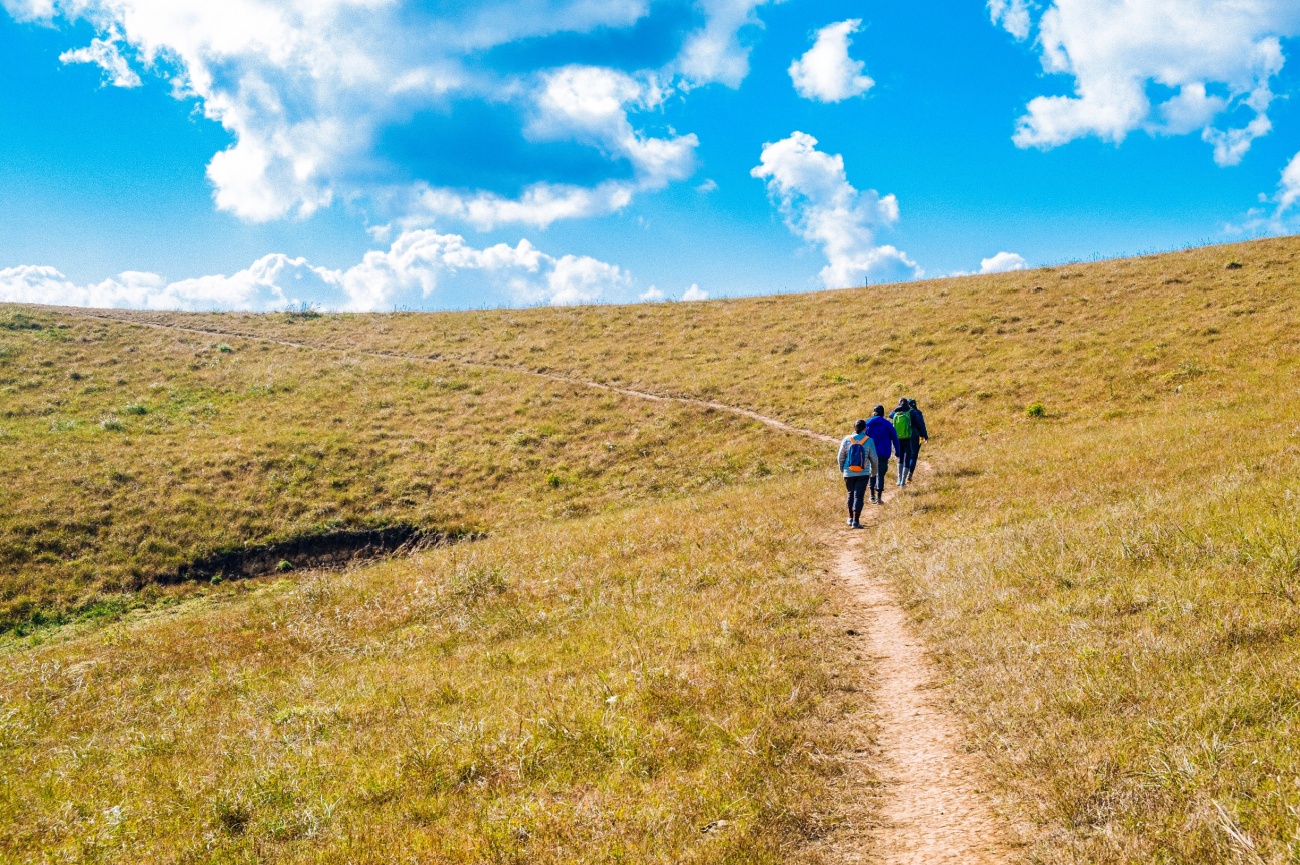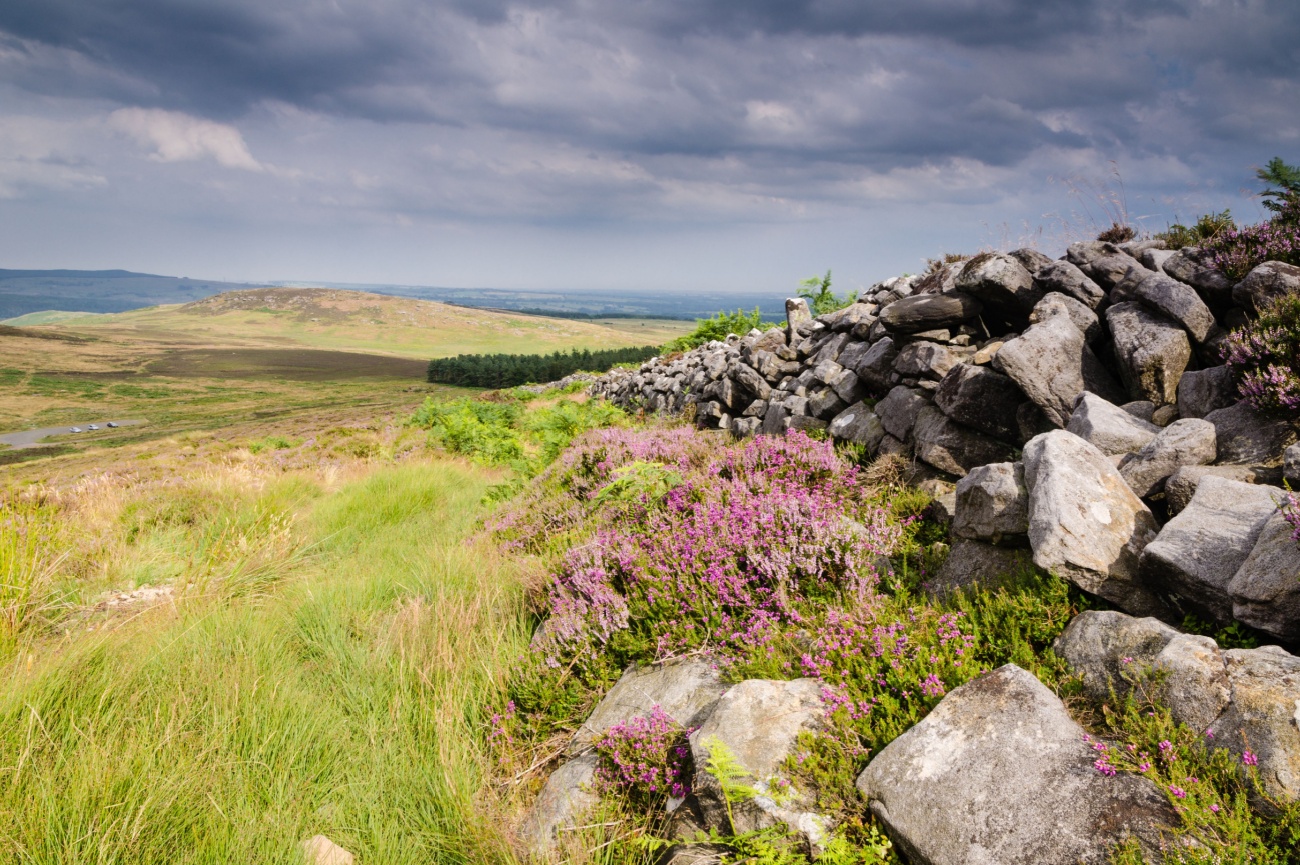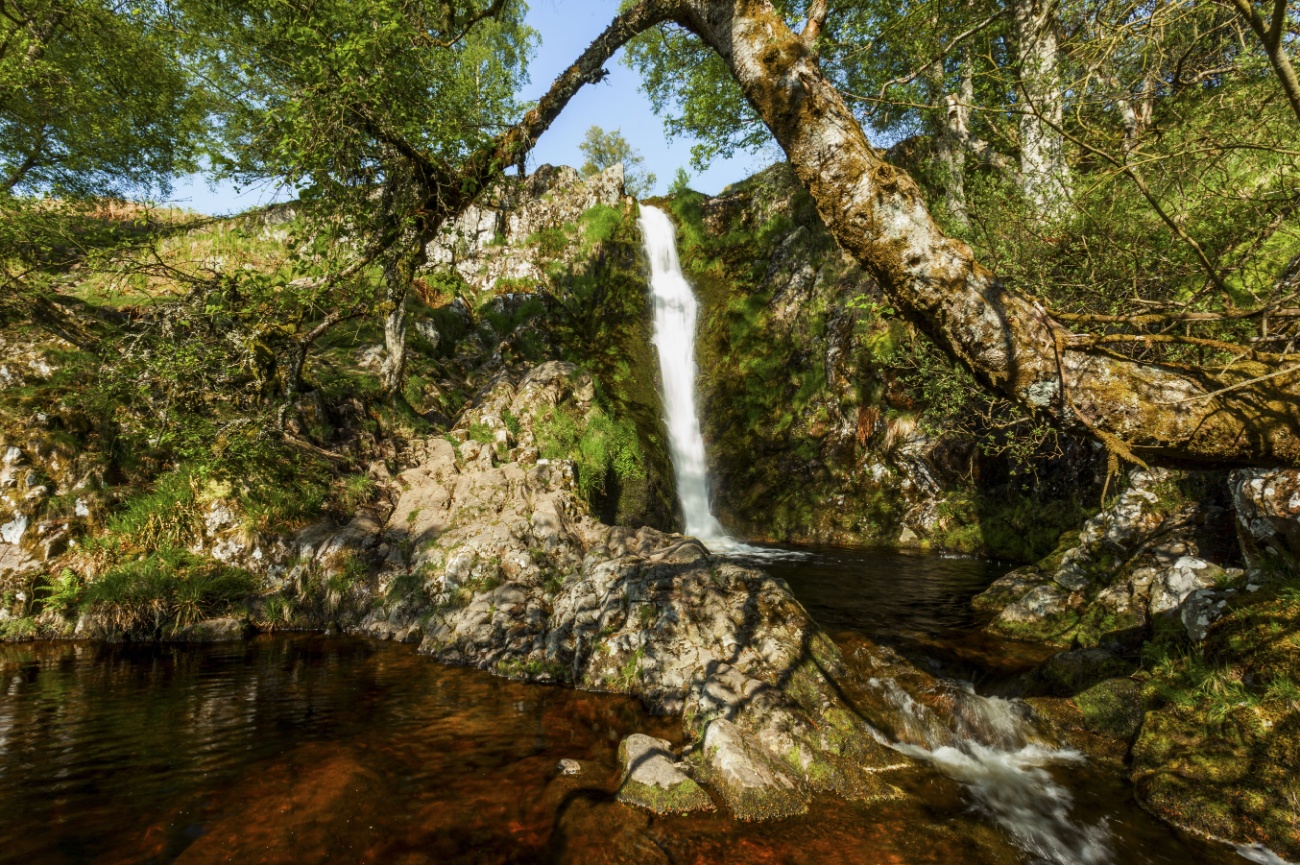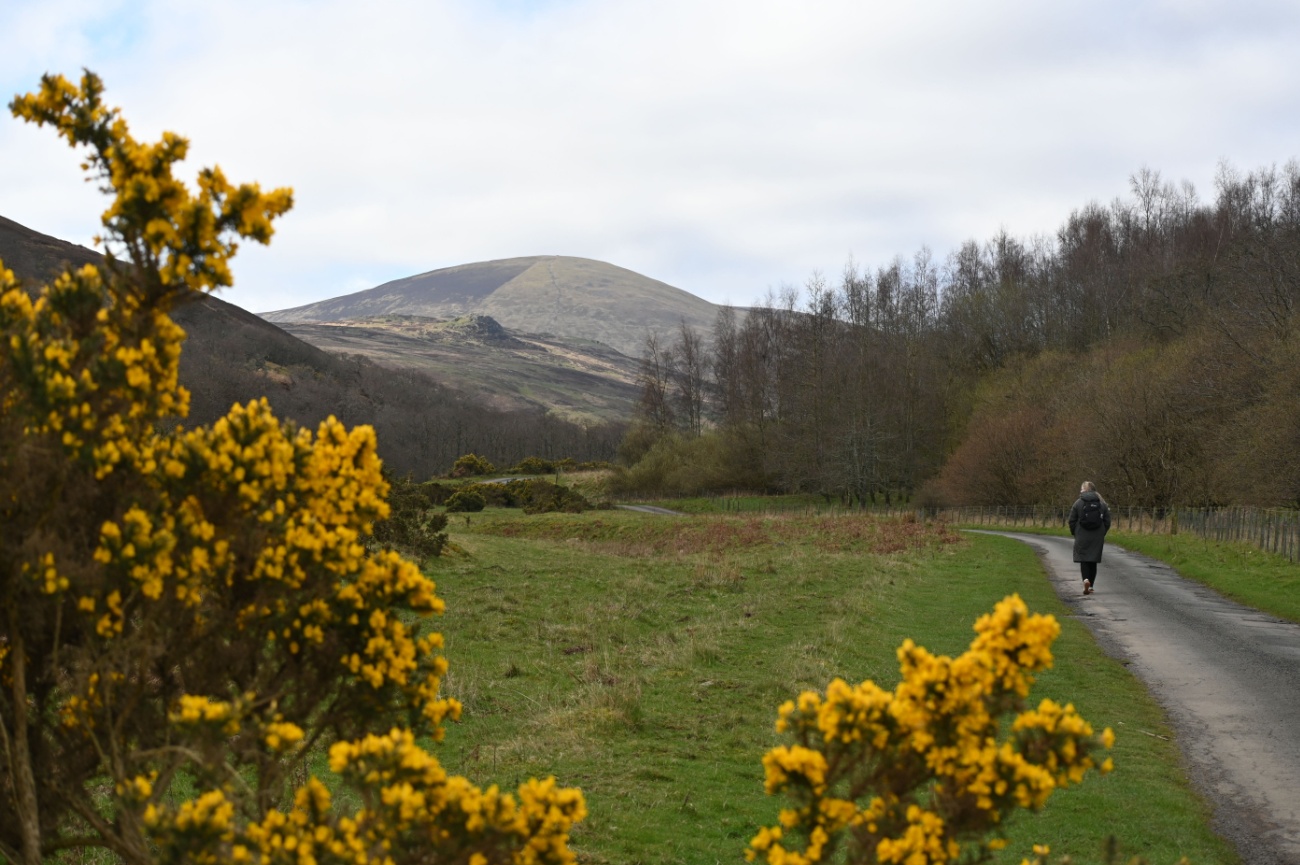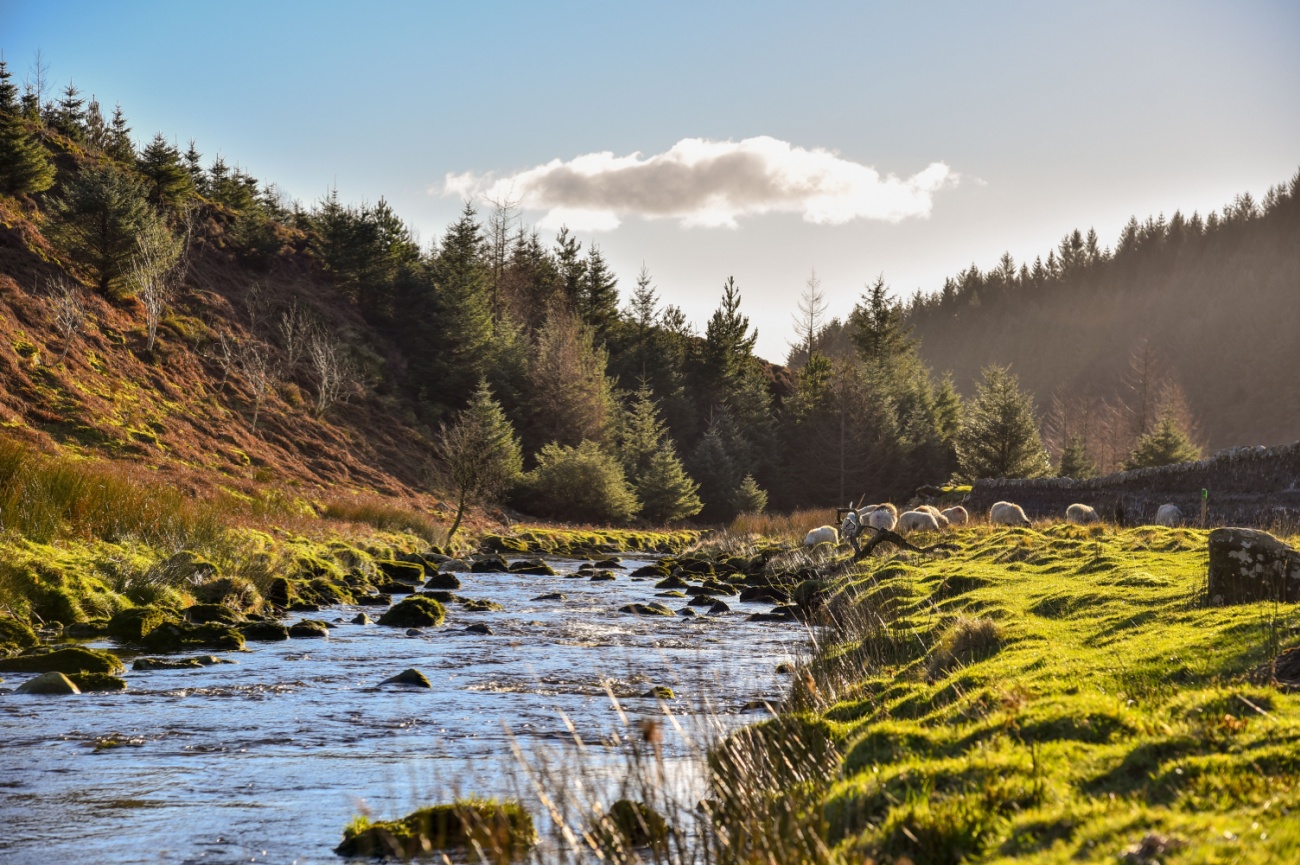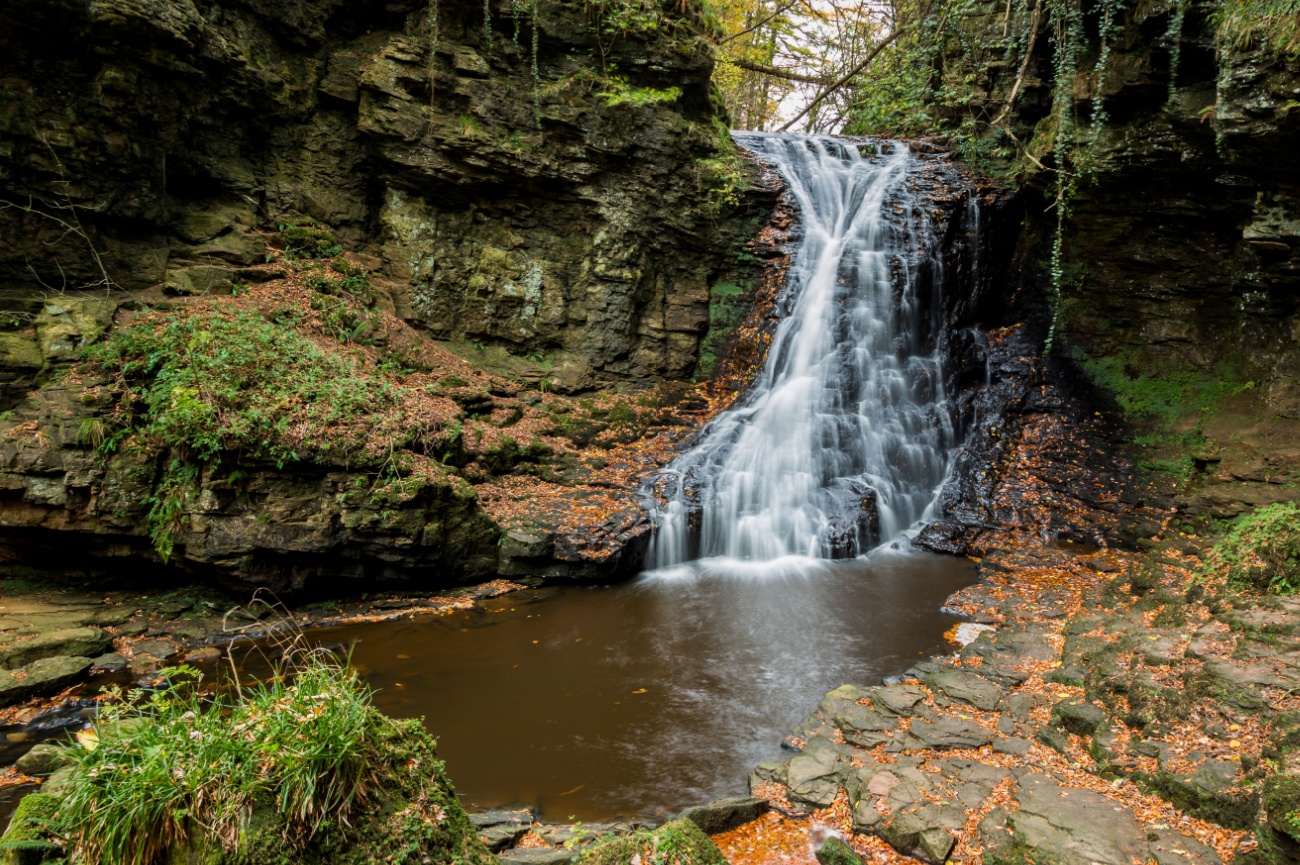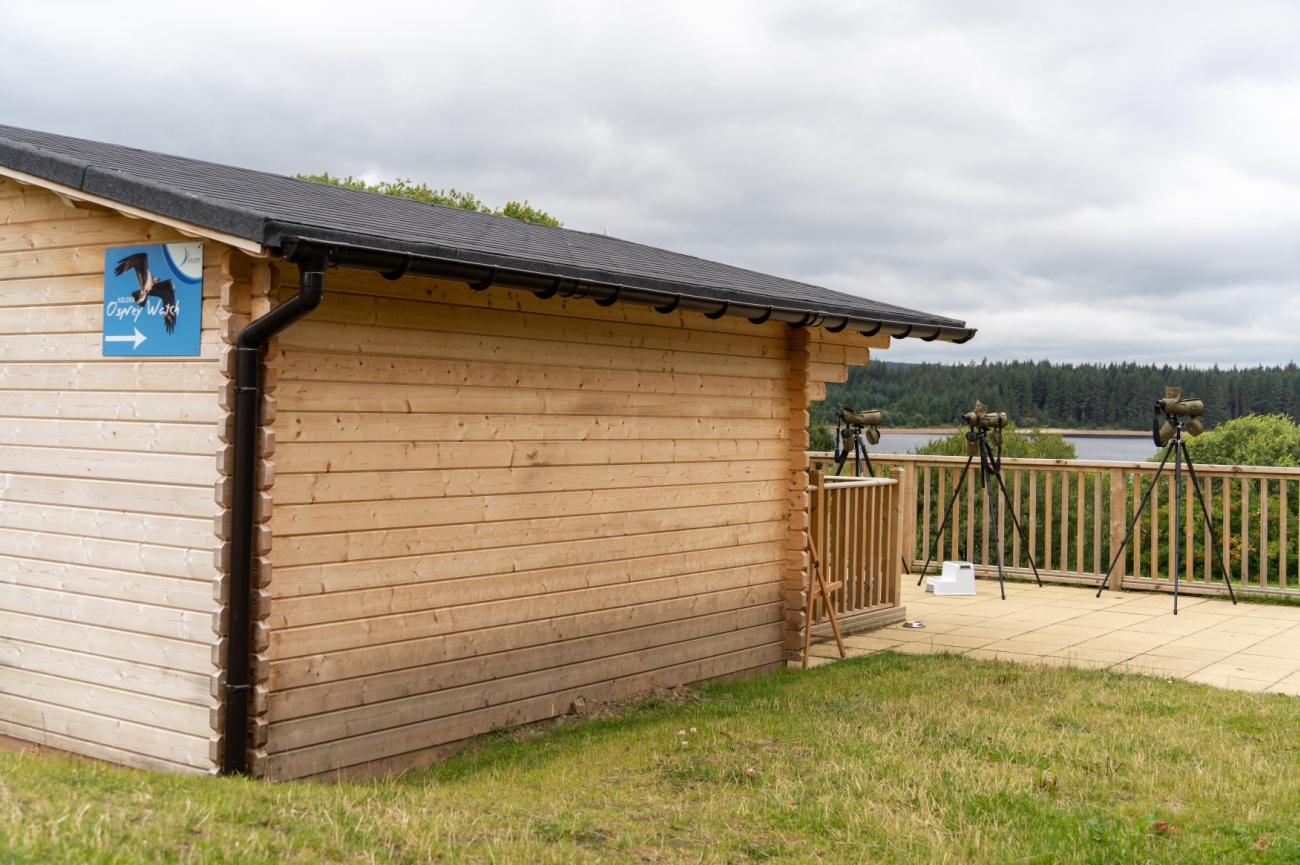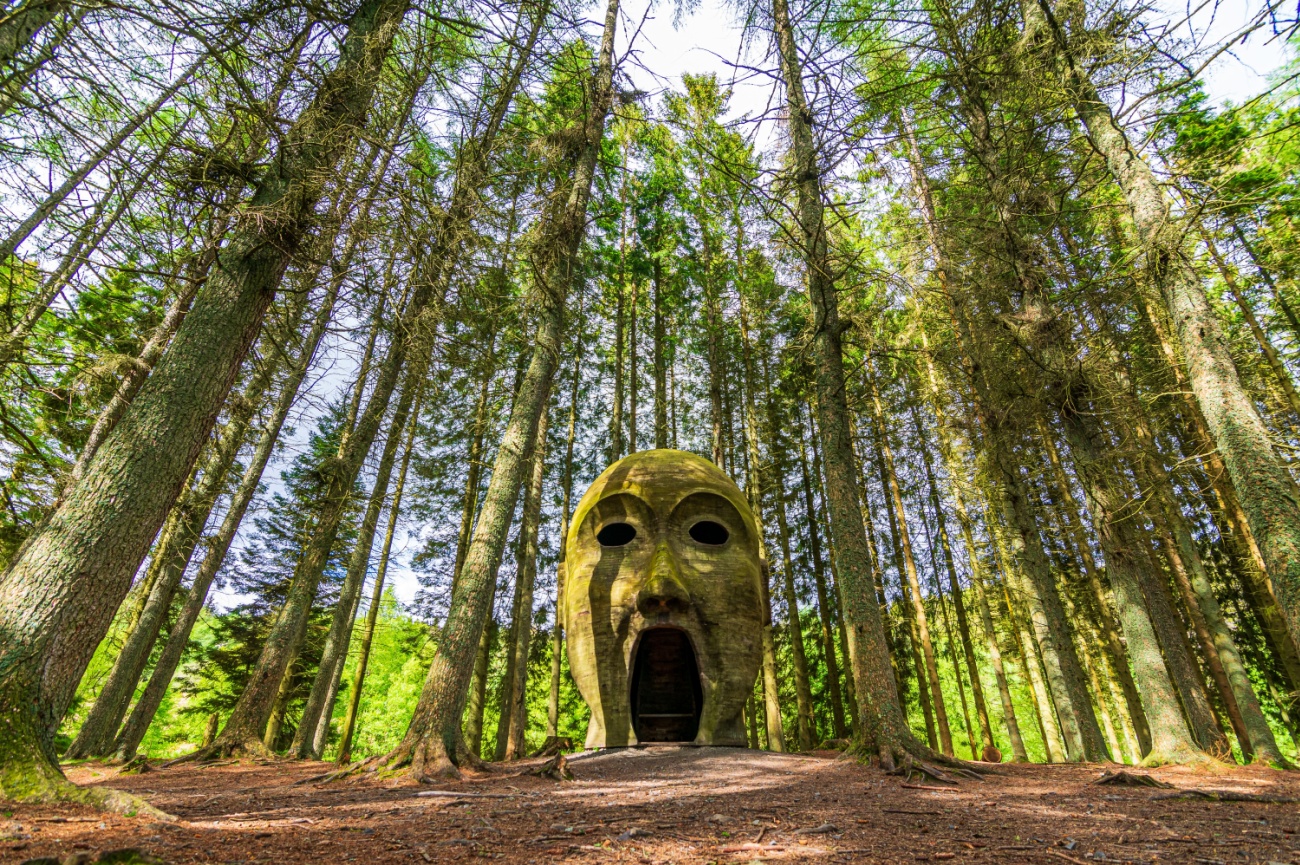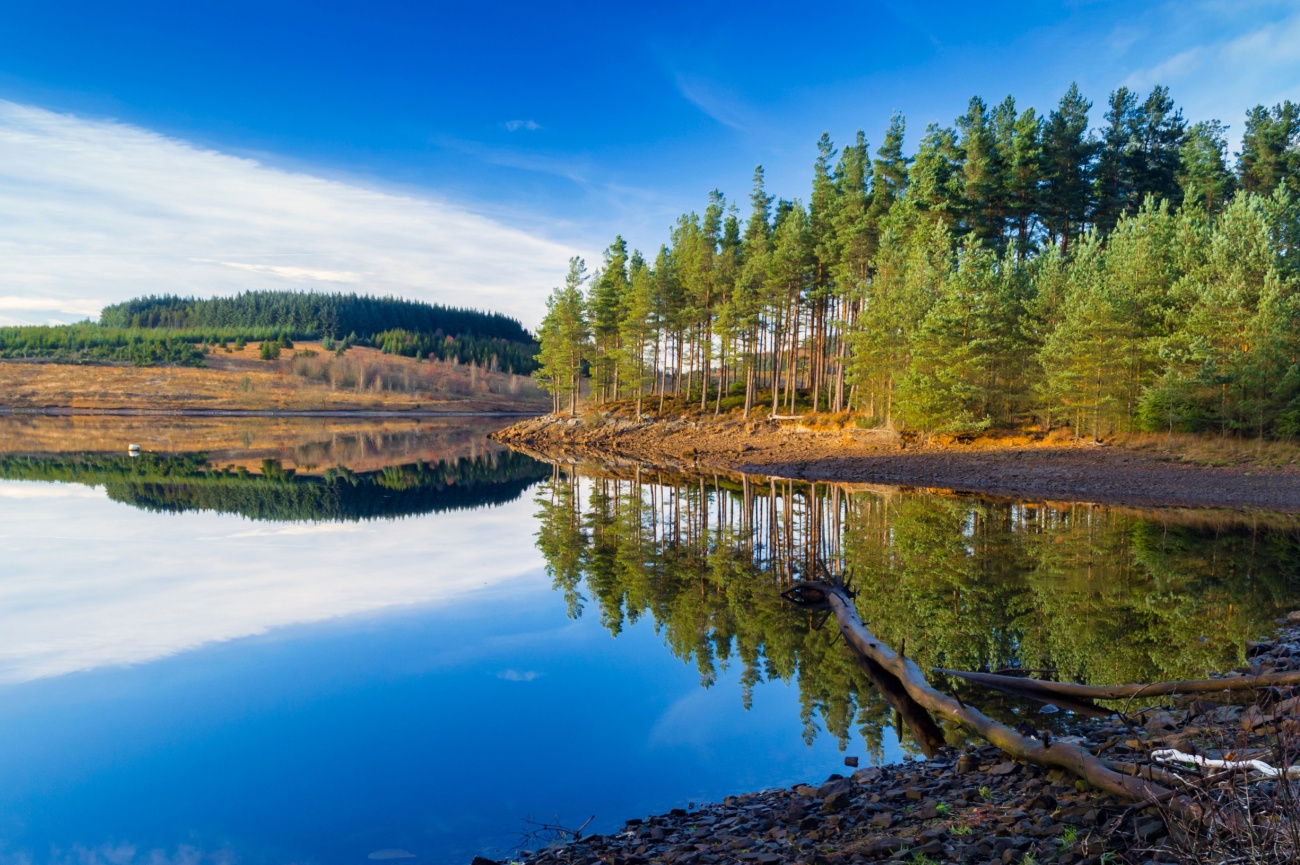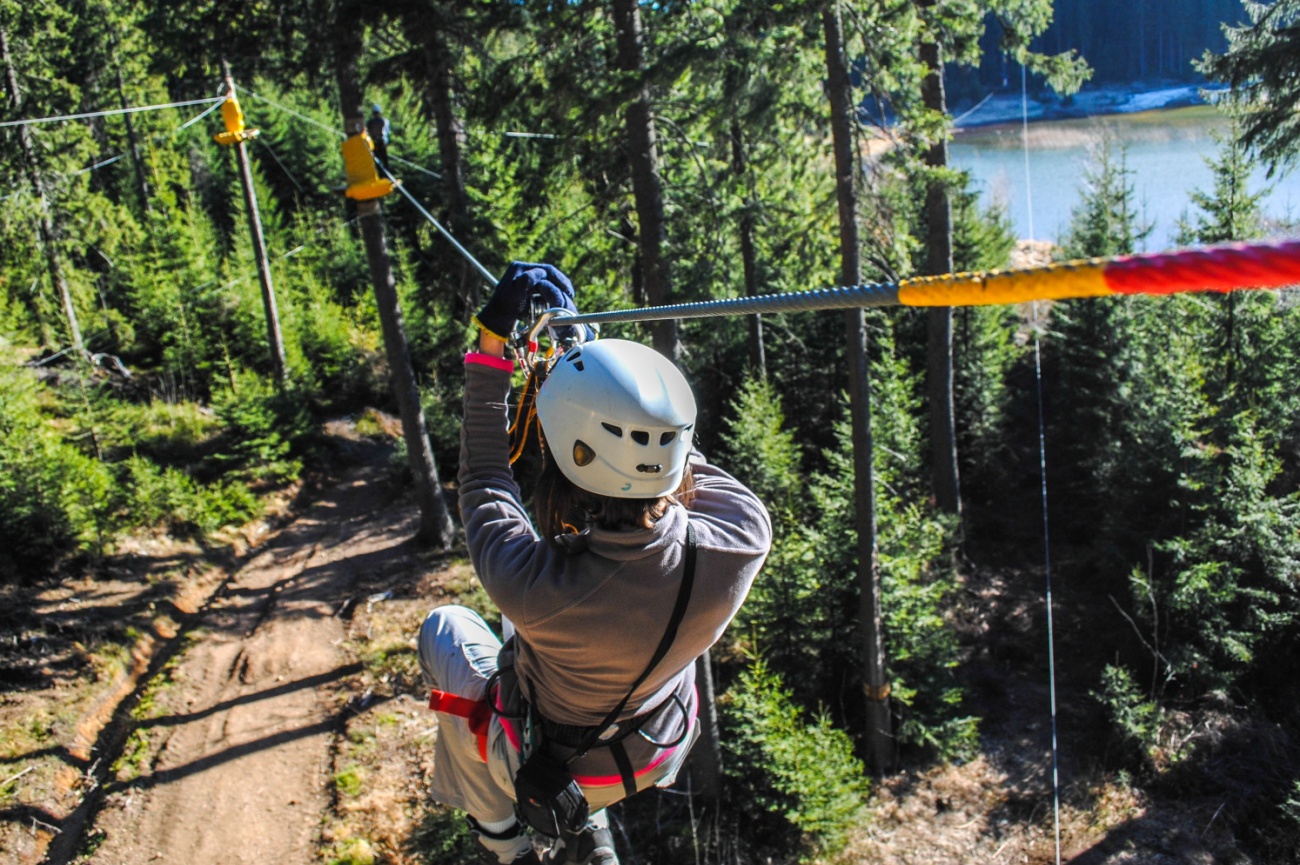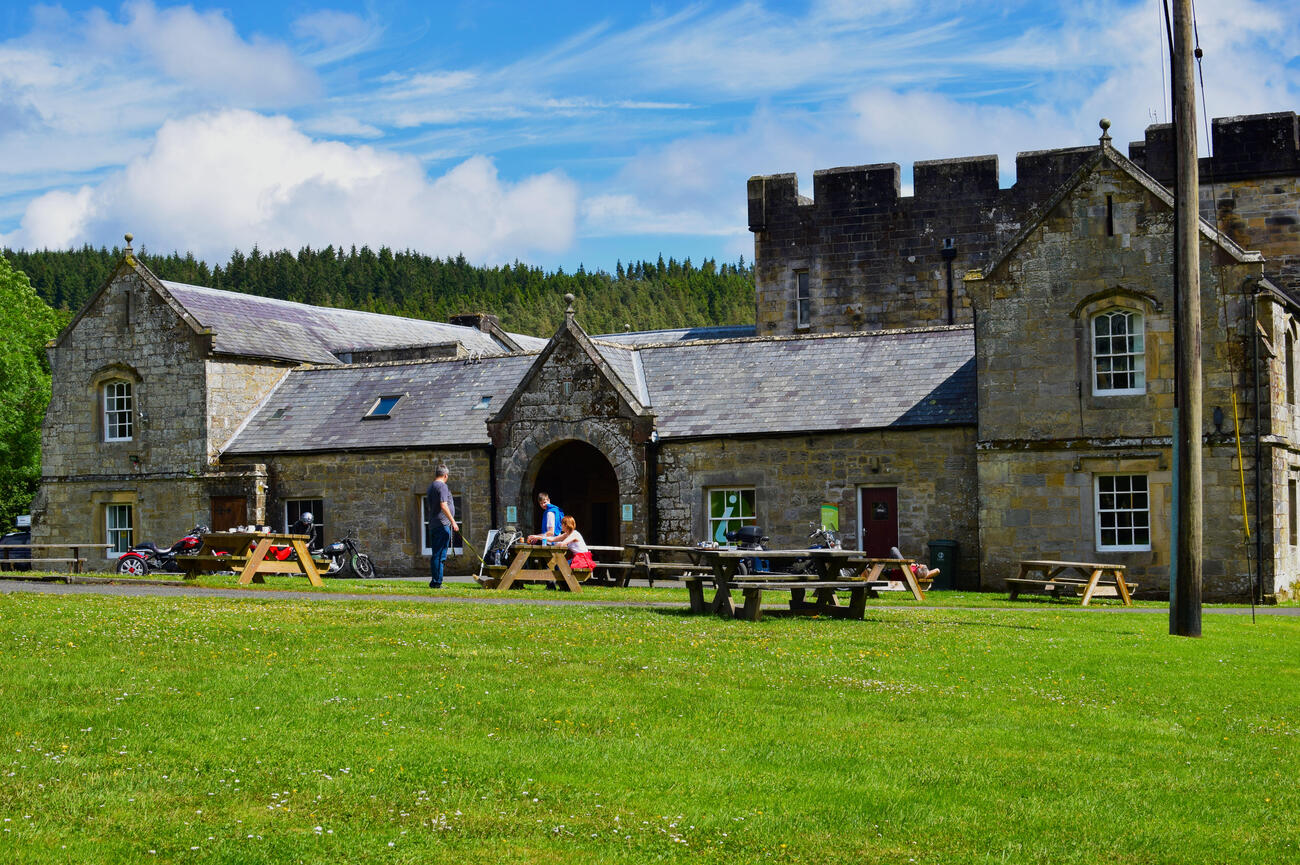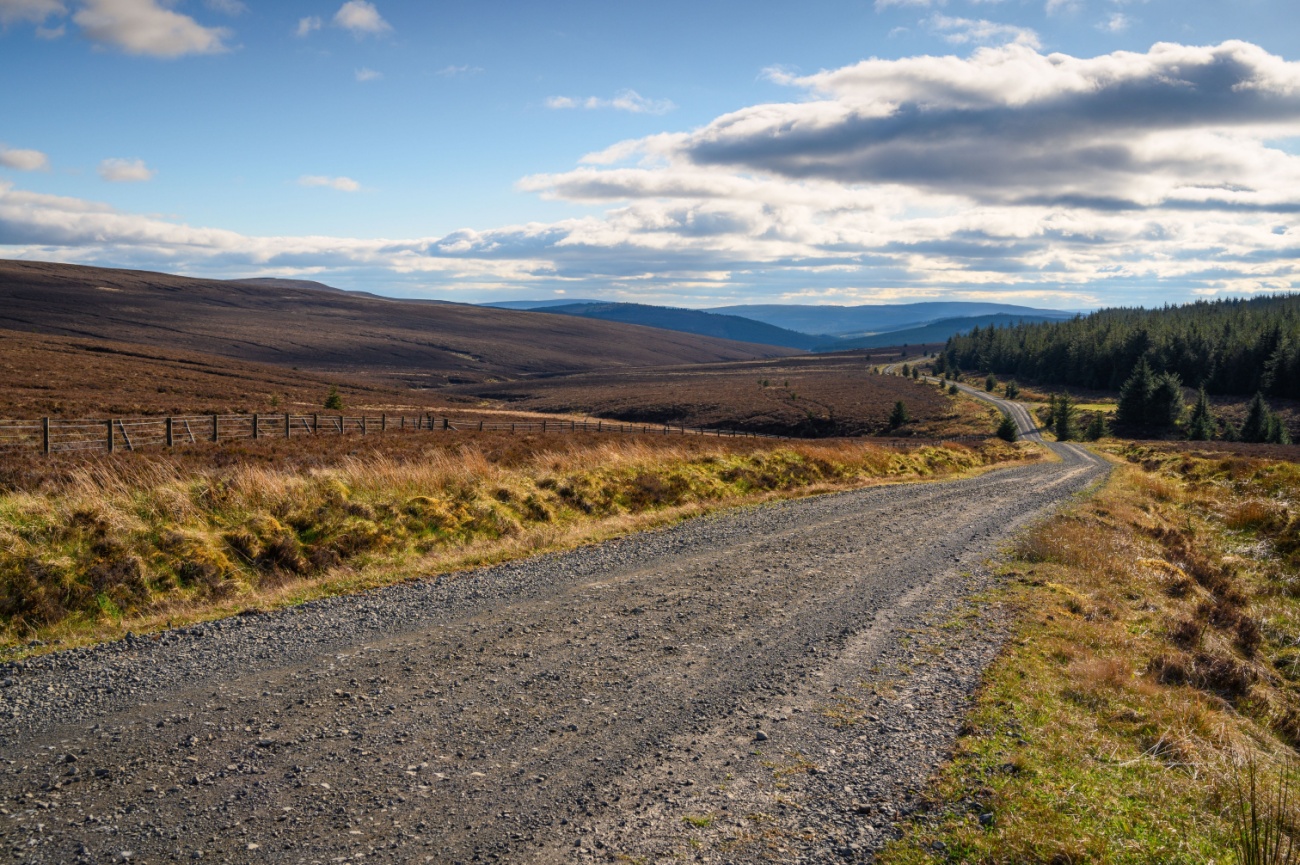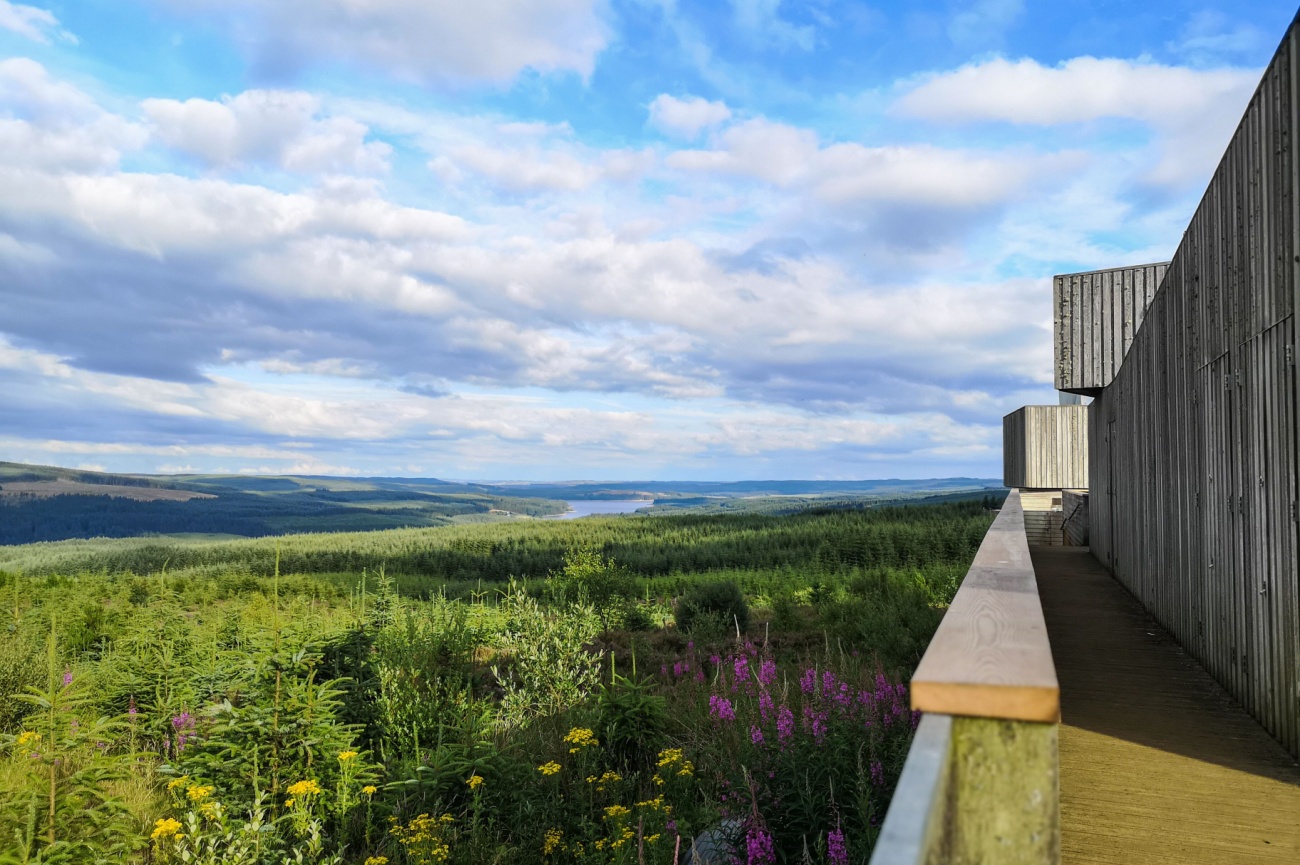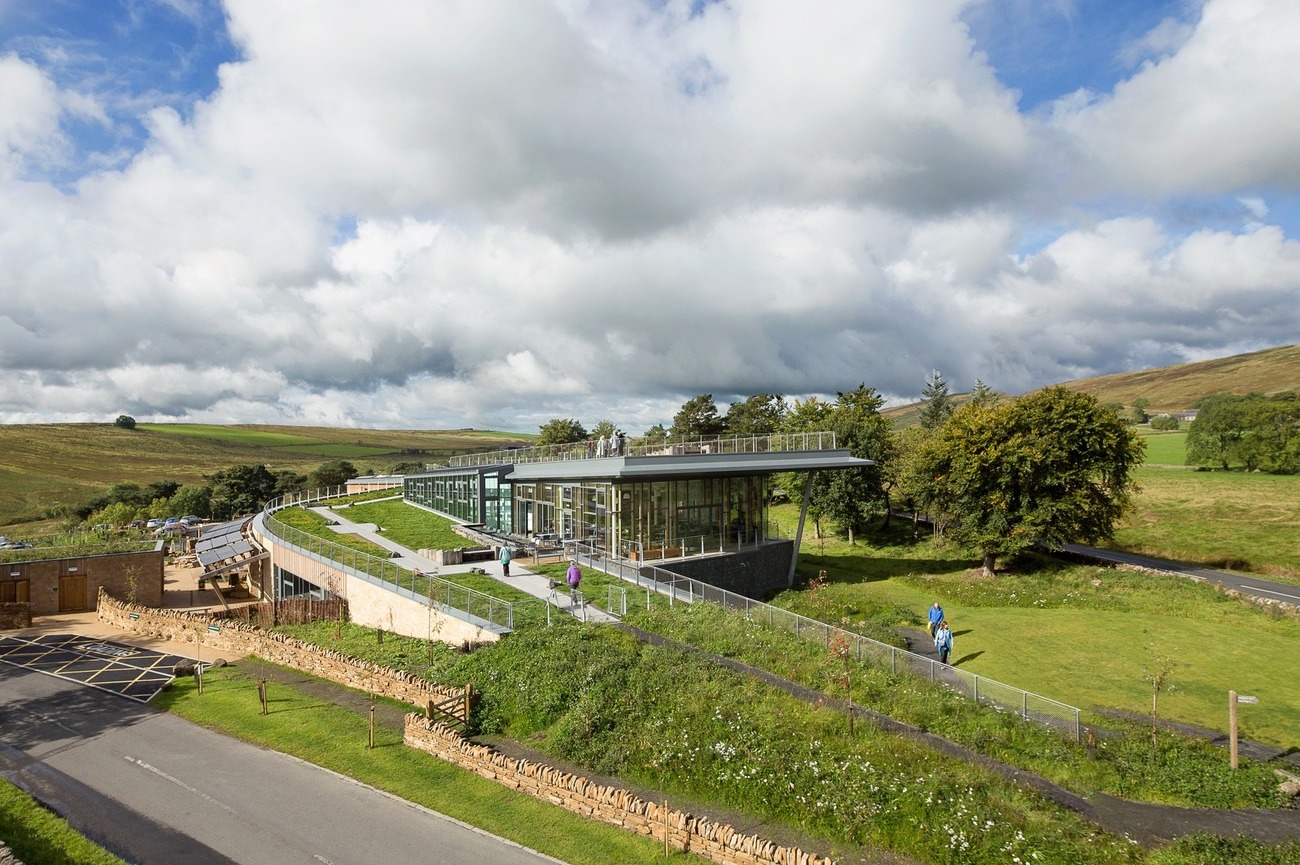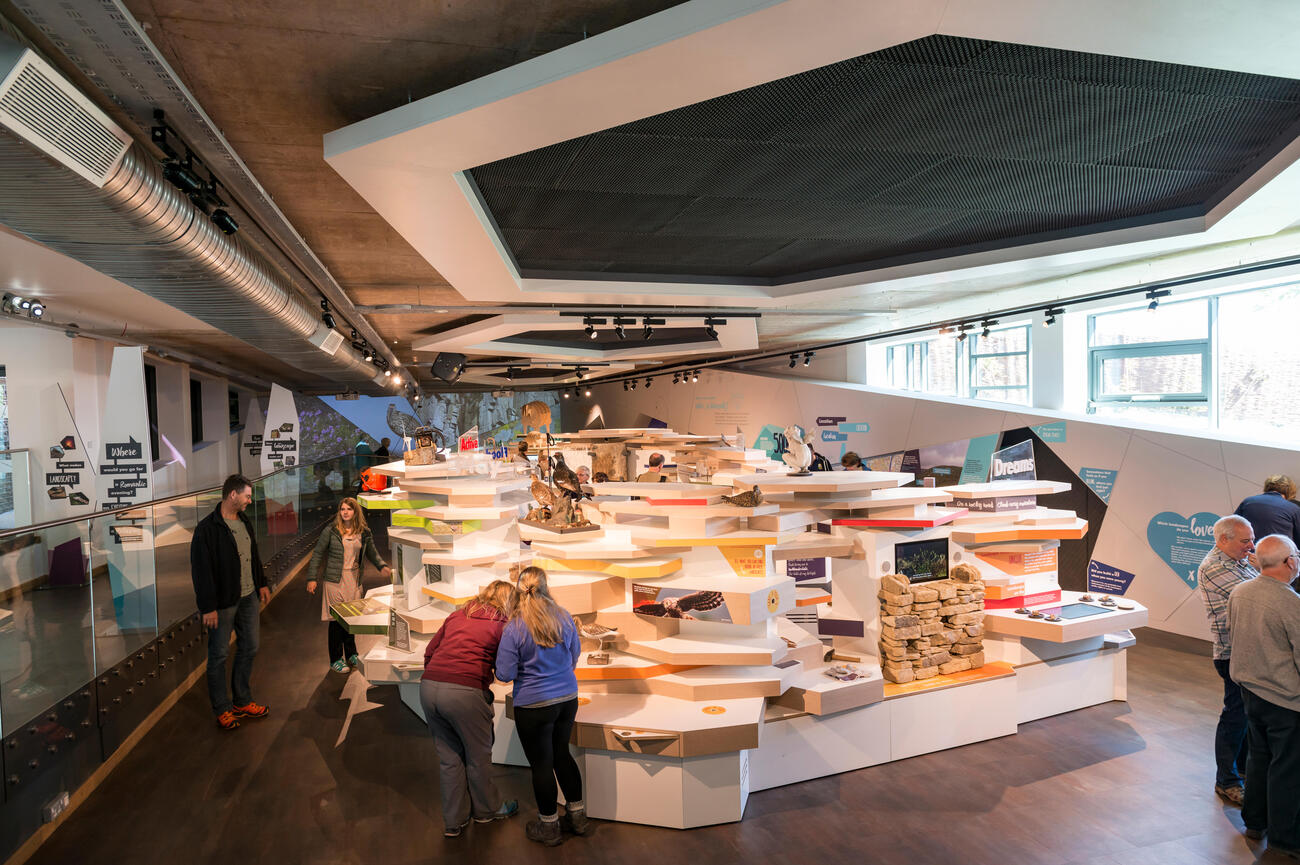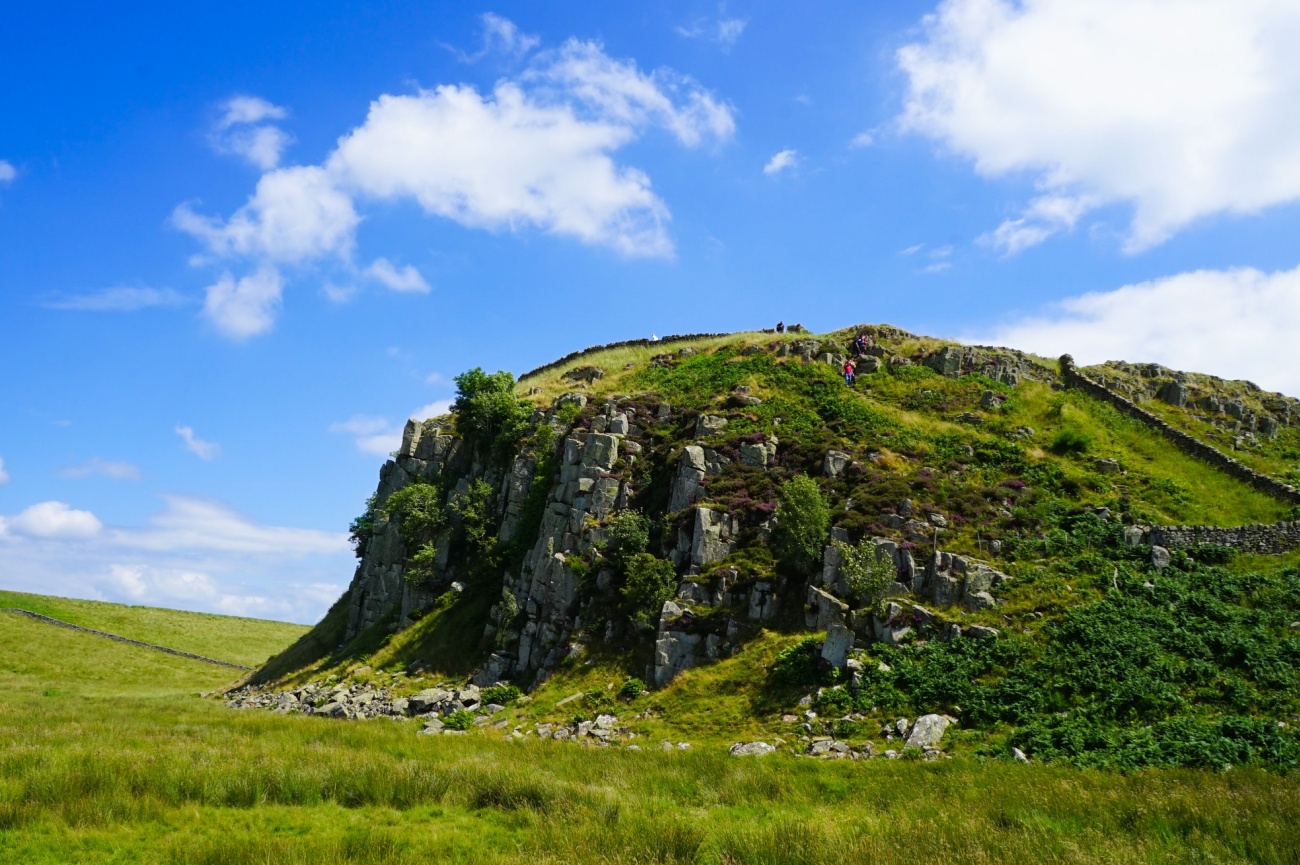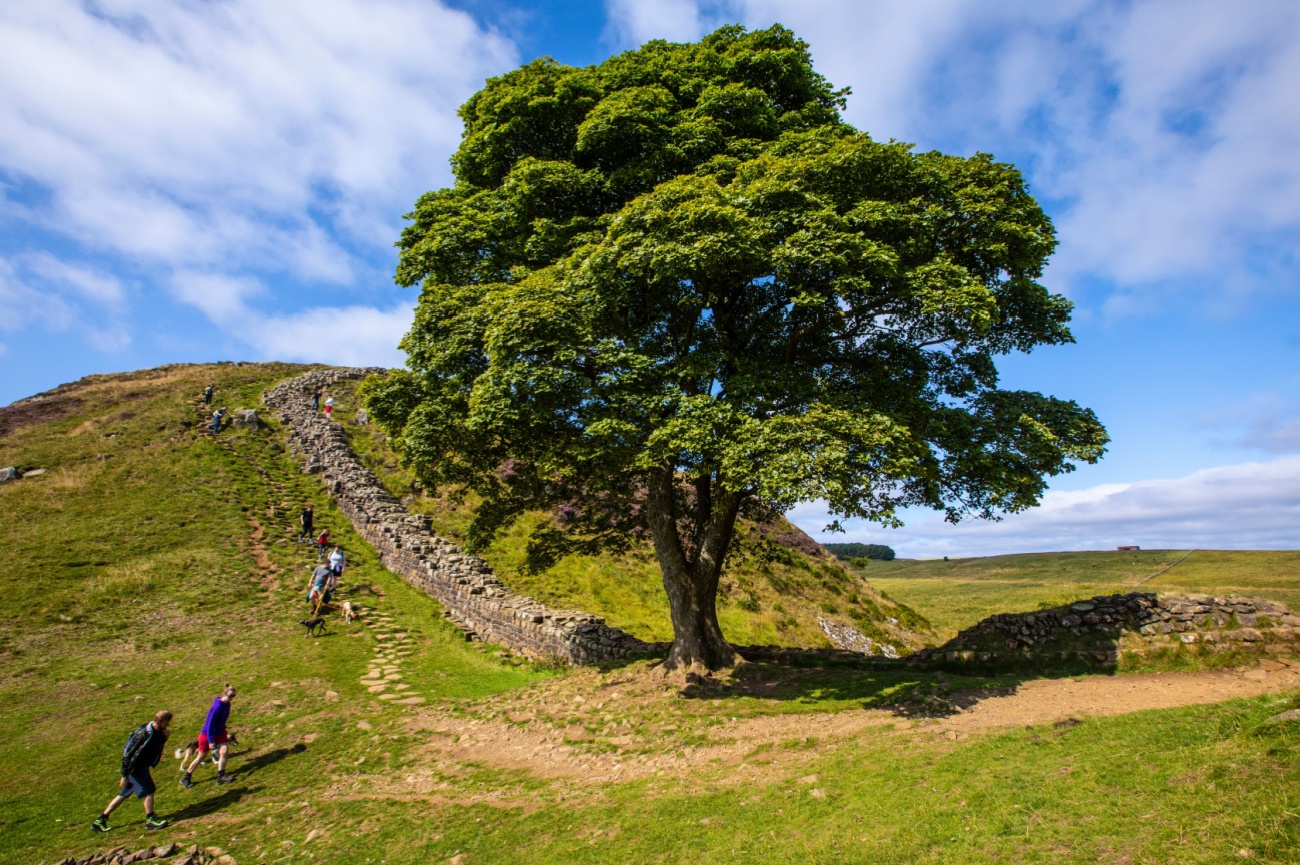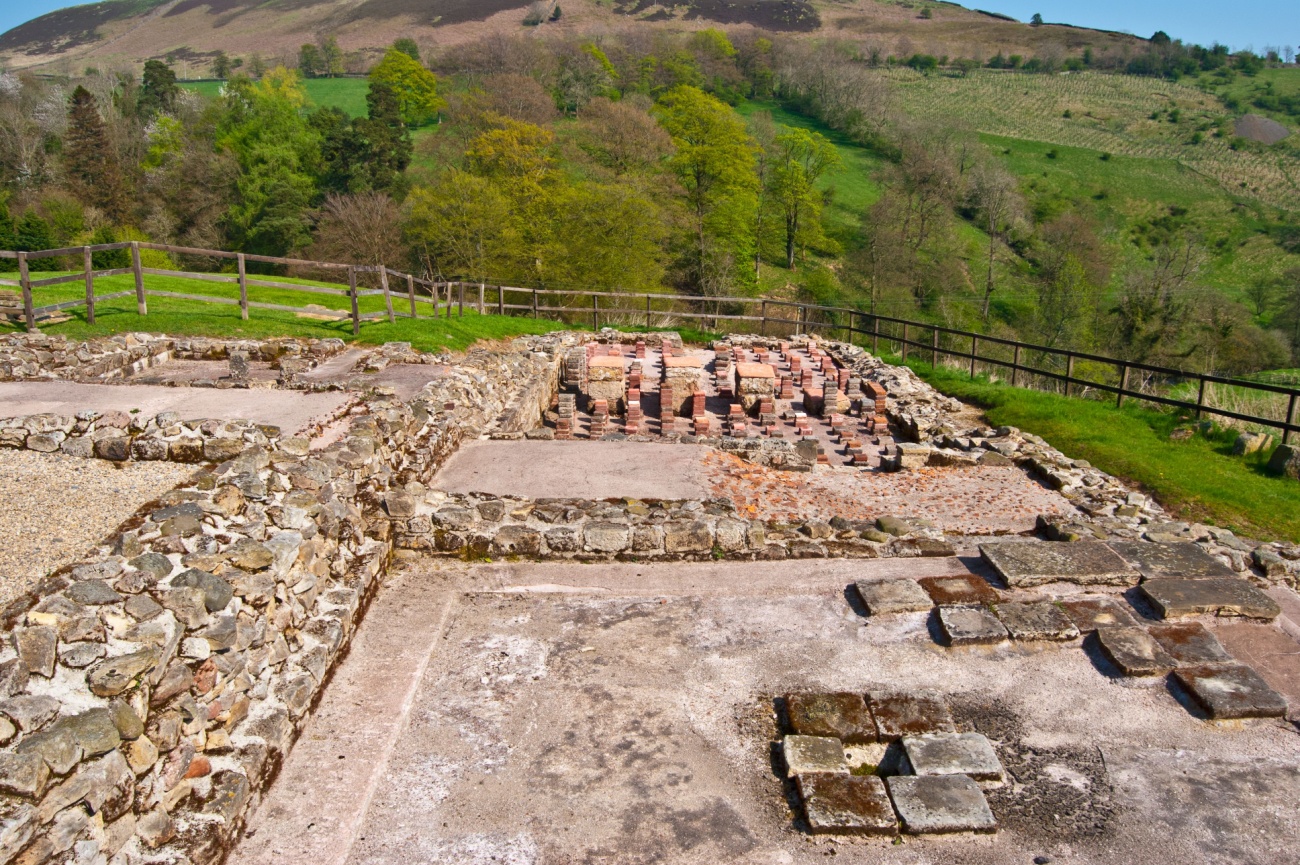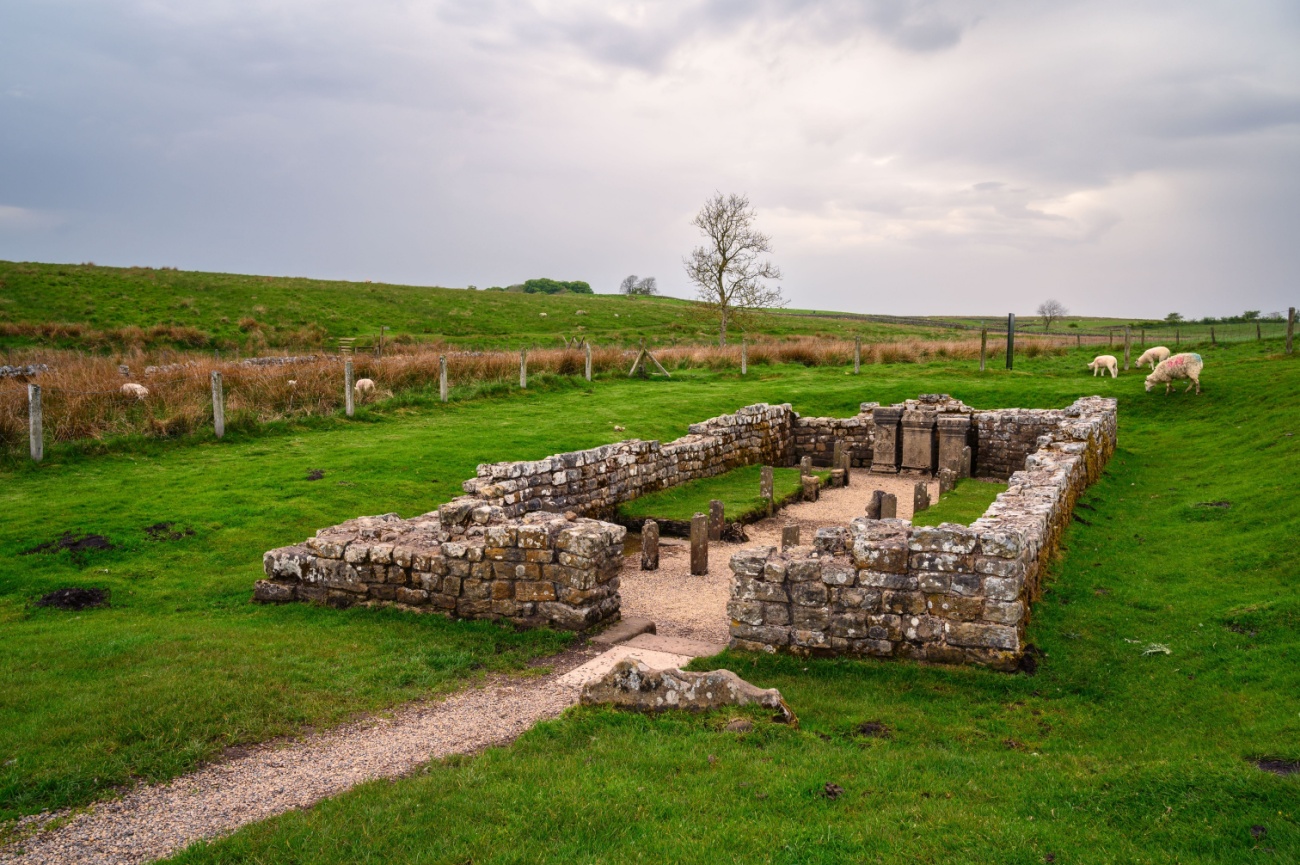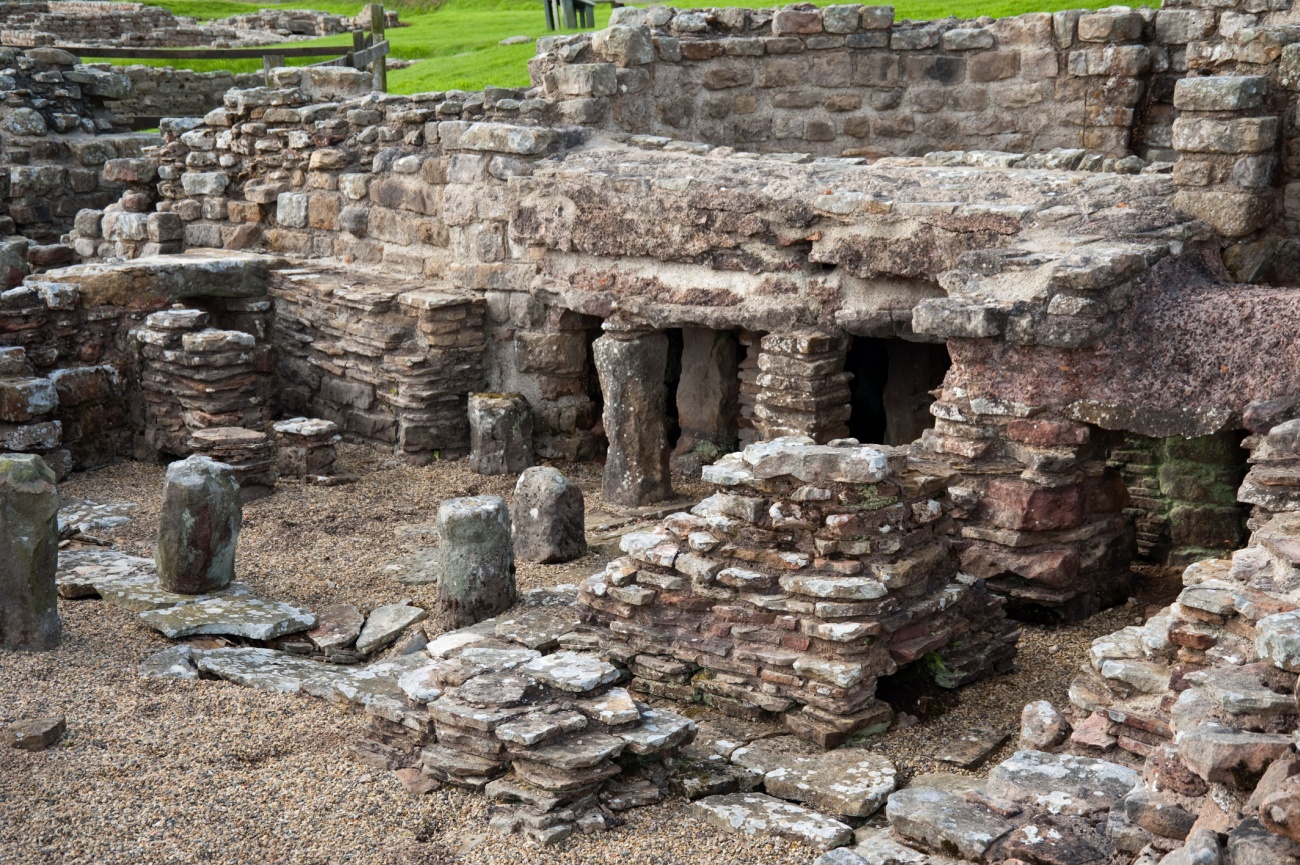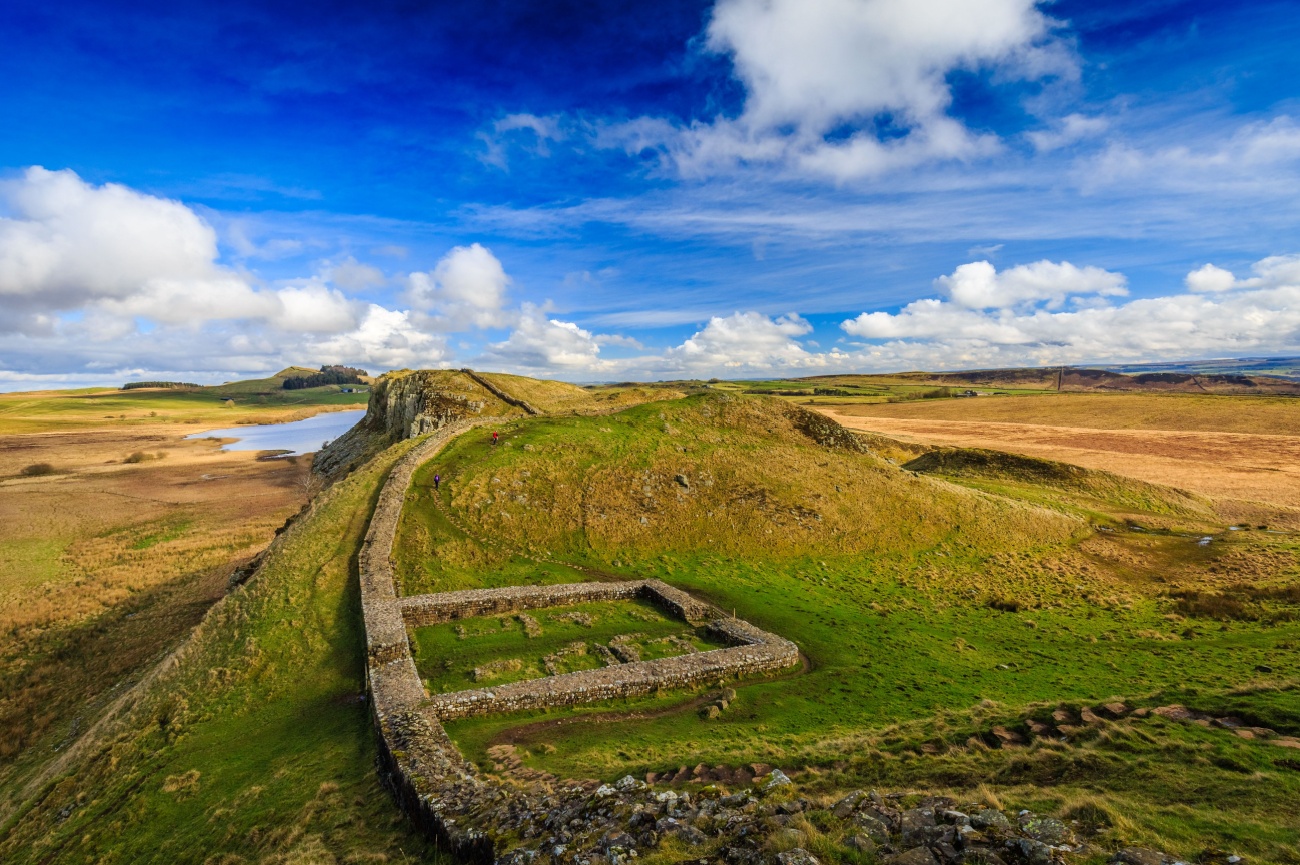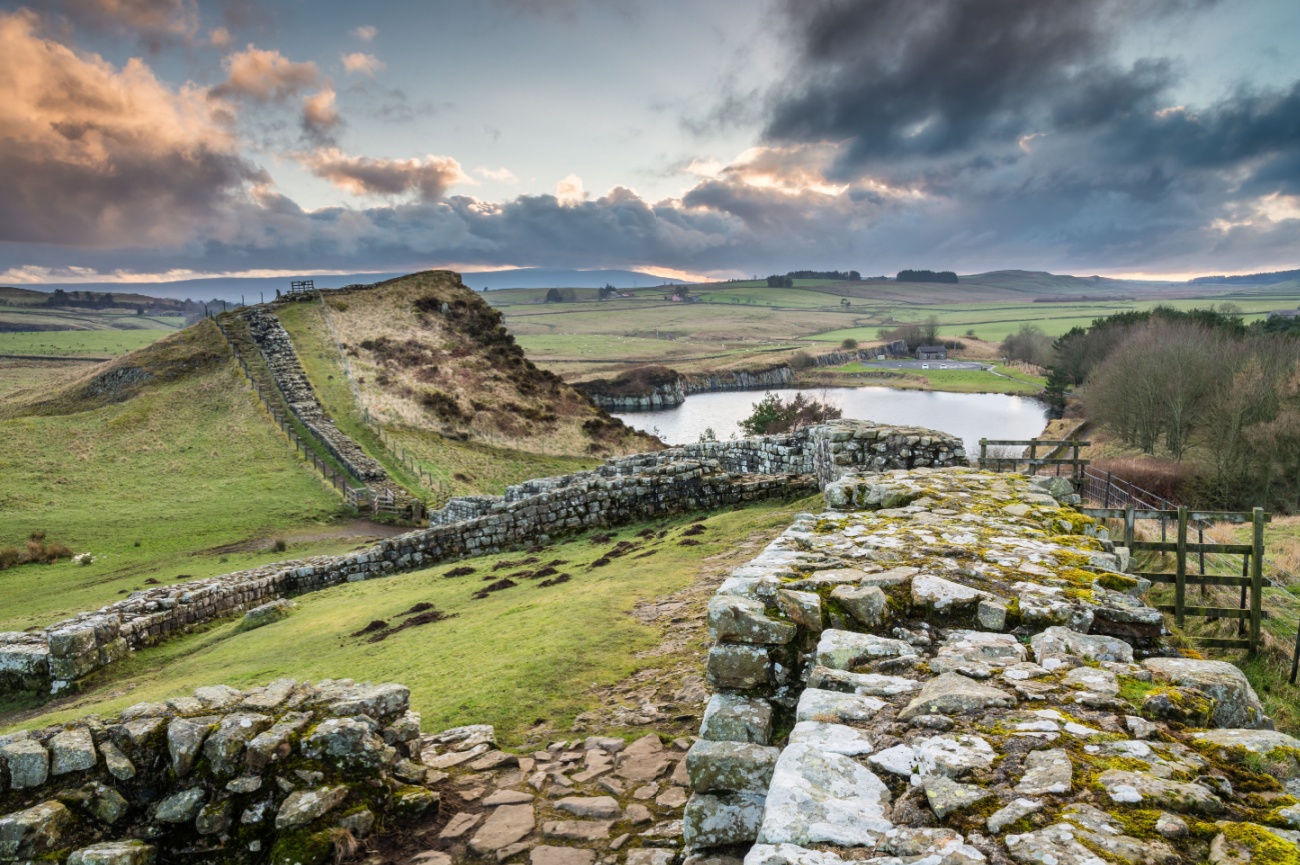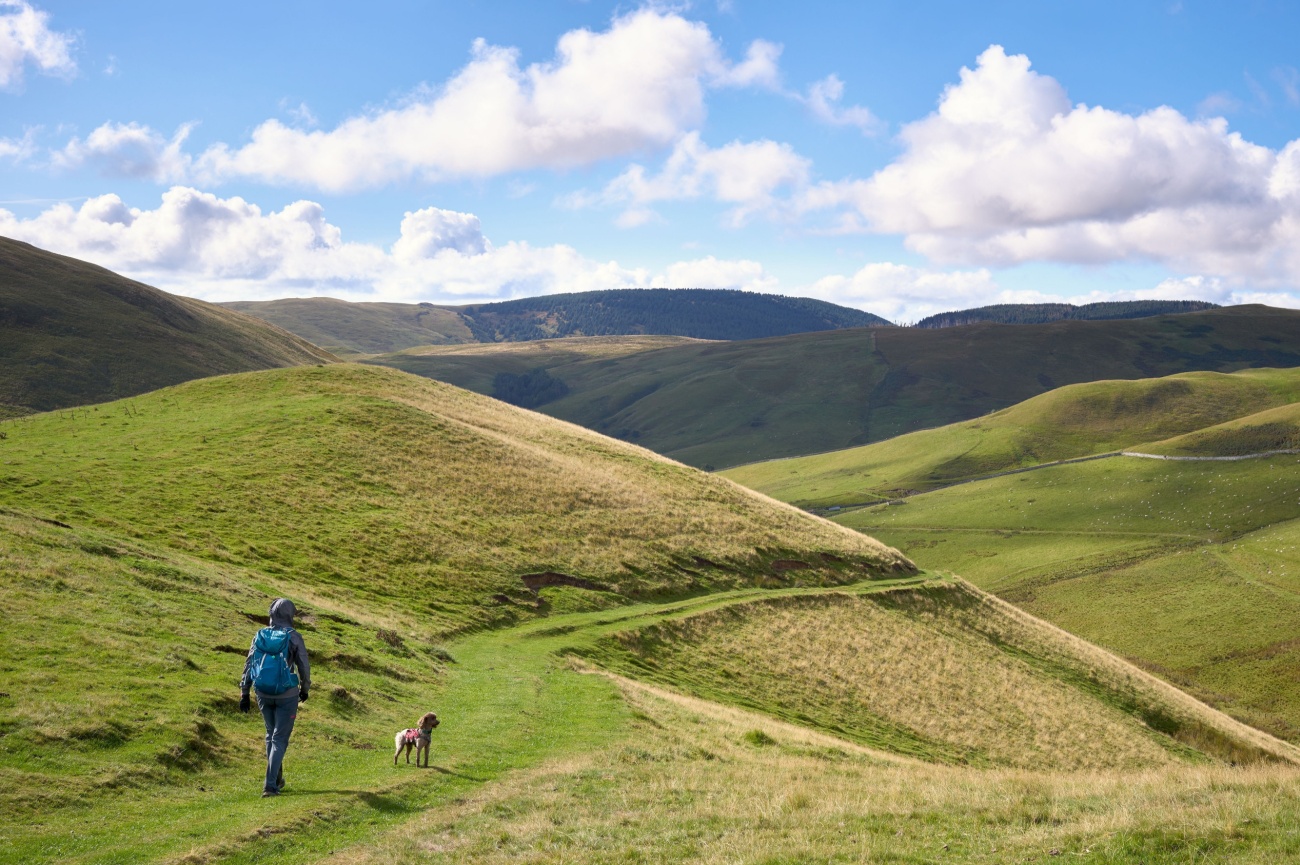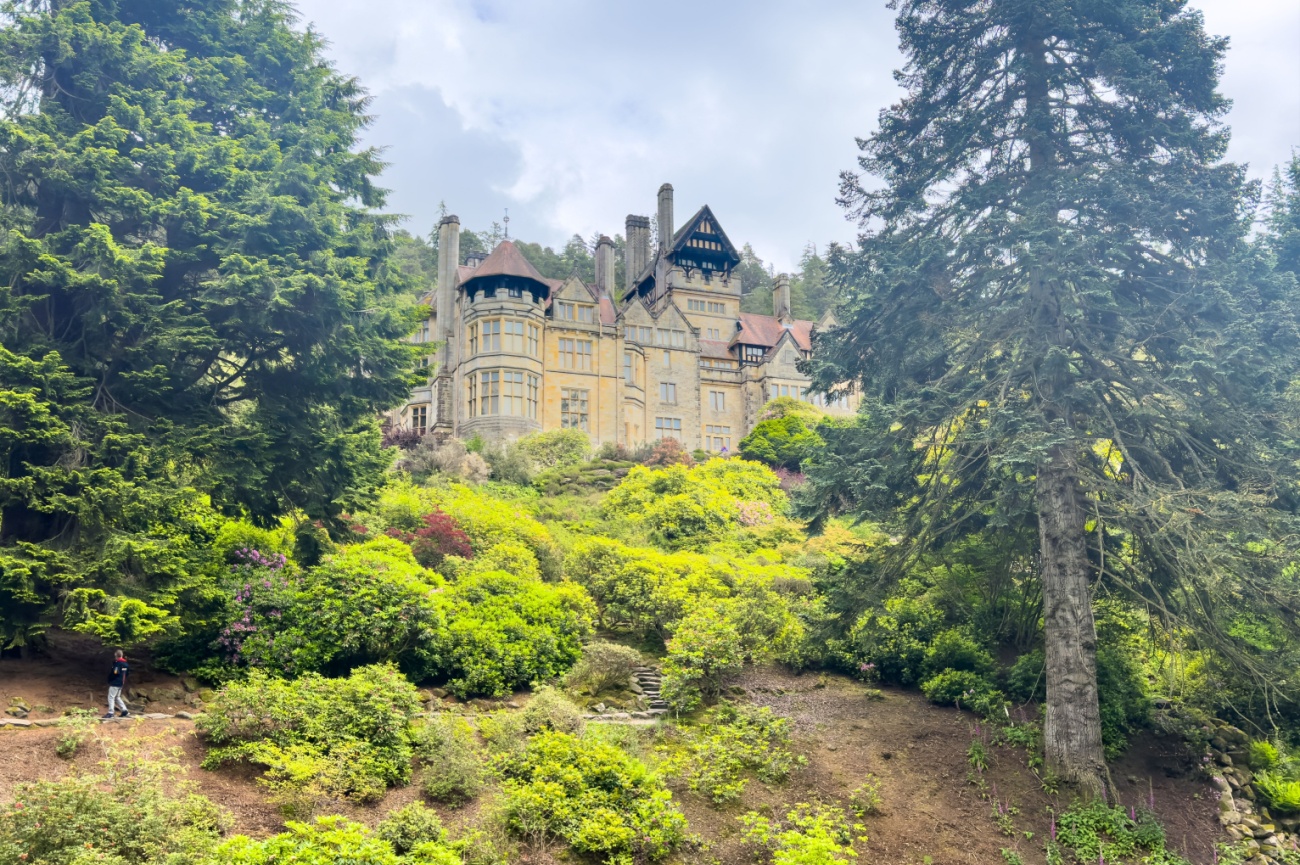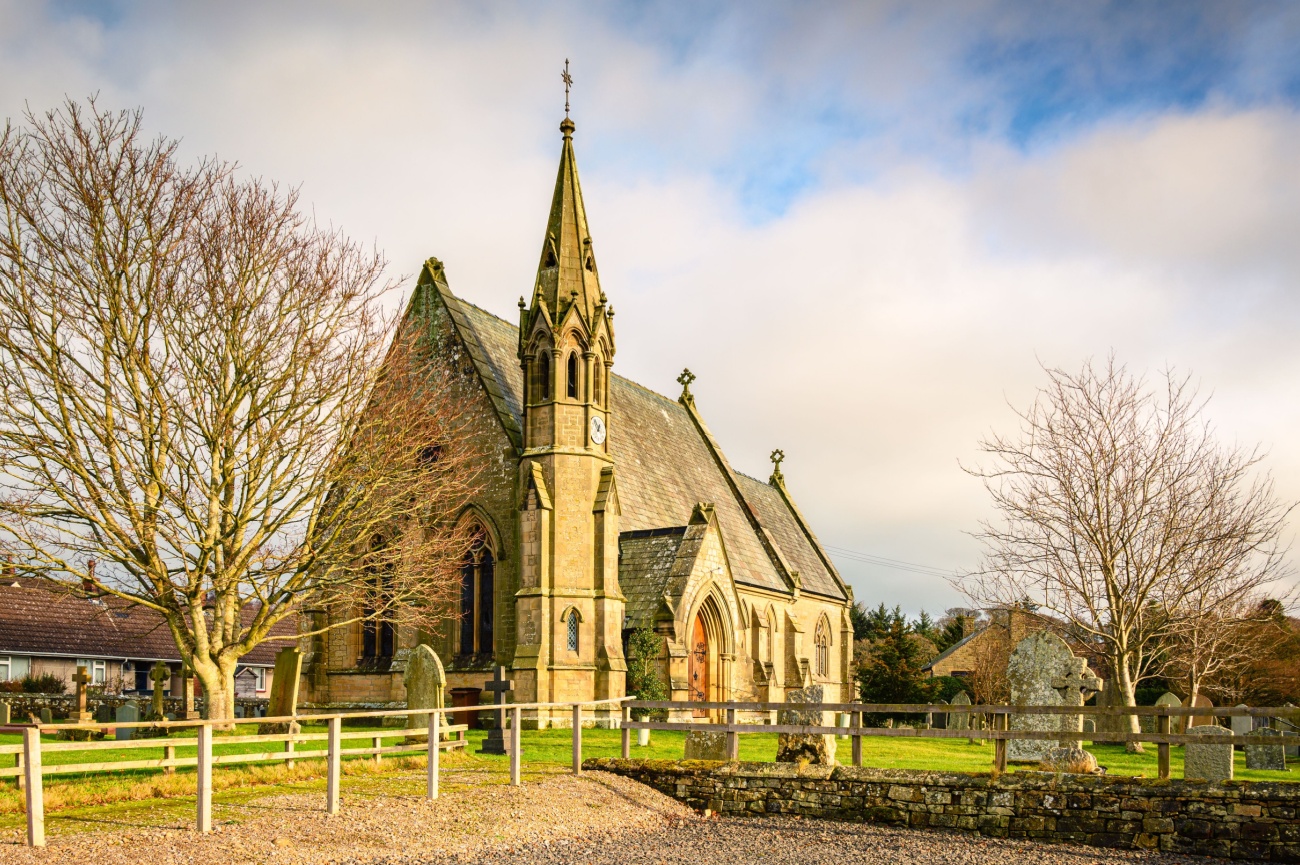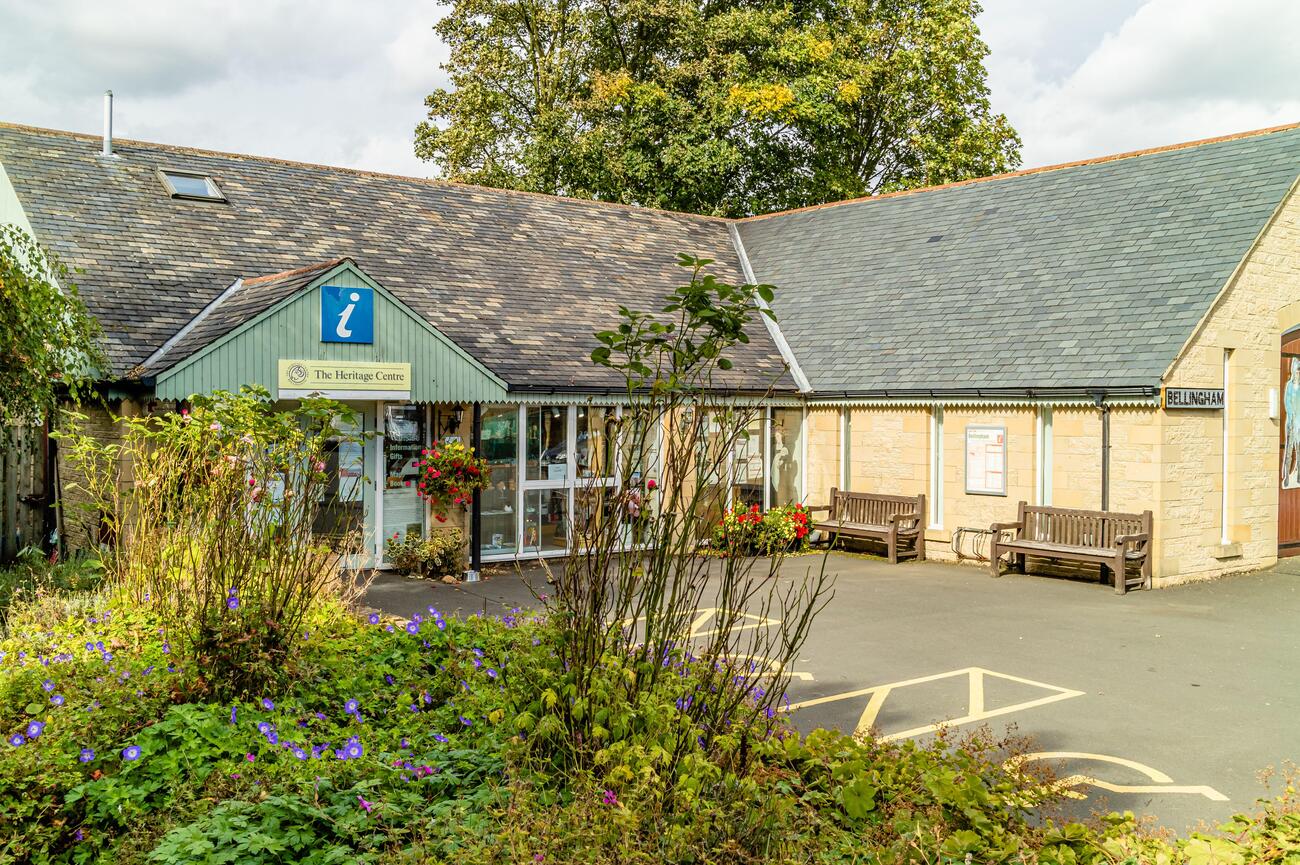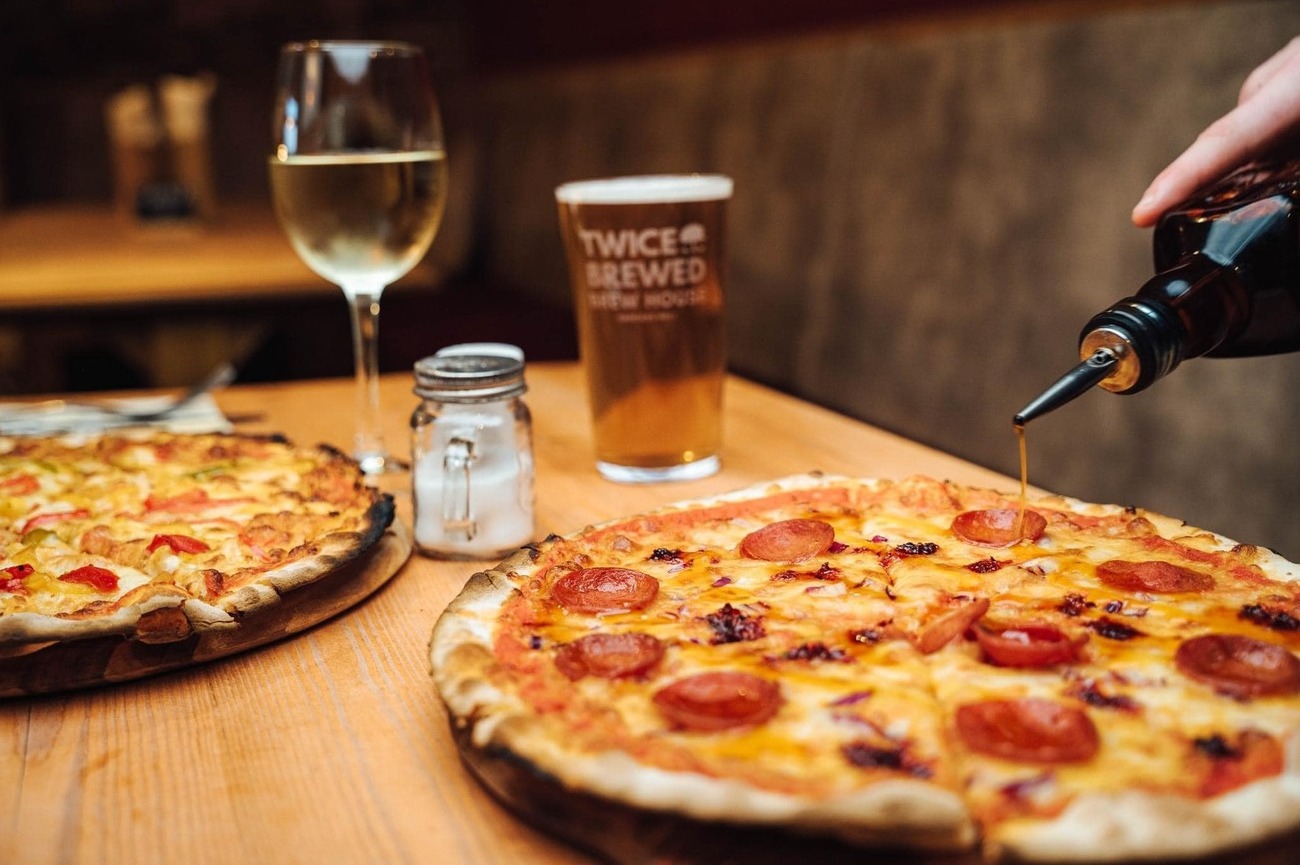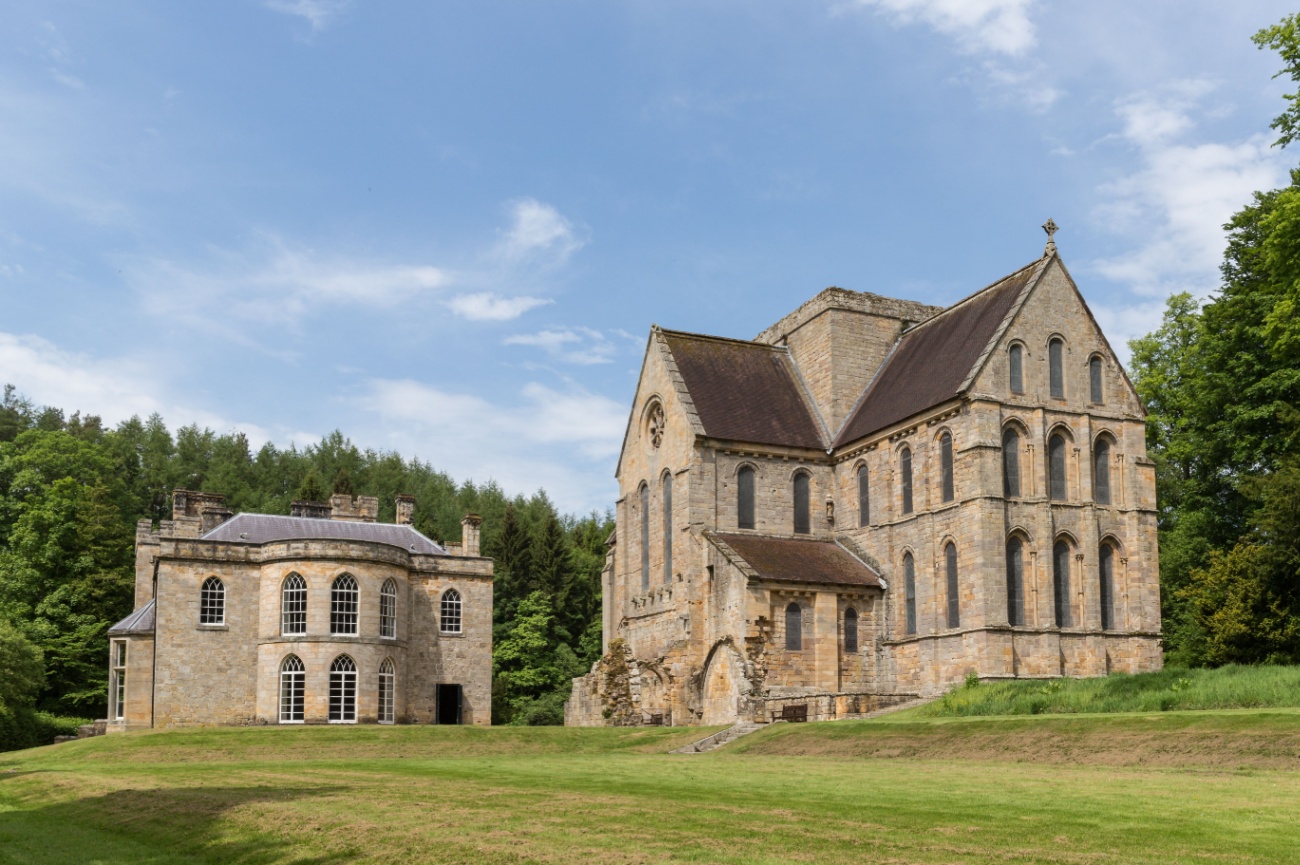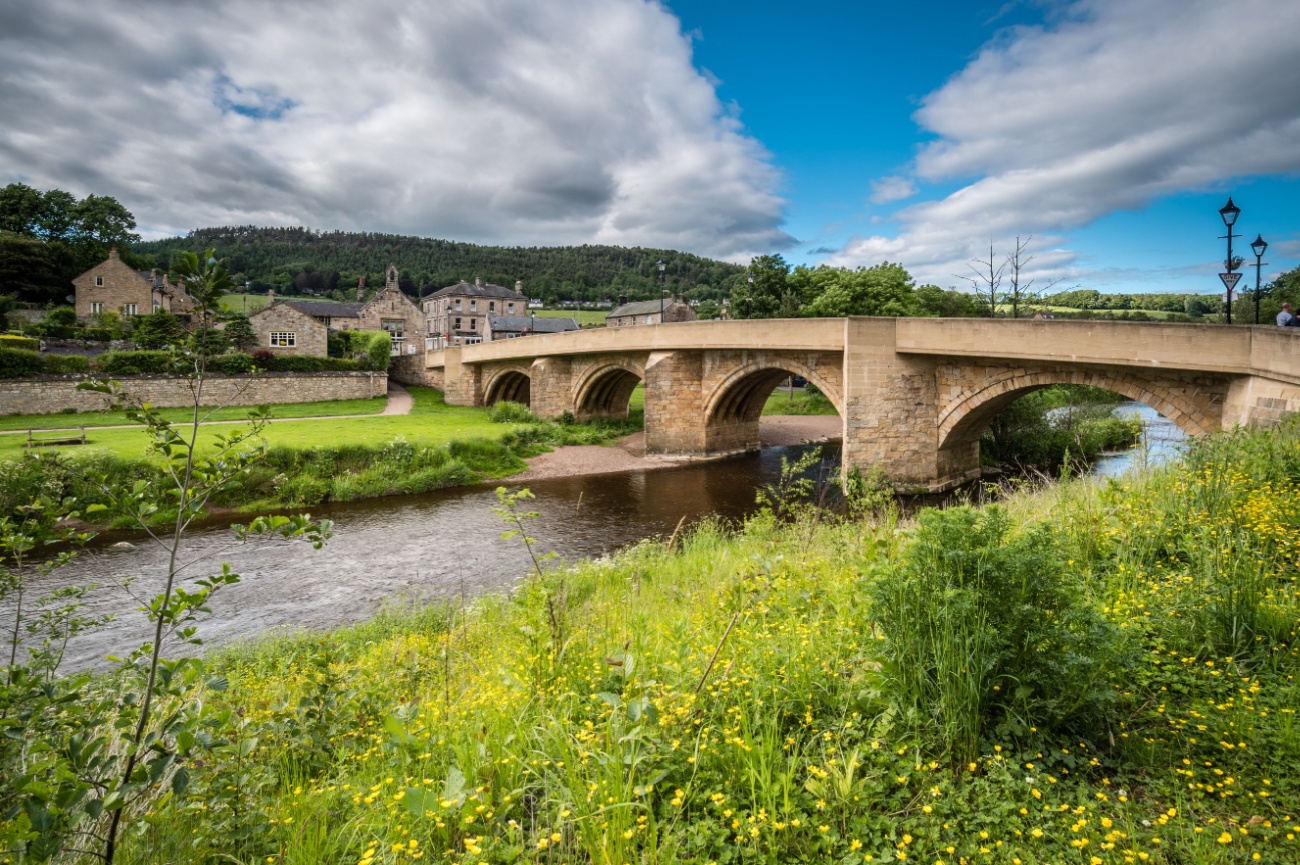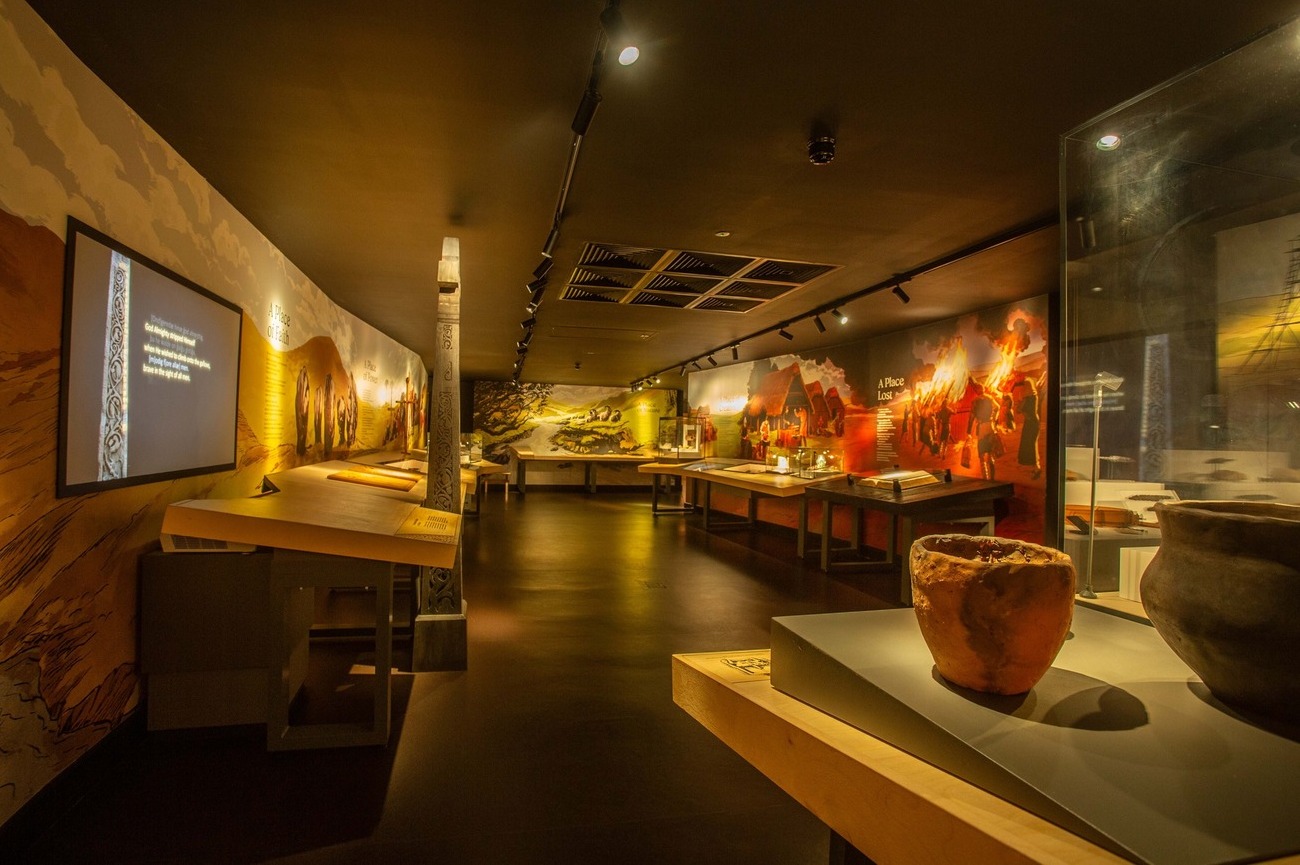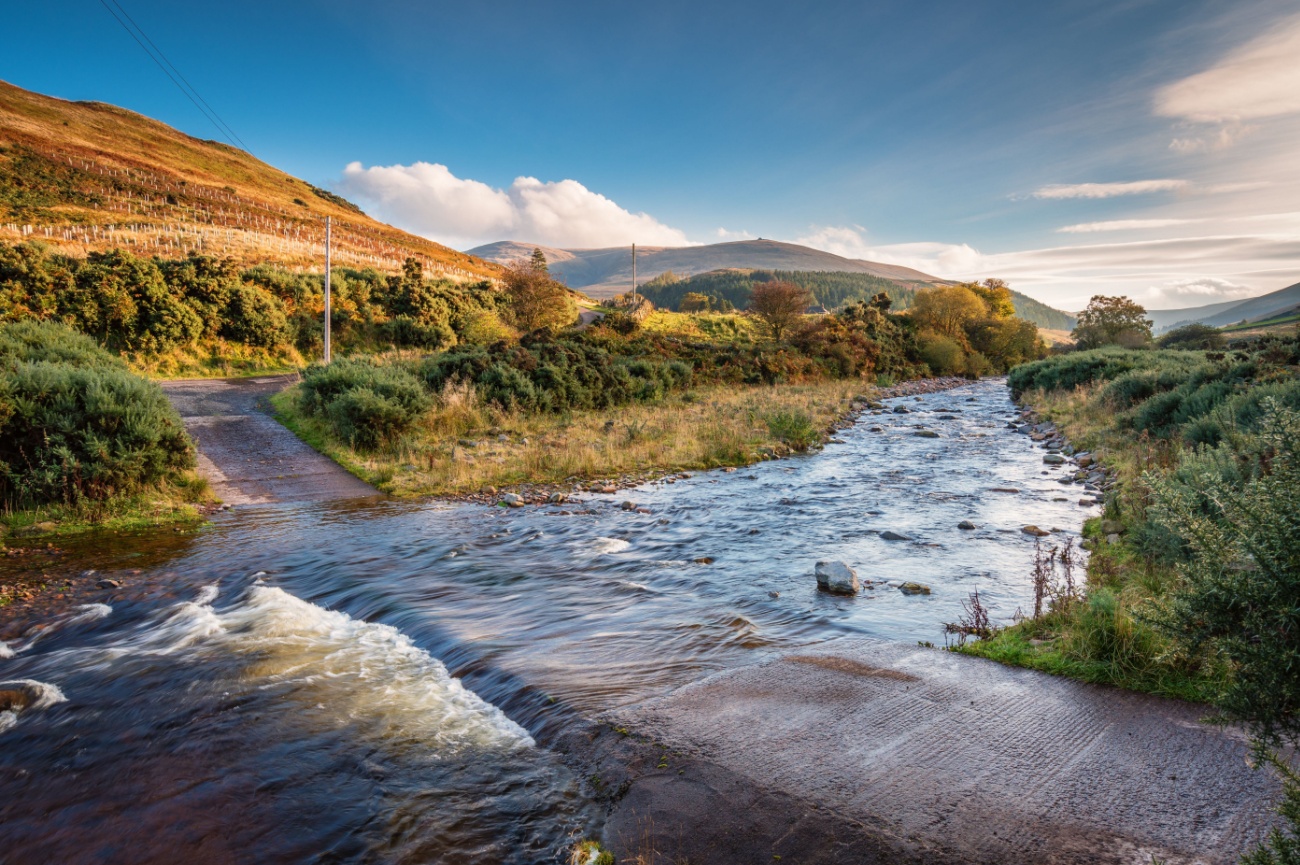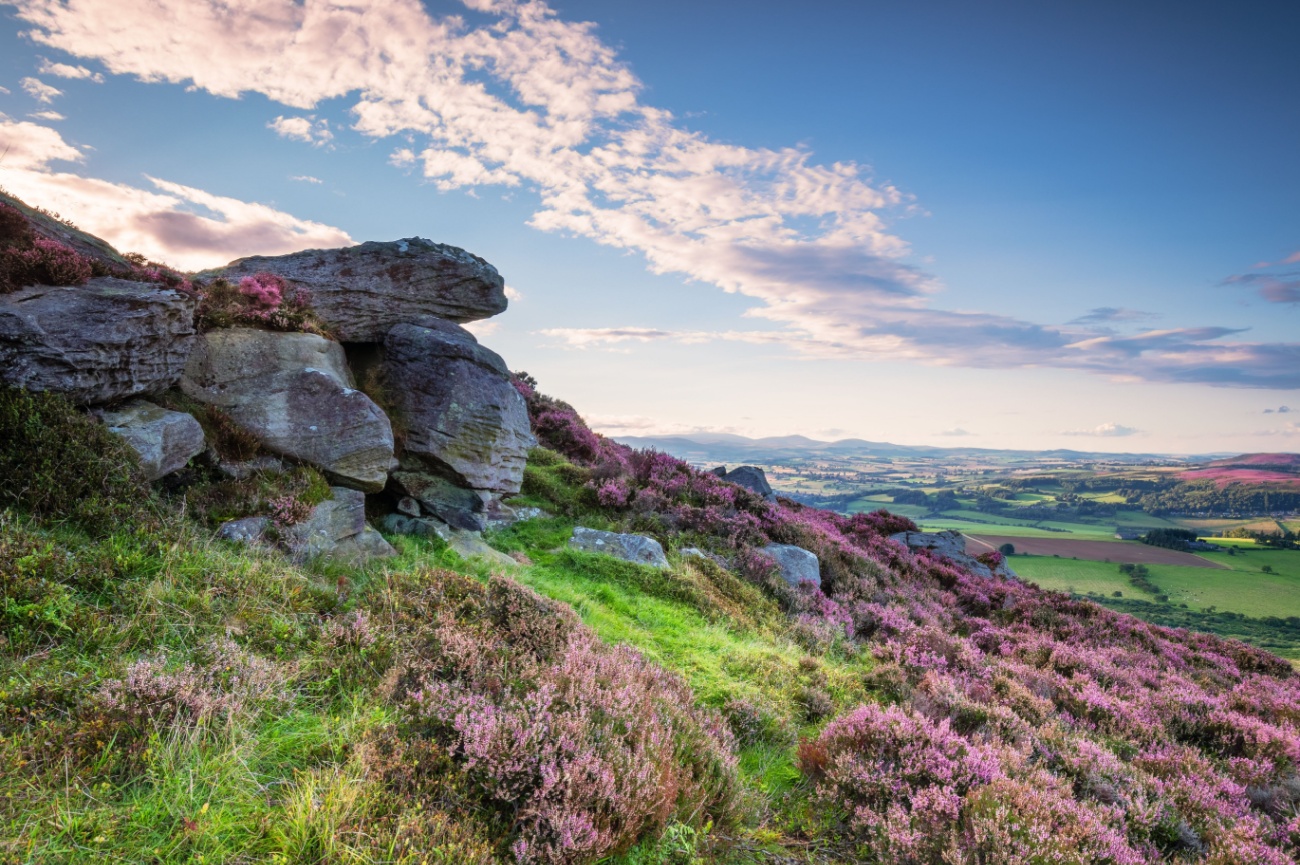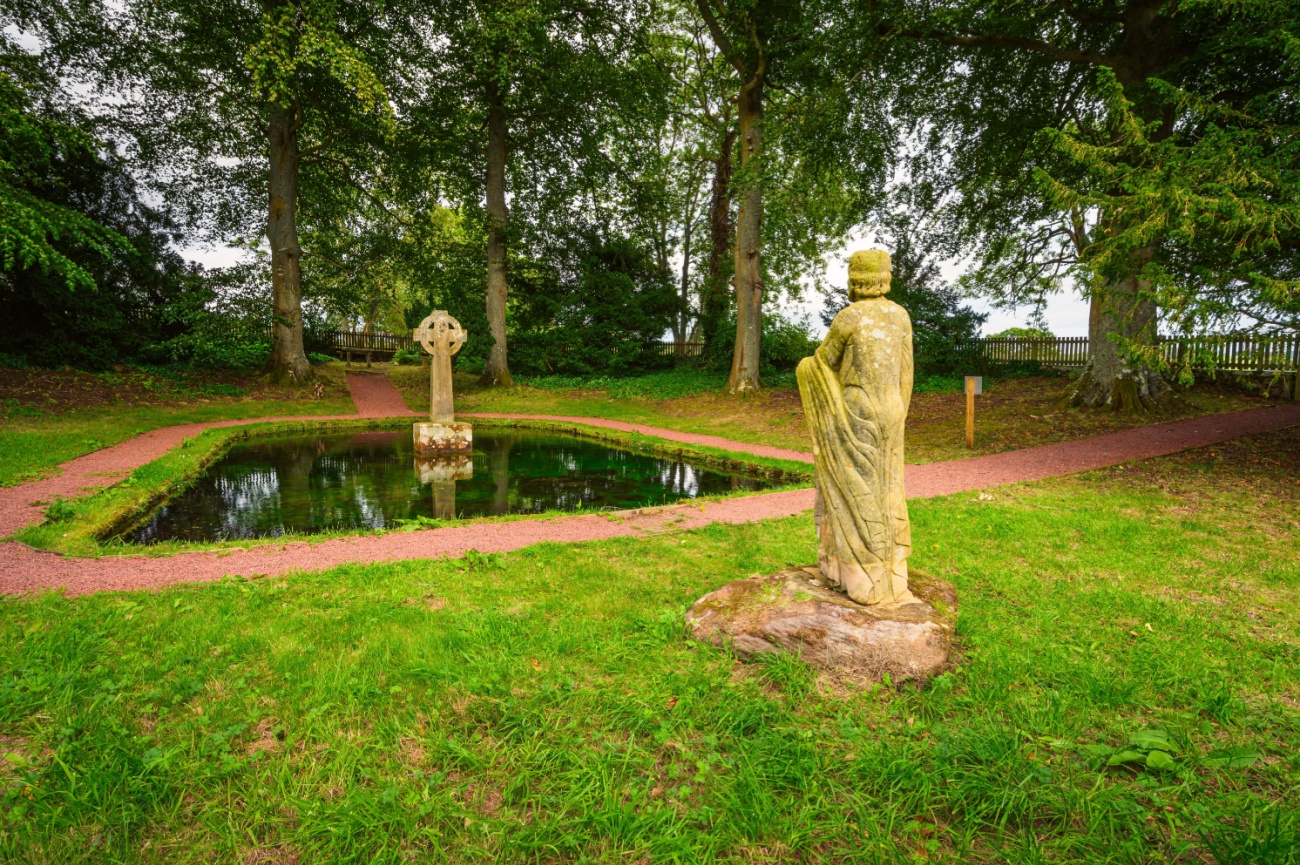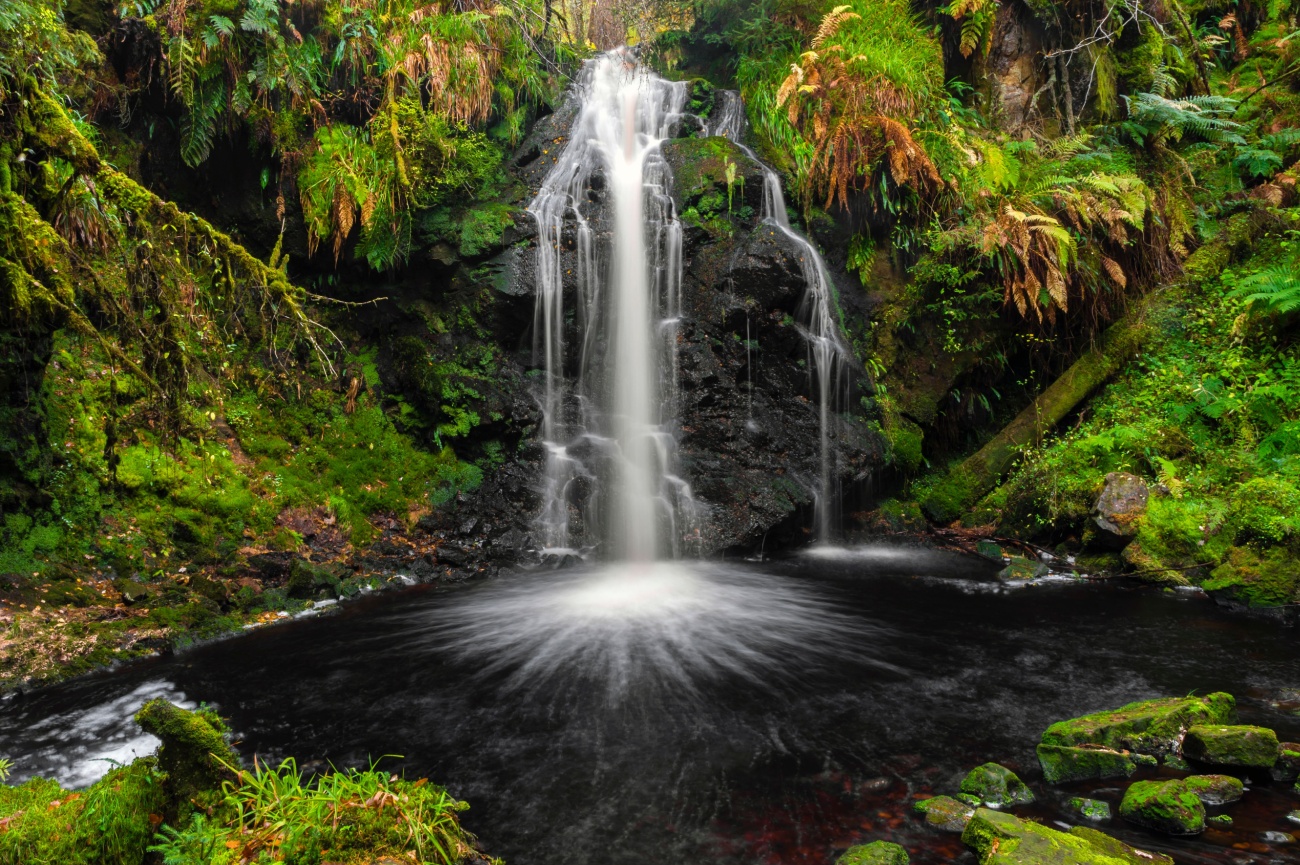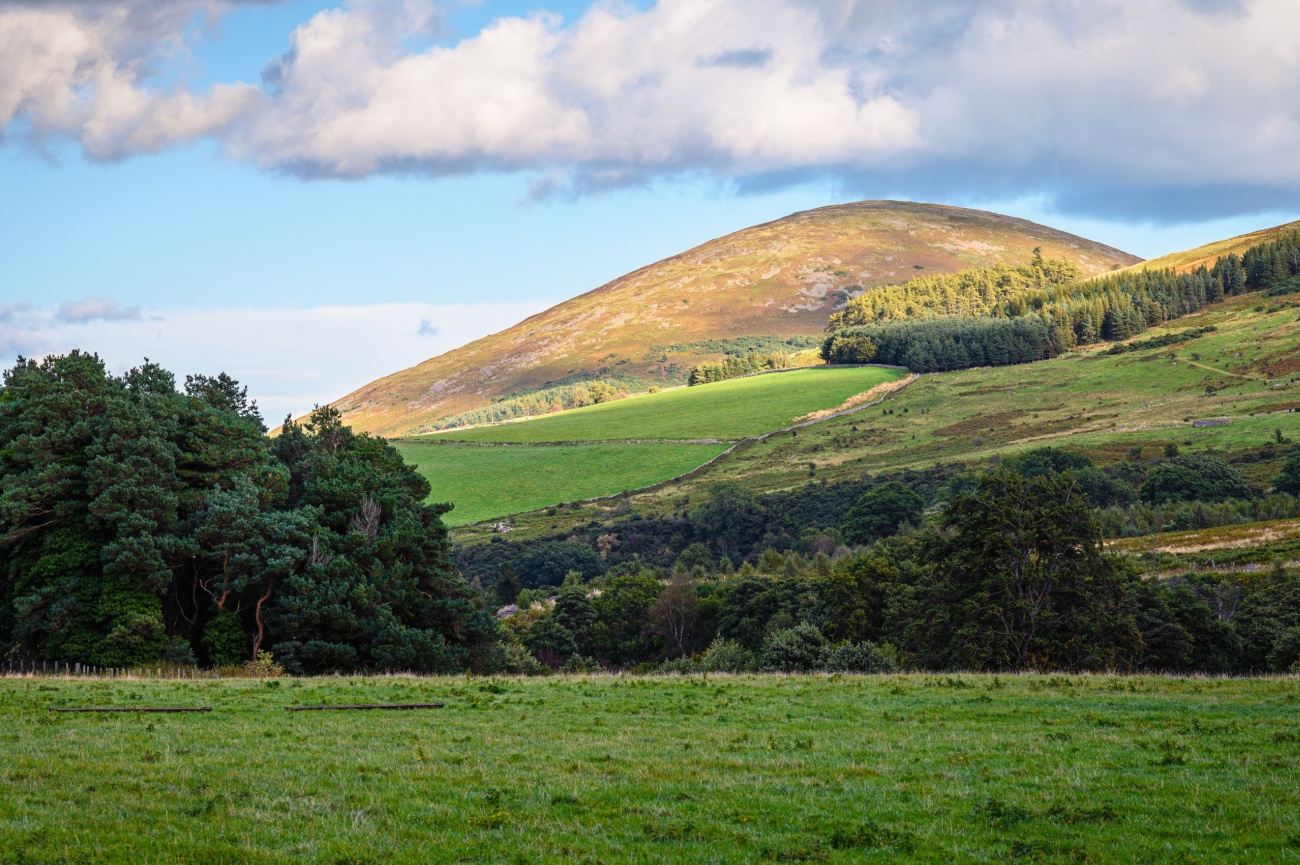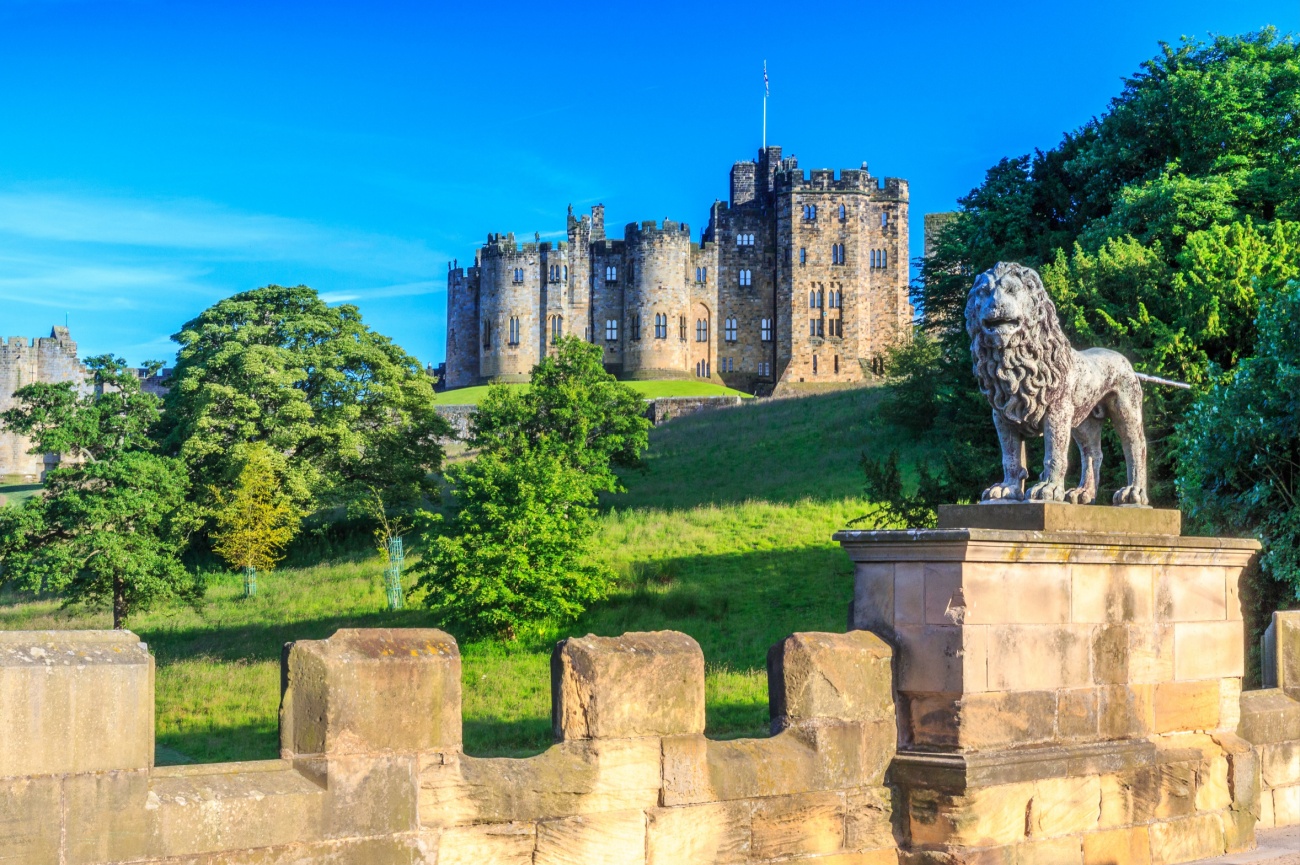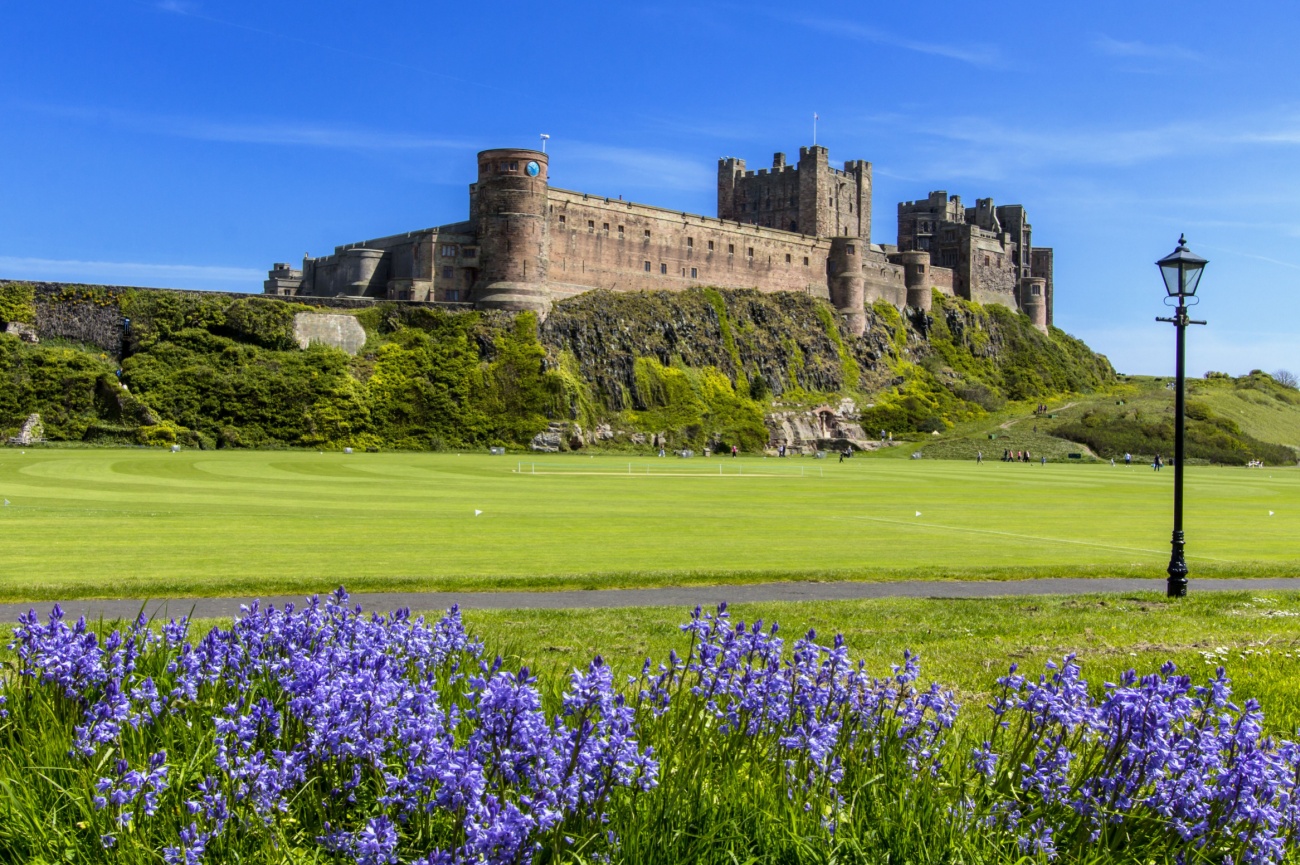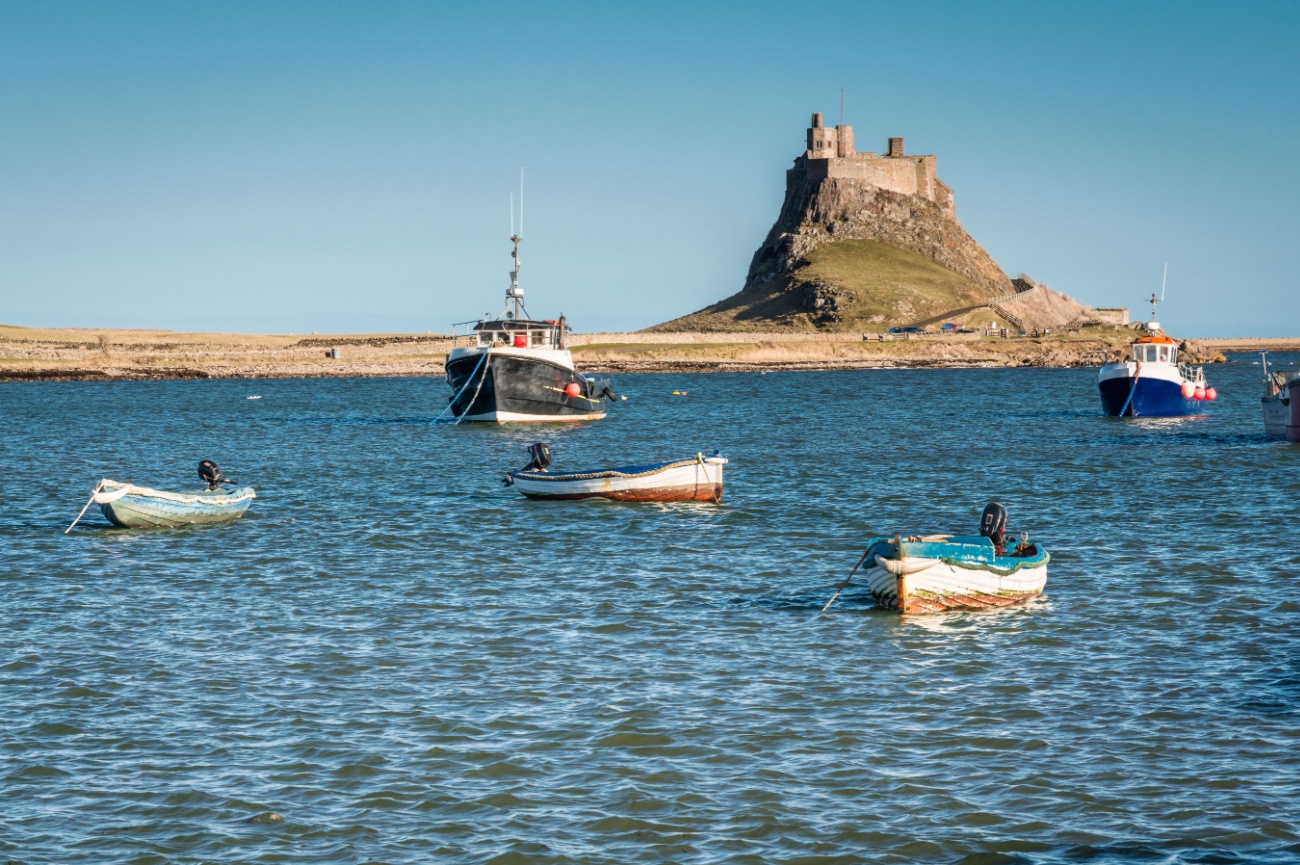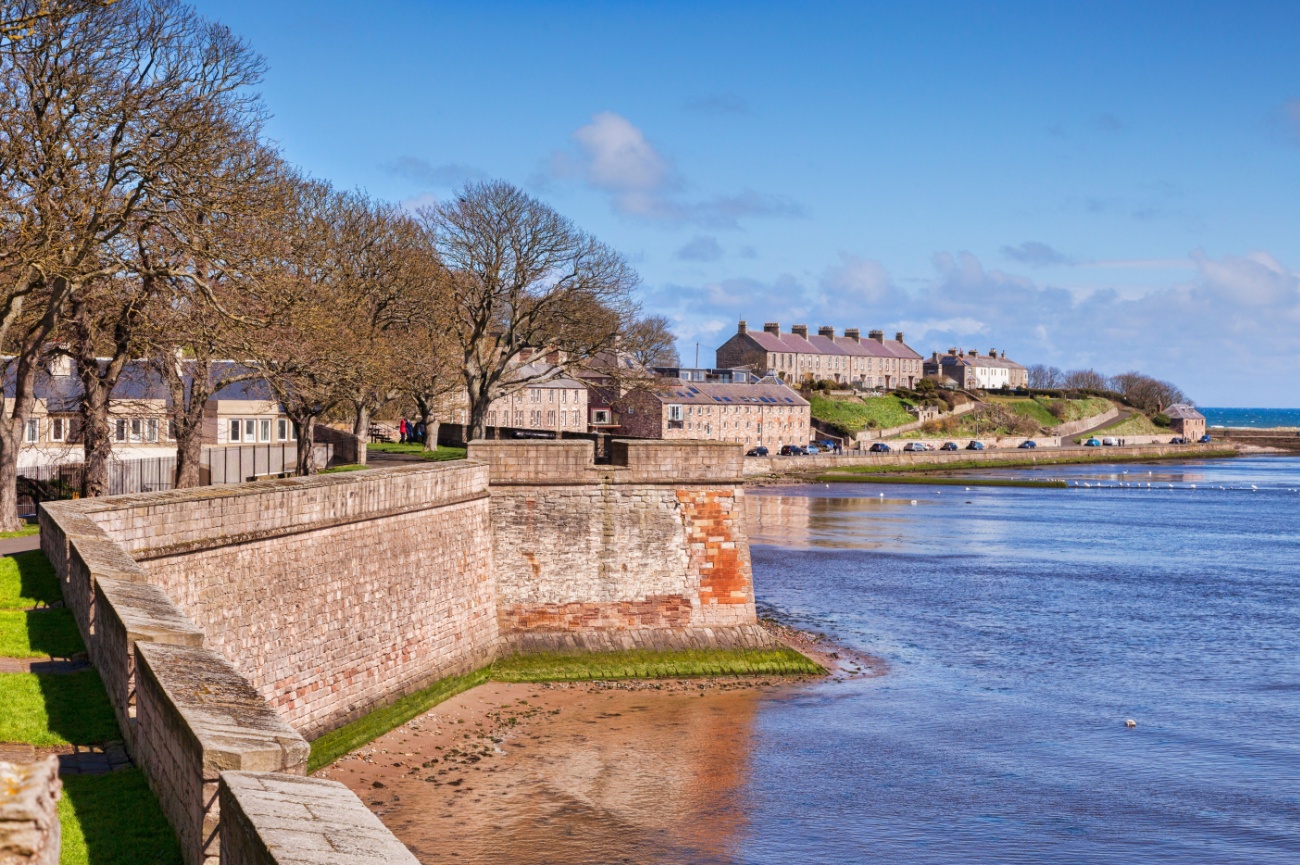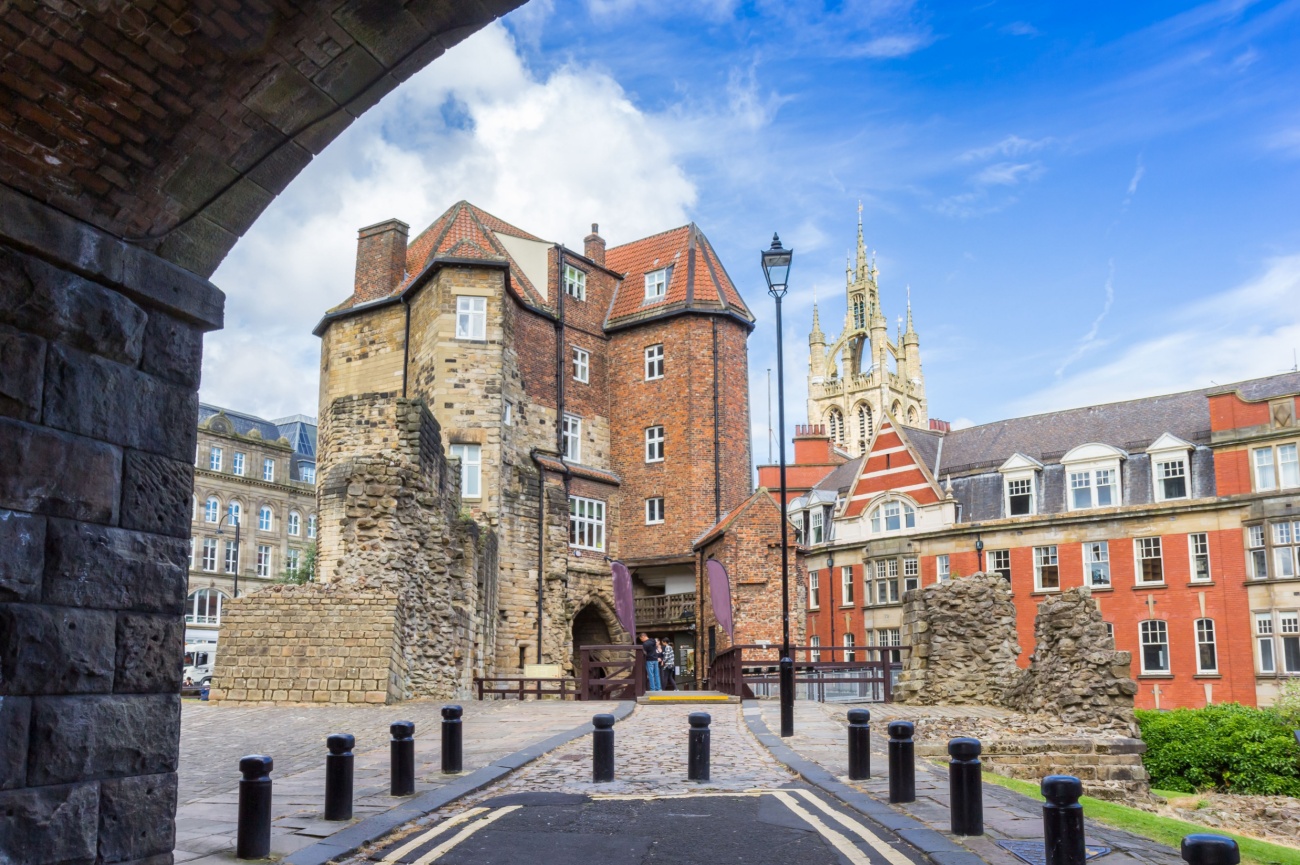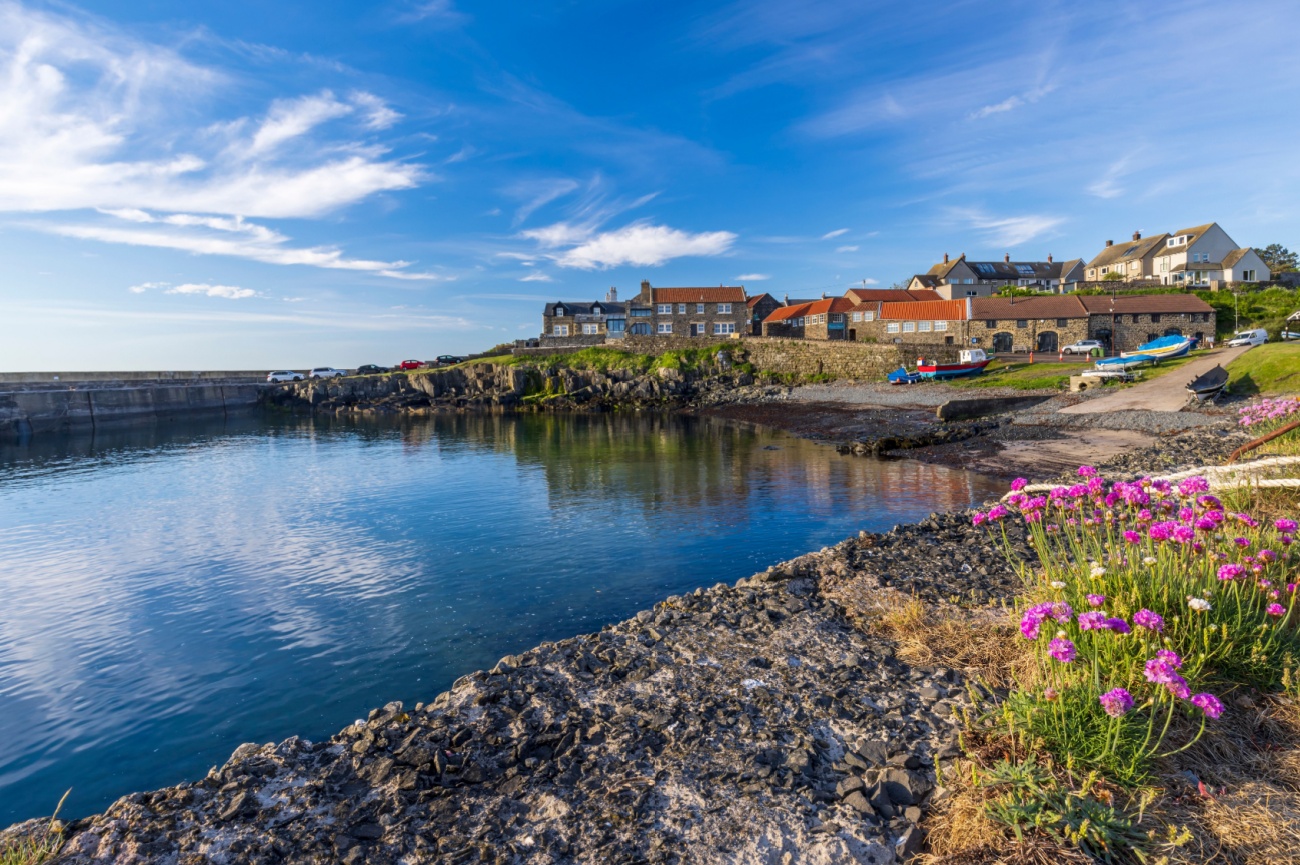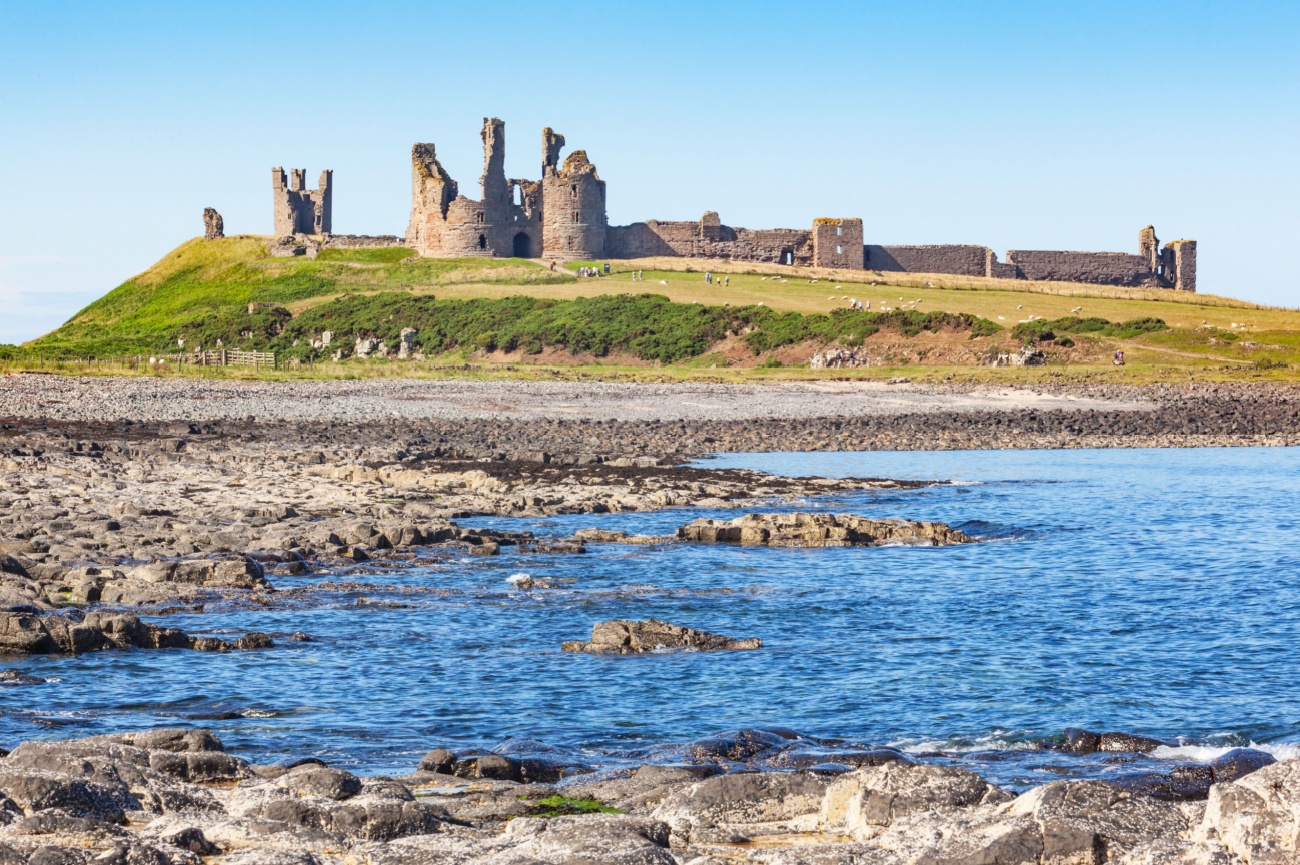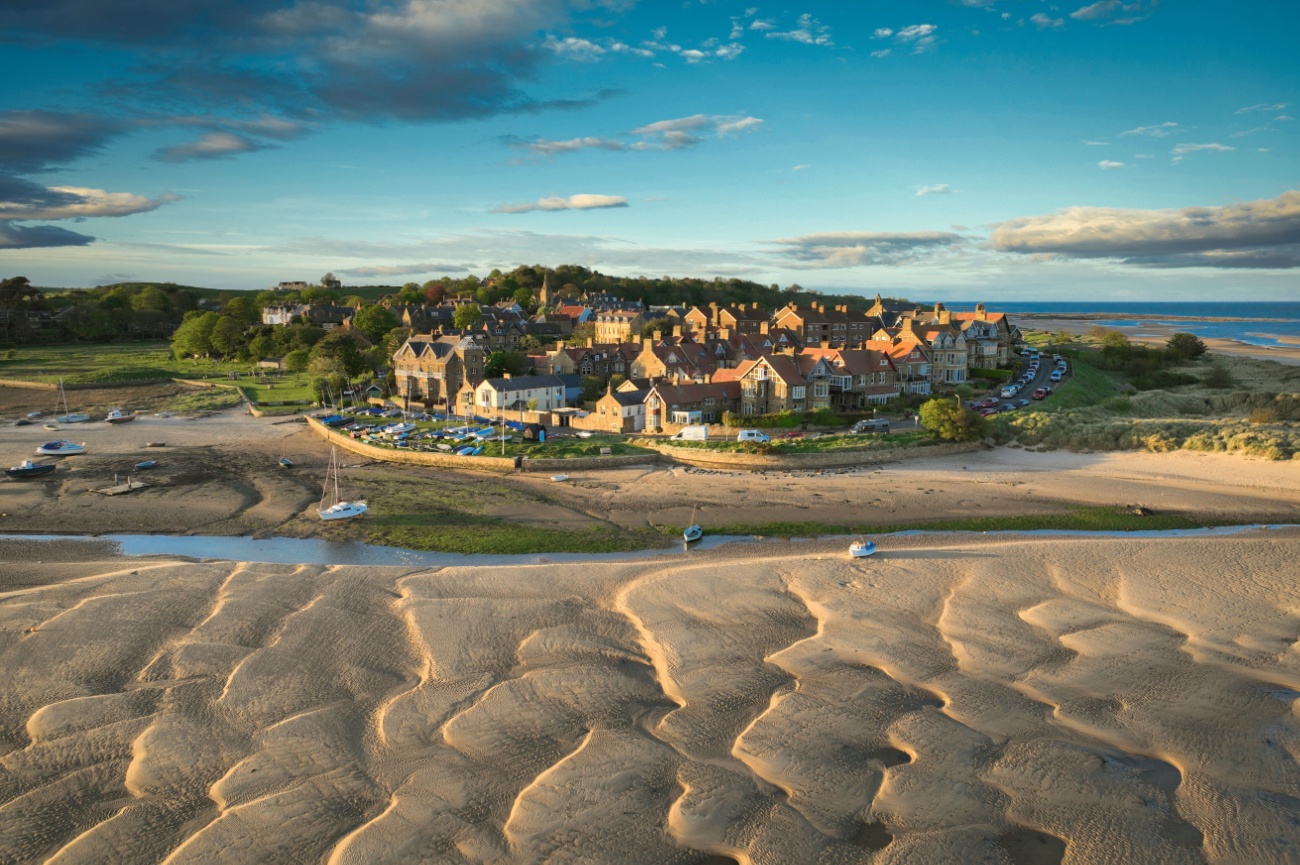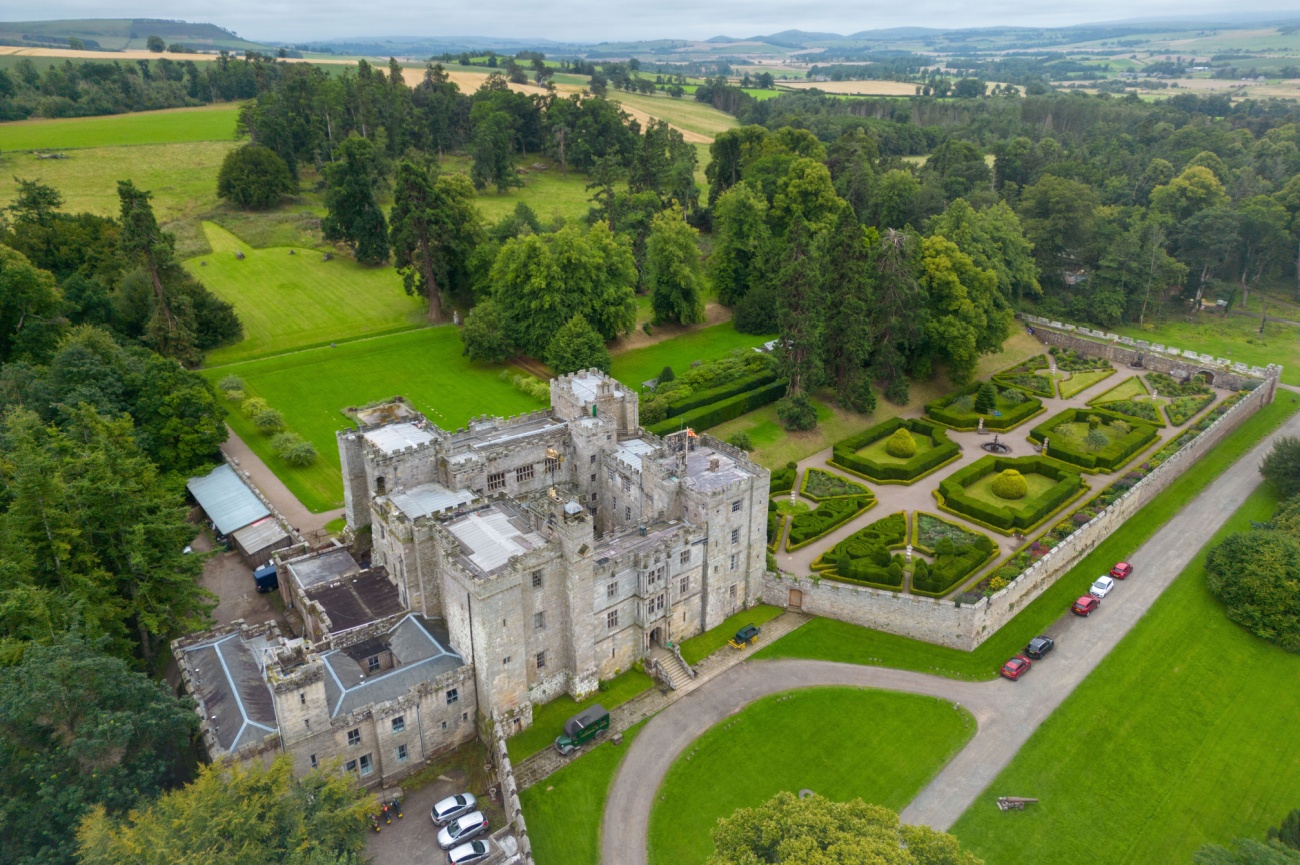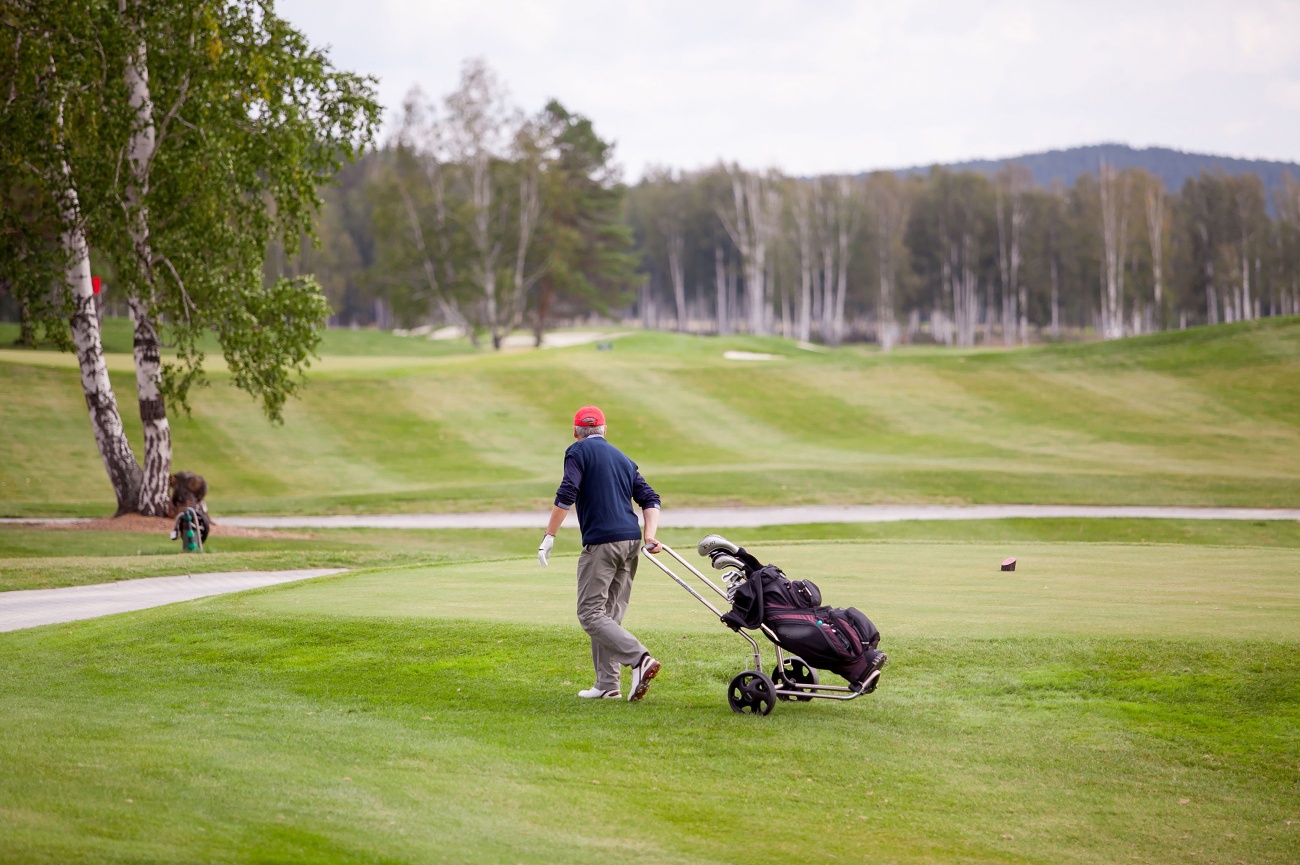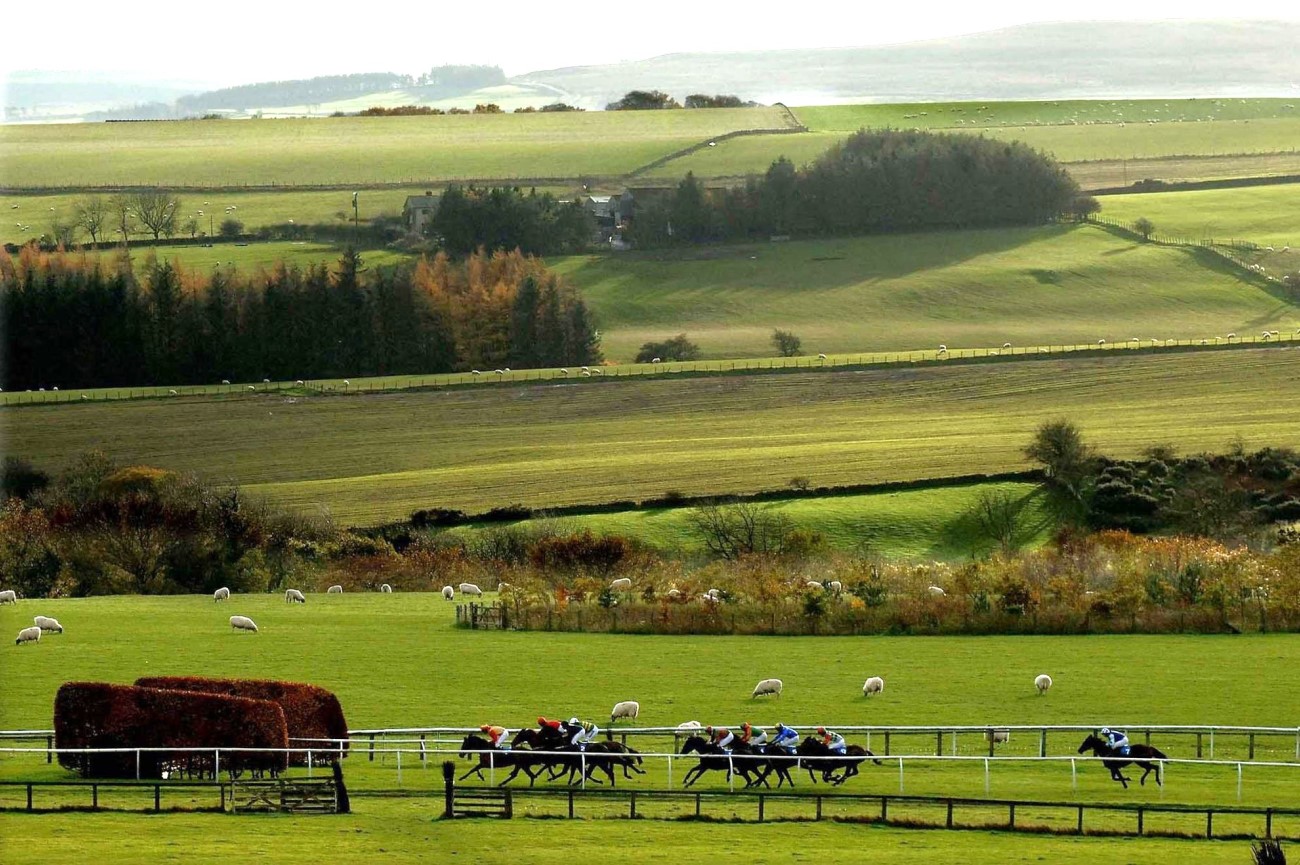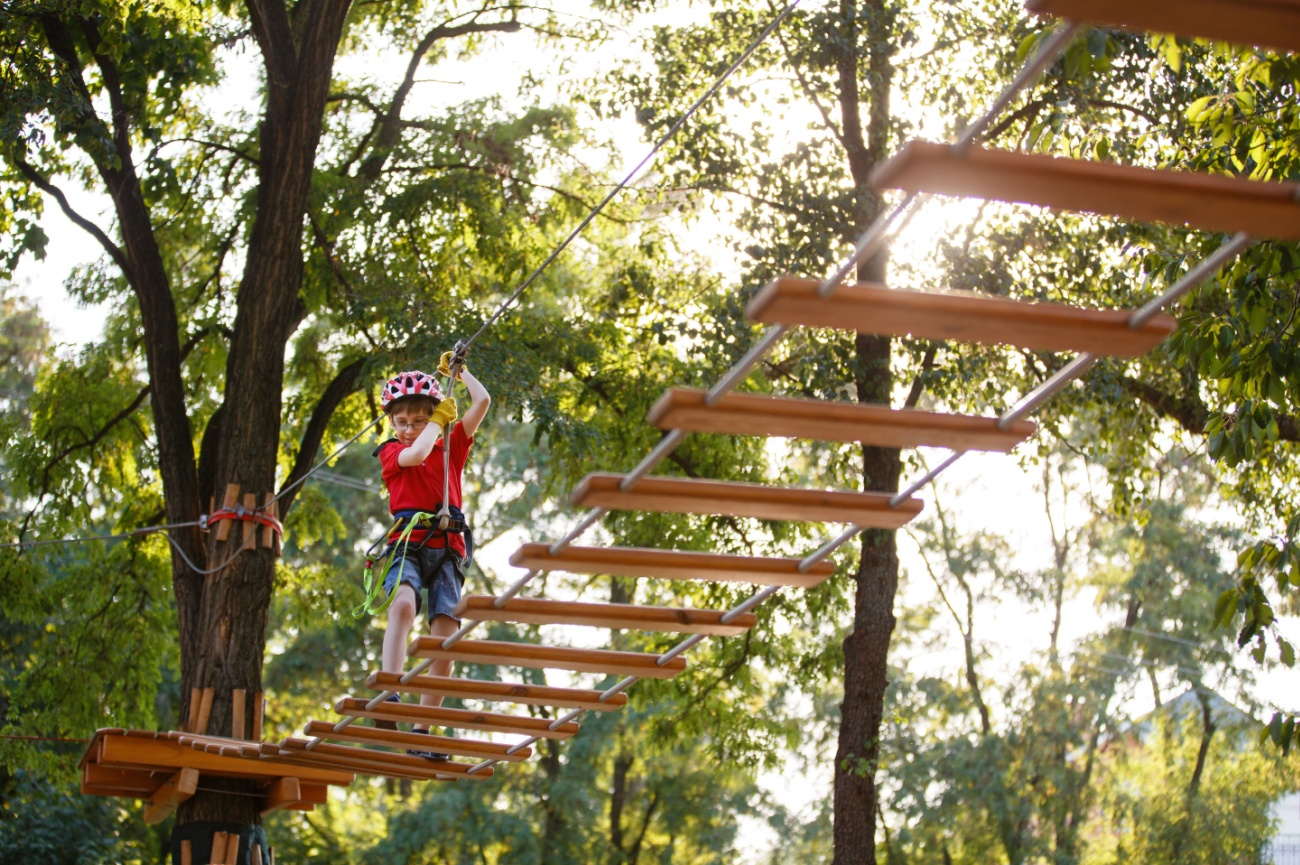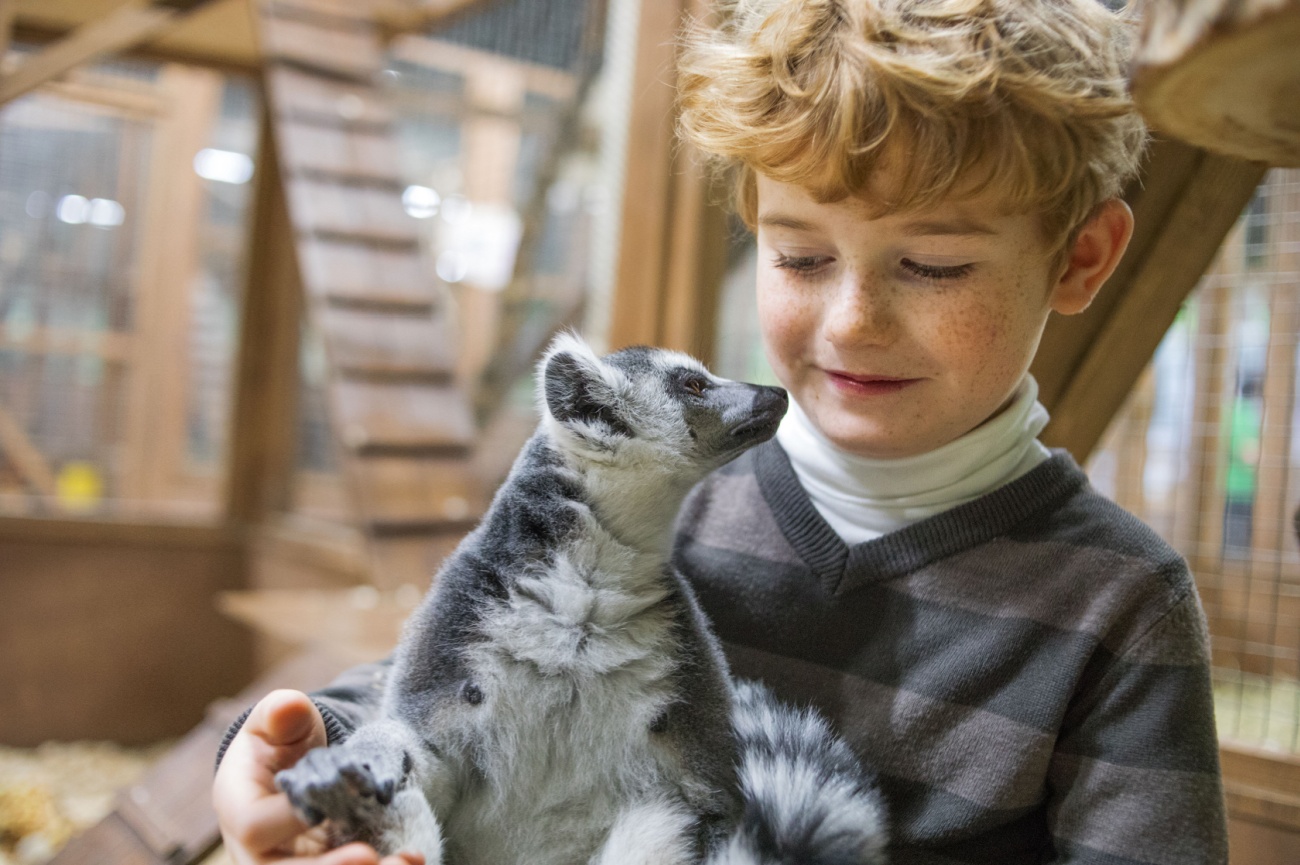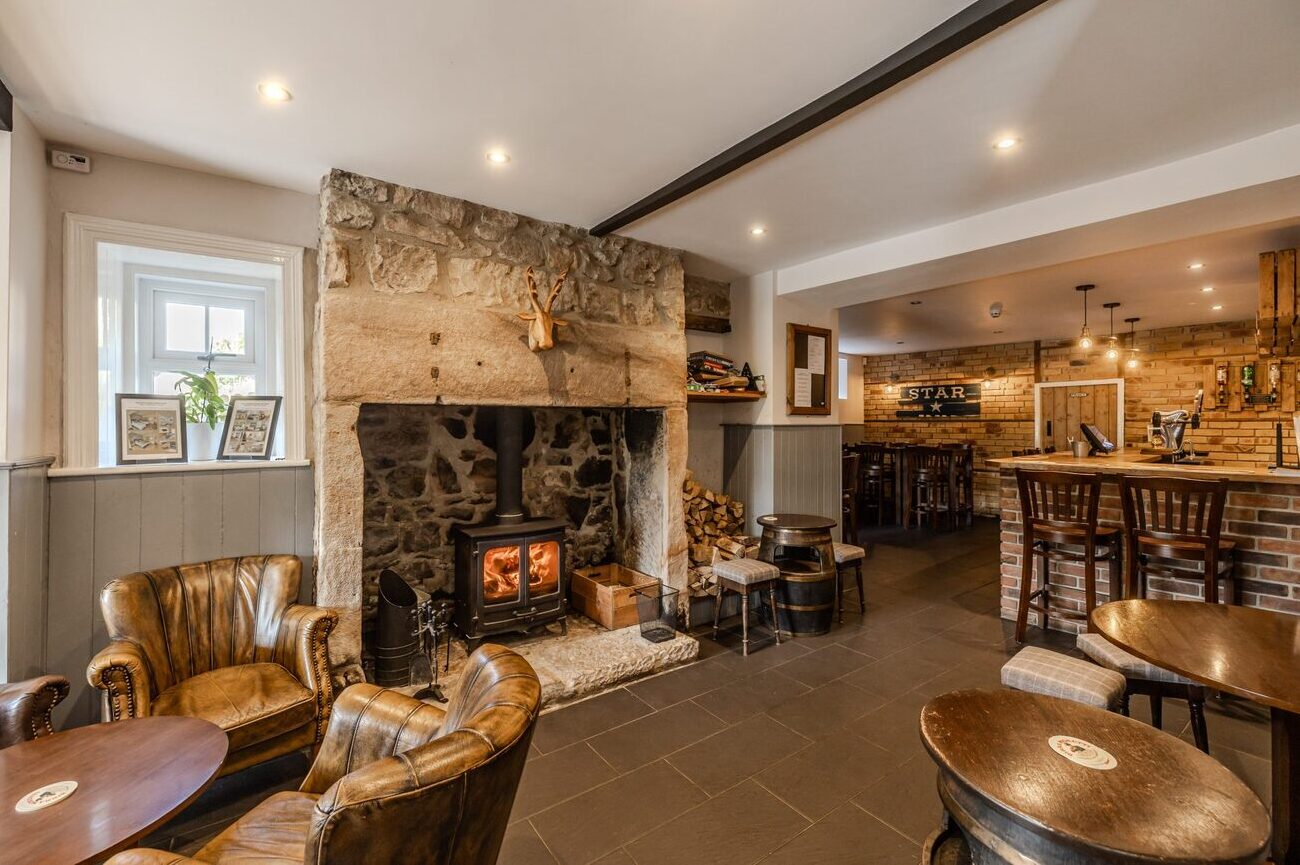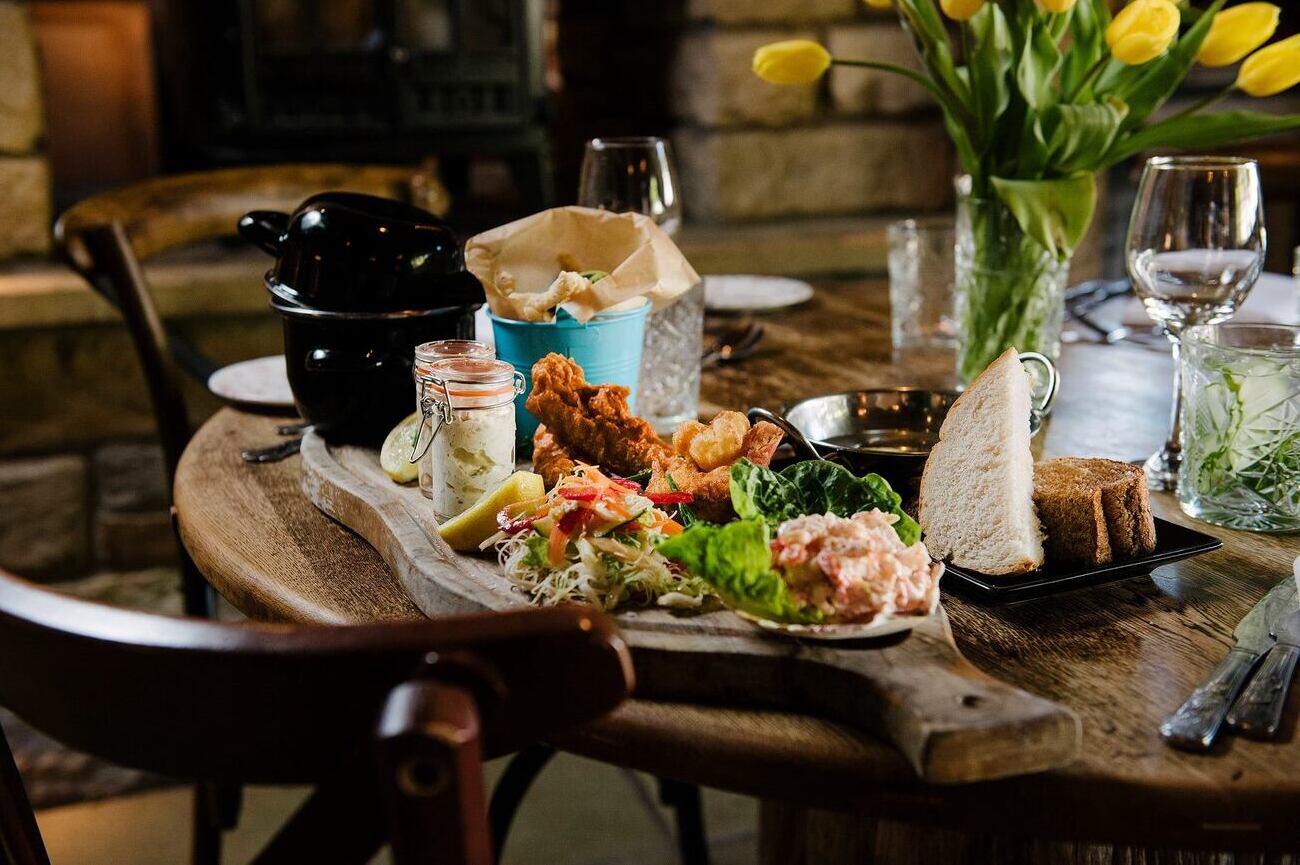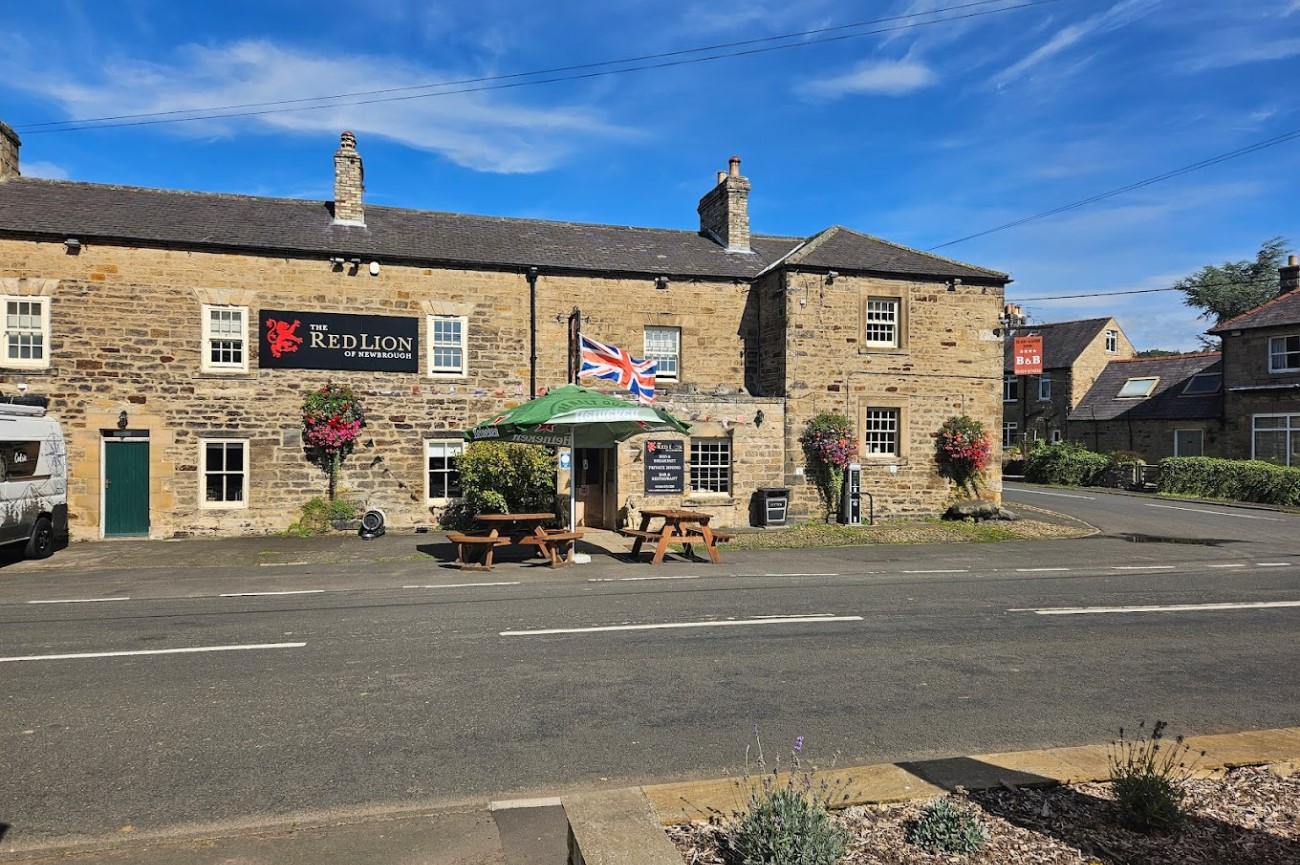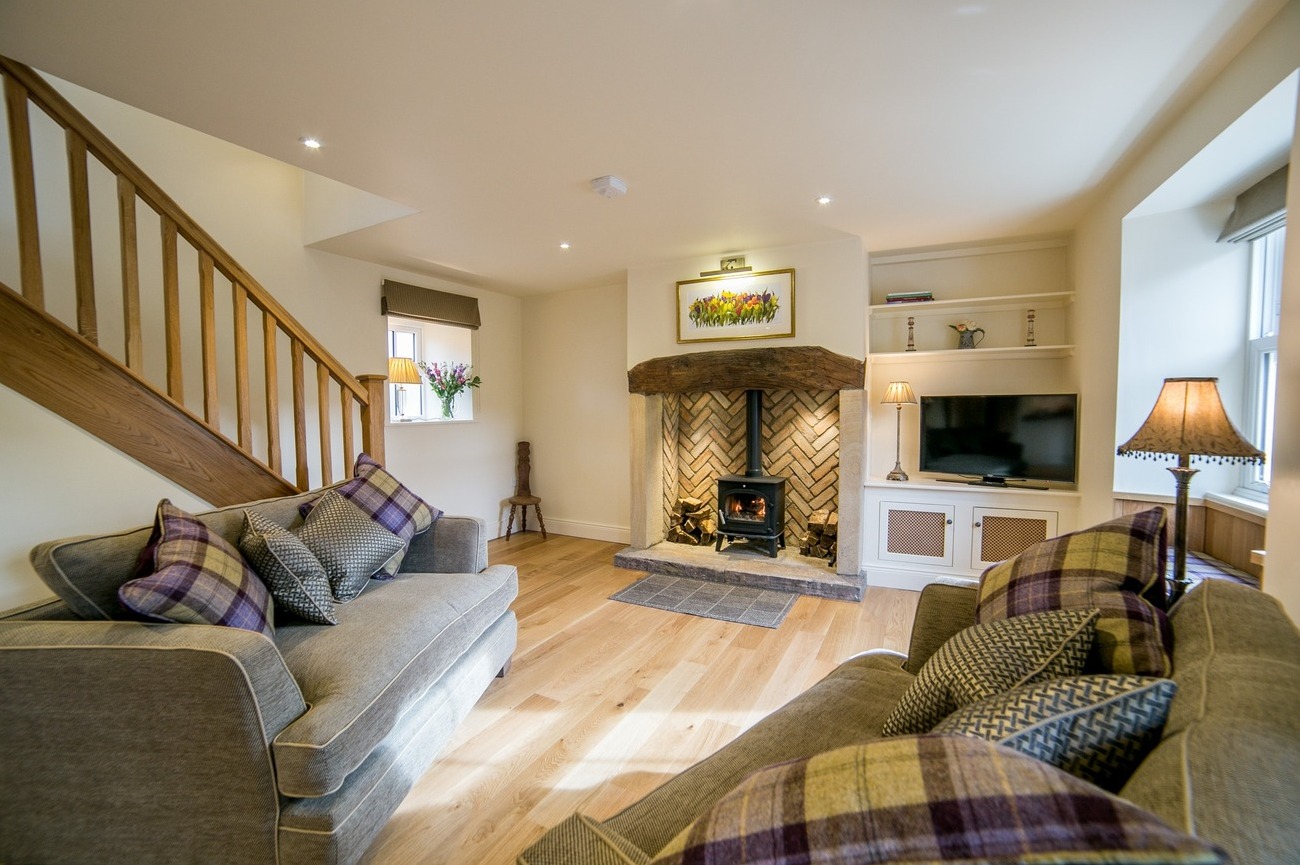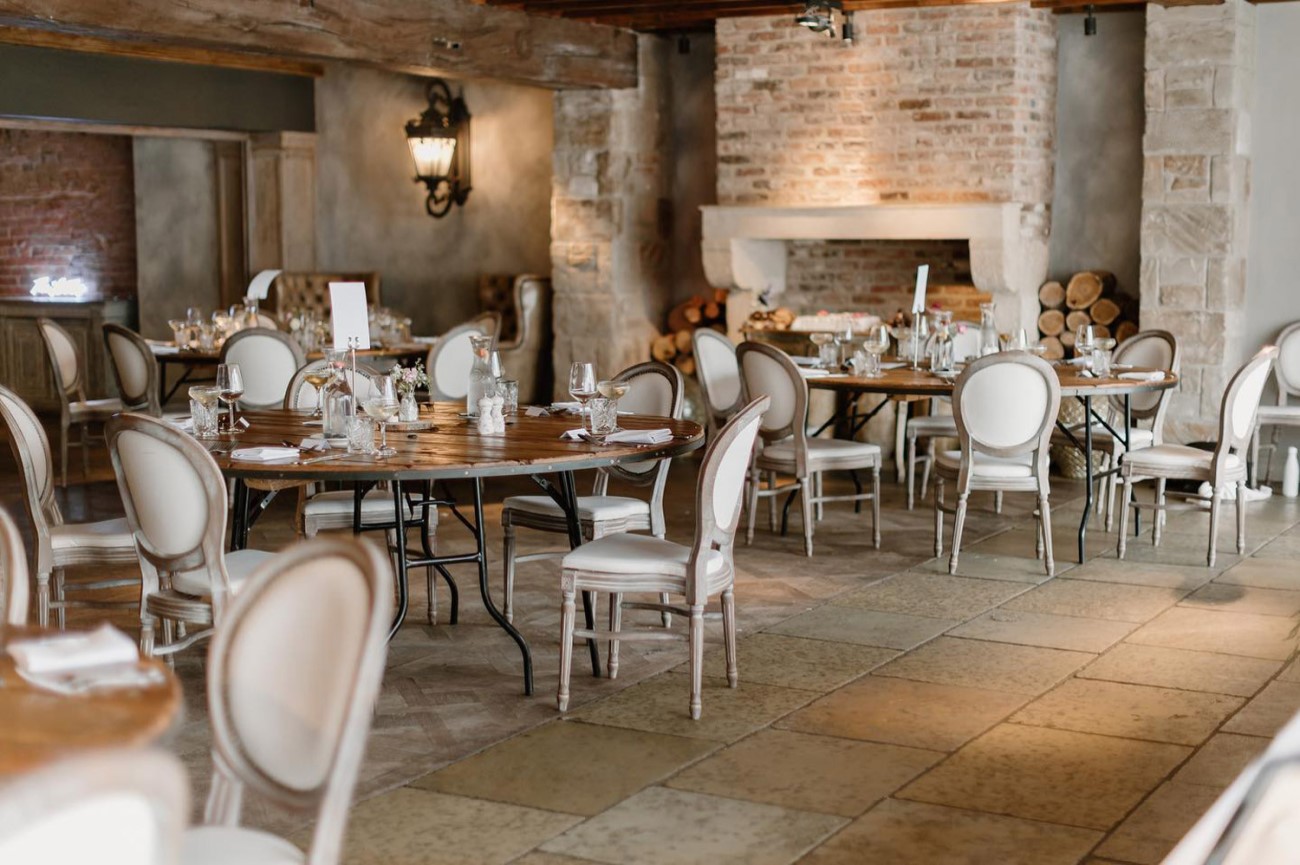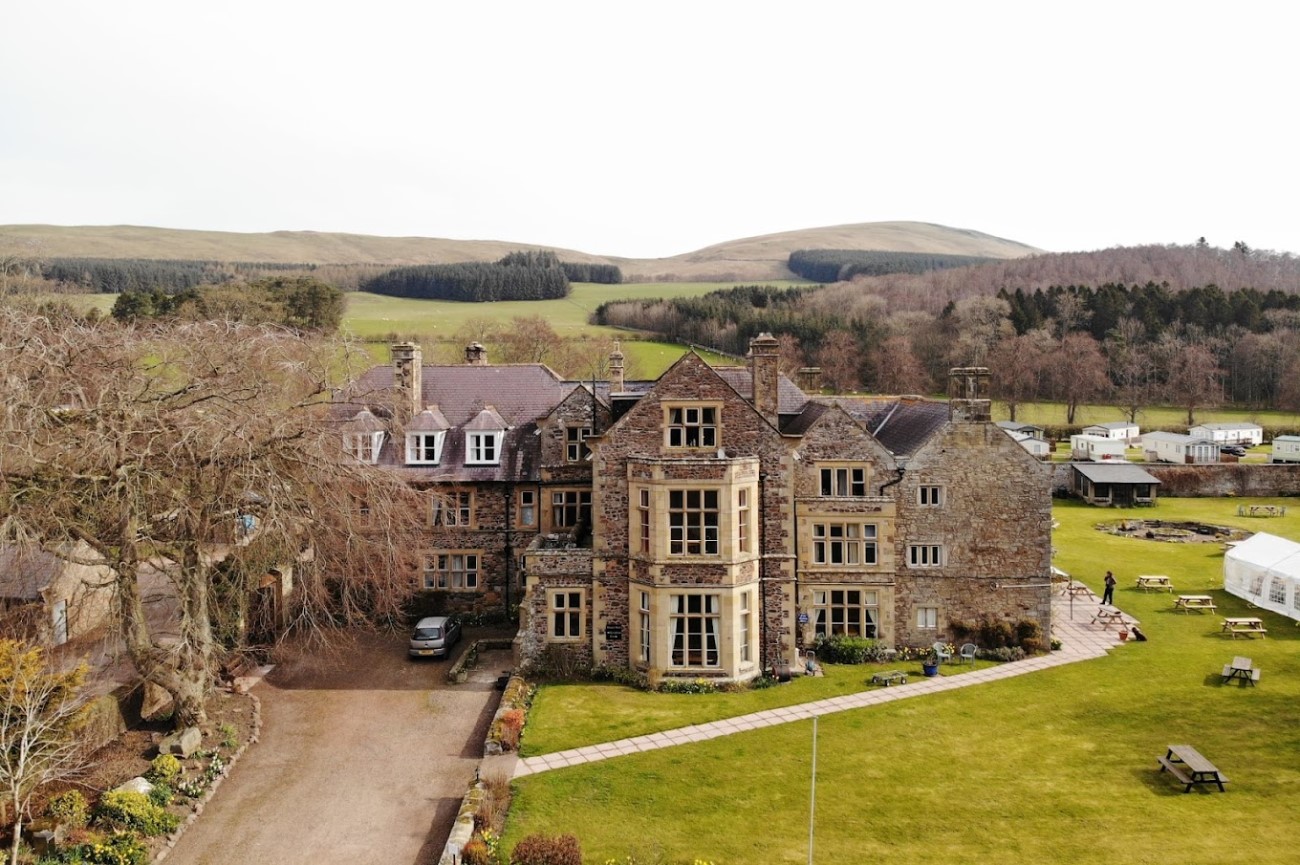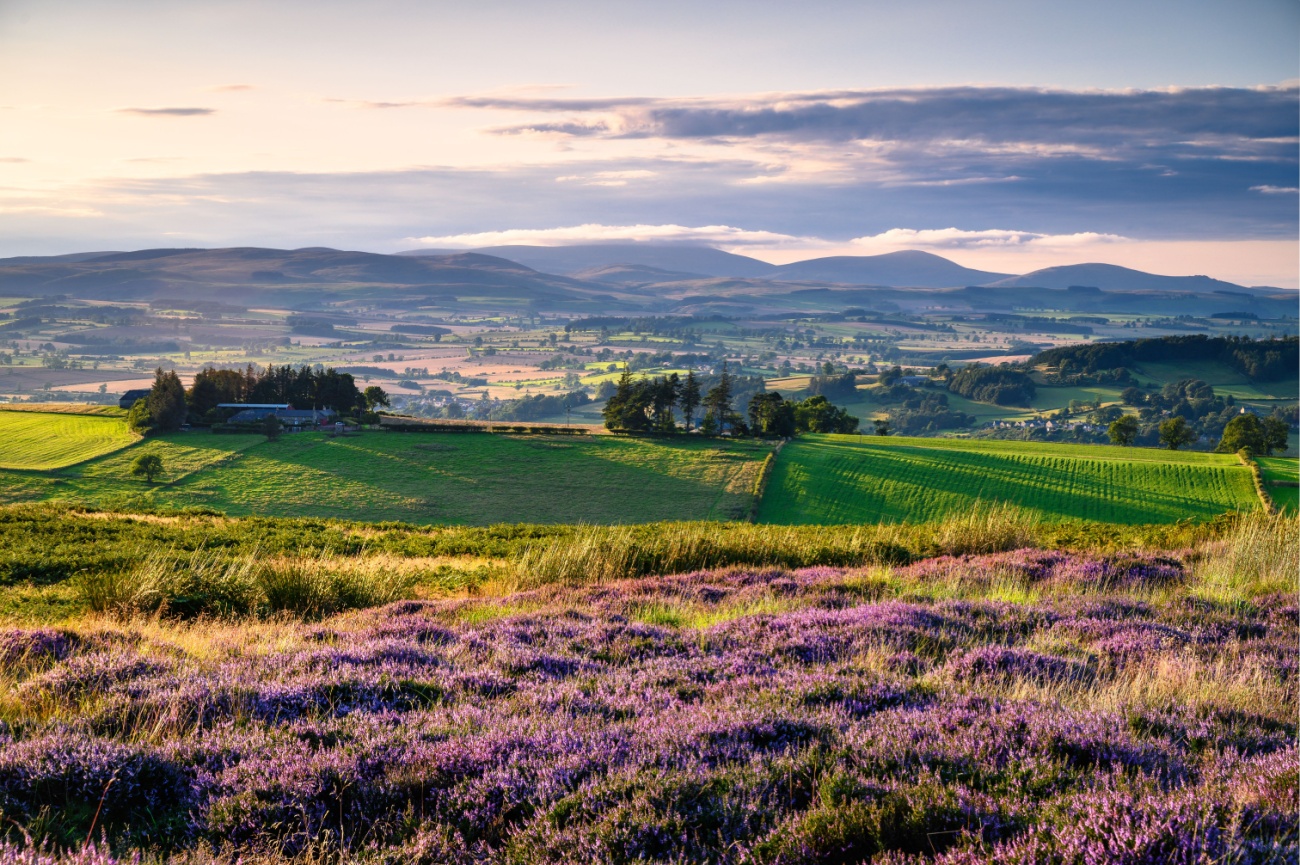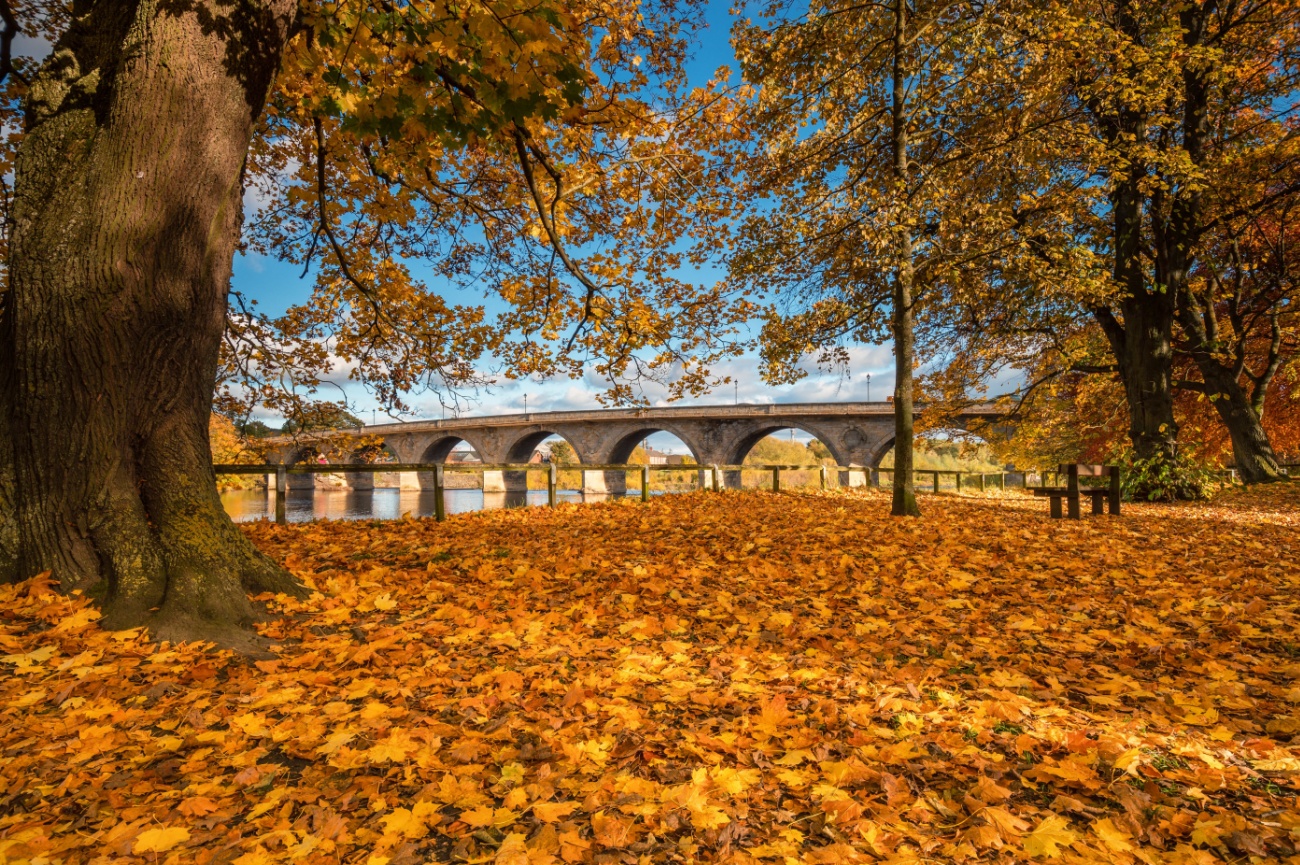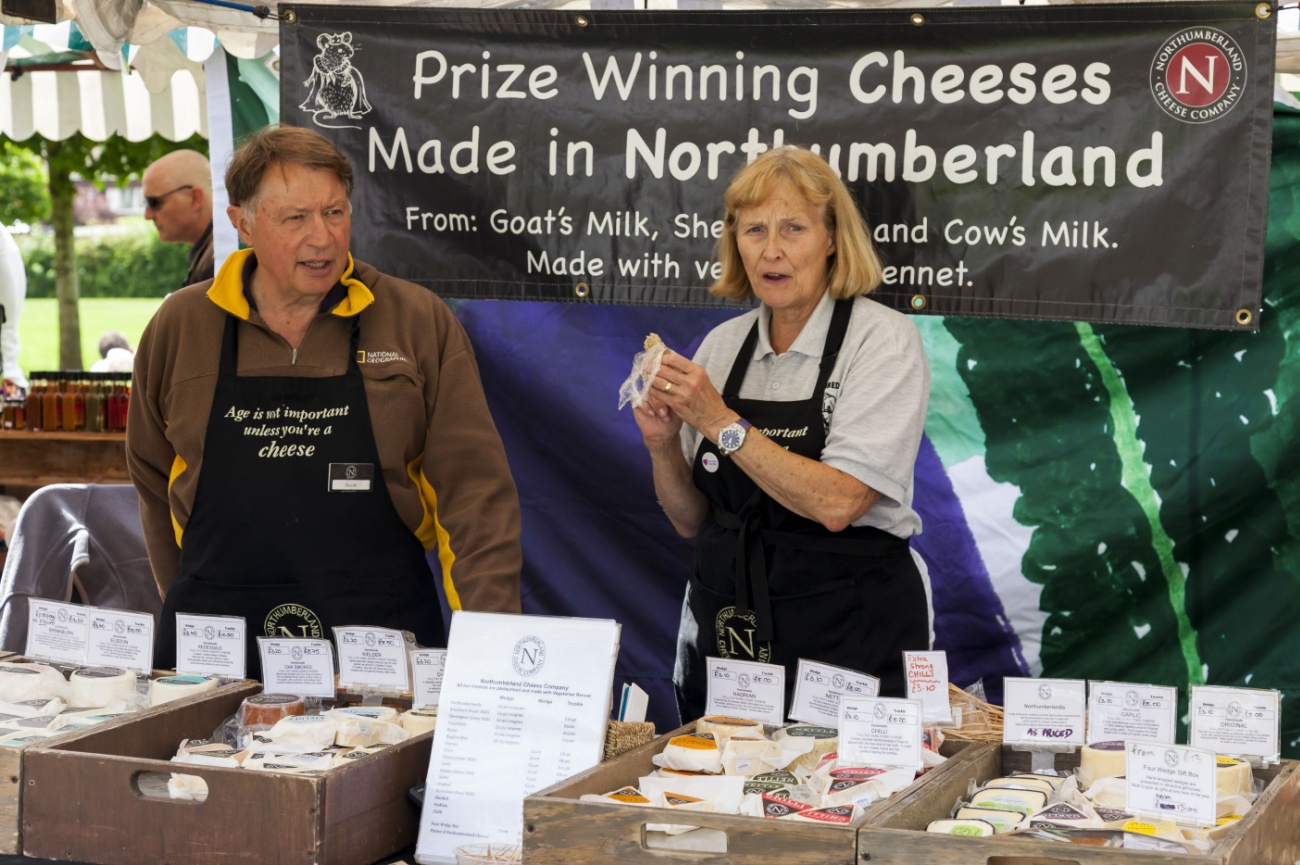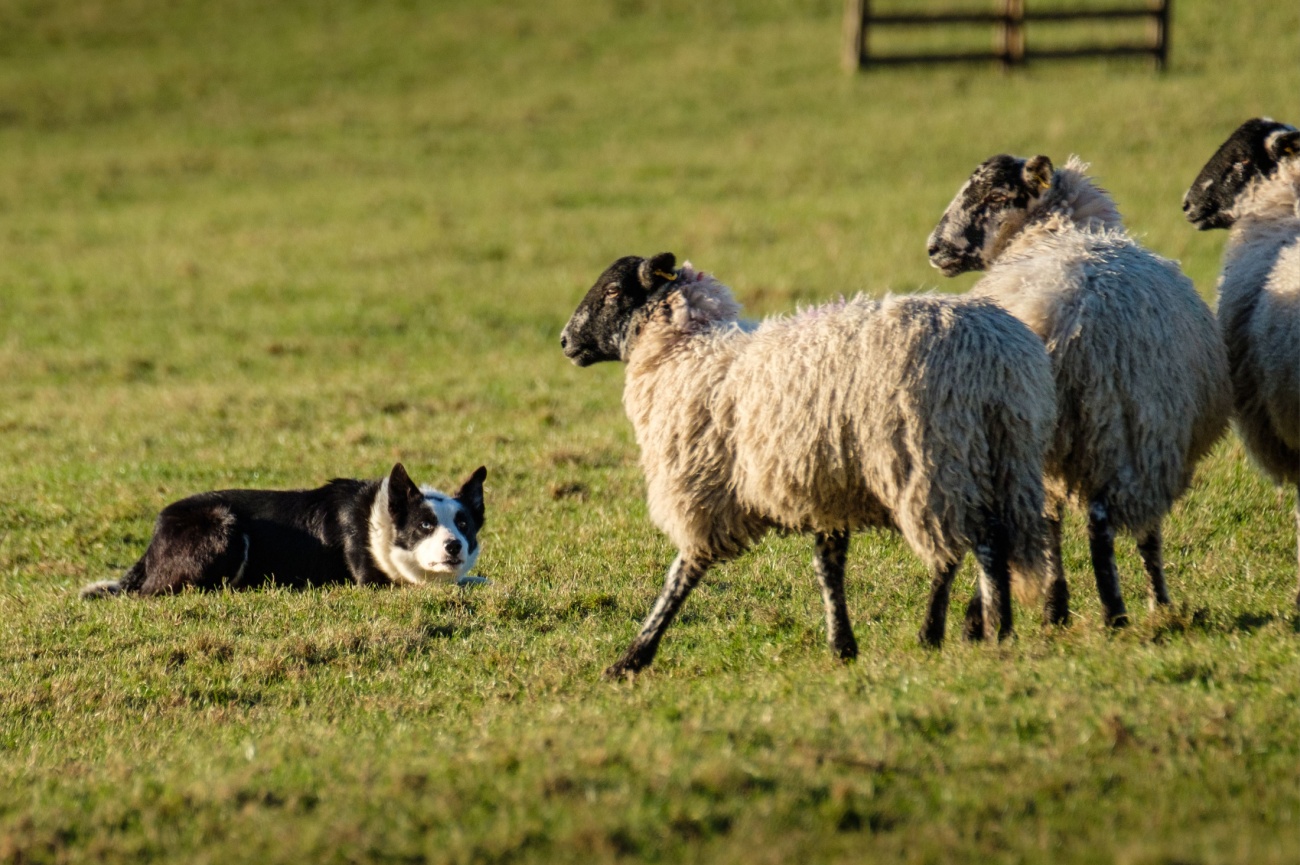Things to Do in Northumberland National Park: 3-Day Itinerary
Boasting over 400 square miles of picturesque scenery, Northumberland National Park is known for its excellent walking trails, impressive Roman heritage and stargazing opportunities. Our three-day itinerary takes you to some of the park’s top attractions including fascinating prehistoric hillforts, cascading waterfalls and iconic Hadrian’s Wall. As the UK’s least populous national park, this is an excellent location for those looking for a peaceful retreat and if you’re looking for where to stay and eat during your trip, we’ve got plenty of suggestions. Northumberland is home to beautiful coastal castles and charming villages, so we’ve also got lots of ideas for extending your trip beyond the national park’s boundaries.
Day 1

Morning: Ingram Village
Start your exploration of Northumberland National Park in the small village of Ingram. This pretty spot sits alongside the River Breamish surrounded by rolling hills and is home to a small café, a church with 11th century origins and the main parking spot for exploring the Breamish Valley. You can also park slightly further along the valley at Bulby’s Wood.
Breamish Valley Hillfort Trail
From Ingram, you can hike a circular route up to the five prehistoric hill forts of Brough Law, Middle Dean, Cochrane Pike, Wether Hill and Ingram Hill. Along the way, keep an eye out for the cultivation terraces, which people would have used to grow crops in the past and enjoy the outstanding views over the surrounding landscape. Each hillfort has its own unique ruins, including evidence of ramparts, huts and roundhouses. Be sure to wear suitable footwear and clothing for the weather conditions. A shorter route is also available taking in two of the hill forts and Turf Knowe.
Turf Knowe
While walking the hillfort trail, be sure to stop and explore Turf Knowe, a Bronze Age burial cairn. Excavations here revealed food vessels, cremation pots and evidence of burials dating back more than 4000 years. When you’ve finished exploring the ancient sites of the hillfort trail, return to Ingram village where the banks of the River Breamish are a great spot for a picnic.
Afternoon: Linhope Spout Waterfall
From Ingram, drive further along Breamish Valley until you reach Hartside, where verge parking is available. From here follow the waymarked path up to the eighteen-metre-high tumbling waterfall of Linhope Spout, where wild swimmers are often enticed by the plunge pool at the waterfall’s base. Be sure to look out for red squirrels, known to frequent the area as well as views over to Hedgehope Hill, where you can continue onto if you’d like to extend your hike.
Hedgehope Hill
For those who enjoy hiking, there’s the option to continue from Linhope Spout into the hills beyond. Hedgehope Hill is the second highest hill in Northumberland National Park, standing at 714 metres above sea level and only dwarfed by its neighbour, the Cheviot at 815 metres above sea level. On a clear day, you can see as far as Northumberland’s charming coastline with its golden beaches and picturesque castles as well as an array of local birdlife. The route can be steep and boggy at times, so appropriate footwear is essential.
Ingram Valley Farm Safari
Return to Ingram and enjoy a different way of learning about the valley and its history with an Ingram Valley Farm Safari. Travel off-road with your knowledgeable driver, learning about the animals who call this valley home as well as the history of this unique landscape.
Day 1 - Northumberland
National Park Tour Map
Day 2

Morning:
Hareshaw Linn Waterfall
Discover the rare flora of this Site of Special Scientific Interest as you wander the enchanting trail over bridges and through ancient woodland to Hareshaw Linn Waterfall. On your way, you might spot red squirrels, a variety of birdlife and the rare ferns and lichen the area is famous for.
Tower Knowe Visitor Centre
Travel from Hareshaw Linn into the heart of the national park, stopping at Kielder Water. On the shores of this manmade lake, you’ll find Tower Knowe Visitor Centre. You can learn about Kielder Water and Forest Park in the Explore Centre, grab a coffee with a view at the café or head off on an adventure by ferry, bike or on foot. For those looking for a spot of retail therapy, there’s also a shop selling gifts and homewares.
Kielder Water & Forest Park
Having learnt about the area at the visitor centre, spend some time exploring England’s largest forest and the vast man-made lake within. There’s a lakeside walk extending 26 miles in total, the Birds of Prey Centre, the Kielder Salmon Centre as well as an impressive array of cycling trails. There are other family-friendly activities available at Kielder Waterside including segway tours, paddle boarding sessions, archery and miniature golf.
Afternoon: Calvert Kielder
For those looking for an adrenaline rush, there’s plenty on offer at Calvert Kielder. Zoom along the zip wire or put your nerves to the test on the King Swing. You’ll also find climbing walls and high ropes courses along with opportunities to get out on the water with canoeing and sailing packages.
Kielder Castle
The former hunting lodge known as Kielder Castle may still be closed for redevelopment but that doesn’t mean there’s not plenty to explore at the north-western end of Kielder Water. Follow the story-themed trail, ideal for families, then head to the minotaur maze or join part of the Lakeside Way. Be sure to keep an eye out for red squirrels and roe deer.
Kielder Forest Drive
From Kielder Castle, you can drive the beautiful 12-mile forest route to Blakehopeburnhaugh. On your way, be sure to stop at the Blakehope Nick viewpoint and enjoy the breathtaking scenery as well as the unique art installation, the Nick, built by a group of Newcastle University students. The structure is part of the park’s art and architecture programme. Please note that the forest drive is a toll road.
Kielder Observatory
Finish your visit to Kielder Water and Forest Park with a mesmerising trip to Kielder Observatory. Open in the evening for designated events, this is a chance to learn about the night sky in this vast Dark Sky Park. Nearby you can also spot the Kielder Skyspace sculpture, which illuminates at night. Please note that the observatory is only open during events (although these are frequent) and tickets should be booked in advance.
Day 2 - Northumberland
National Park Tour Map
Day 3

Morning: The Sill: National Landscape Discovery Centre
Today has you exploring the remarkable Roman heritage in the south of Northumberland National Park. Start at the Sill, a visitor centre packed with exhibitions and facilities including a rooftop walk, café and shop. The centre’s permanent exhibition is a chance to learn about the area’s unique history and geology, while the temporary exhibition space hosts a variety of fascinating displays. The Sill is also a great starting point for a variety of walking trails.
Steel Rigg and Sycamore Gap Walk
Hadrian’s Wall is among Britain’s most famous Roman heritage sites. It was a vast stone wall built across the width of Britain during the Roman Empire marking the border with unconquered territory to the north. Discover part of the wall on a walk from the Sill, taking in the impressive viewpoint at Steel Rigg. Continue on to the spot known as Sycamore Gap. This was once home to a large sycamore tree, which was more than 100 years old and had been planted picturesquely in a natural dip in the landscape. The tree was a famous photo stop for visitors to the area and also featured in 1991 film Robin Hood: Prince of Thieves. Today only the stump remains after the tree was felled in an act of vandalism in 2023.
Housesteads Roman Fort
Along Hadrian’s Wall are numerous forts and milecastles and among these is the impressively well preserved Housesteads Roman Fort. Here you’ll find the stone foundations of barrack blocks and a hospital along with some surprisingly intact communal toilets. There’s also a museum, which provides a fascinating introduction to life at the fort. As well as the ruins, the site boasts impressive views over the surrounding landscape.
Afternoon: Brocolita Temple of Mithras
A visit to the Temple of Mithras at Brocolita is an opportunity to gain greater understanding of Roman religious beliefs before Christianity. The religion of Mithraism was popular among soldiers and it is thought that the soldiers garrisoned at nearby Carrawburgh Roman Fort built this temple. The temple’s design served to remind worshippers of the legend wherein the god Mithras slayed a sacred bull in a cave. With the rise of Christianity in the empire, the temple at Brocolita became one of the many Mithraic temples which were destroyed. Nearby you’ll also find a Celtic well dedicated to the water goddess Coventina.
Vindolanda
Vindolanda’s origins actually predate Hadrian’s Wall, although its importance grew with the construction of the wall, and it remained an important feature in the community up until the 9th century. The vast site includes excavated remains of bath houses, barracks, a mausoleum, a church and much more. The comprehensive museum features the Vindolanda Tablets, the oldest surviving handwritten documents in Britain, which are carefully displayed to protect these wooden items from damage by oxygen or moisture. Excavations are ongoing with new findings added to the museum each year.
Milecastle 42
There are small forts, known as milecastles, dotted along the length of Hadrian’s Wall with one approximately every Roman mile. Milecastle 42 occupies a steep hillside position and can be accessed from the Cawfields car park. Look out for what remains of the quarry, now a popular picnic spot, before climbing up Cawfields Crags and enjoying impressive views of the wall and Milecastle 42.
Stargazing at Cawfields Car Park or Walltown Country Park
There are two designated Dark Sky Discovery Sites in this part of the national park, one at Cawfields car park and the other at Walltown Country Park. The commitment by these areas to limit light pollution means the views of the night sky can be truly spectacular.
Day 3 - Northumberland
National Park Tour Map
Other
Things To Do
- Walking and cycling trails: Northumberland National Park boasts a huge number of walking and cycling trails. Perhaps you’ll walk part of the Pennine Way or the Hadrian’s Wall Path, both National Trails which run through the park, or perhaps you’ll choose to explore the Cheviot Hills, keeping your eyes peeled for goats. Whether you’re looking for woodland, moorland, archaeological ruins or spectacular hilltop views, the national park offers plenty of choice for keen hikers and cyclists.
- Cragside House & Gardens: This remarkable Victorian house, a short drive from Northumberland National Park, was once the home of inventor and industrialist Lord William Armstrong and his wife Margaret. The house, perched dramatically atop a rocky crag, features numerous nifty gadgets and a pioneering hydroelectric power lighting system, while the gardens are an enchanting wonderland of diverse planting and water features.
- Otterburn: This small village in the valley of Redesdale is a great launch point for numerous walks and cycle trails. It also boasts a number of pubs and restaurants as well as Otterburn Mill, where you can learn about the area’s history of weaving and wool-milling. Meanwhile on the outskirts of the village, the Percy Cross serves as a reminder of the Battle of Otterburn in 1388.
- Bellingham: Another picturesque spot just on the edge of the national park is the market town of Bellingham. Take a walk on one of the many nearby trails, including the route to Hareshaw Linn Waterfall, then regain your energy at one of the town’s charming pubs or cafes. At the Bellingham Heritage Centre, you can discover more about the area’s industrial past, while examples of the town’s medieval history can be found at St Cuthbert’s Church and St Cuthbert’s Well.
- Sample local beer and gin: If you’re looking for a tipple, head to the village of Once Brewed, where you’ll find the Twice Brewed Inn, an eco-brewery which creates a range of locally inspired ales and lagers with a focus on responsible beer production. You can sample the beer in the tap room and take a peek at the brewery through the glass wall. If spirits are more your thing, book in for a tour of the Hepple Distillery, where the Hepple Gin range is produced.
- Brinkburn Priory and Manor House: A short drive from the national park, on the banks of the River Coquet, you’ll find a fascinating 12th century Augustinian priory and 19th century manor house. Enjoy the priory’s marvellous acoustics and admire the impressive stained-glass windows and Gothic architecture.
- Rothbury: The River Coquet flows through the scenic town of Rothbury. As well as being a great starting point for walking and cycling trails in the national park, the town is a hub of activity with numerous shops, pubs and cafes.
- Ad Gefrin Museum: Learn about the area’s Anglo-Saxon past at this immersive museum. You can experience a recreation of the royal palace of Gefrin’s Great Hall in and discover the variety of artefacts found in the area.
- College Valley: To the north of Northumberland National Park lies the rugged terrain of College Valley. This area was first settled in the late Stone Age and there are numerous remnants of the valley’s prehistoric past. A small number of vehicle permits are issued each day but otherwise exploration of this scenic landscape is on foot or by bike.
- Simonside Hills: Hike the rugged, craggy landscape of Simonside Hills and you’ll be rewarded with magnificent views of the Cheviot Hills and the beautiful Northumbrian coastline. A short drive from Rothbury, this Special Area of Conservation is a great spot to see wildlife including curlews and red grouse.
- The Lady's Well: Set in the picturesque village of Holystone, Lady’s Well is a small pool with a stone cross and a long history. It is thought that Saint Ninian may have baptised early Christians here, while its name comes from its dedication to the Virgin Mary in the medieval period.
- Hindhope Linn: Linhope Spout and Hareshaw Linn may be the most well-known waterfalls in Northumberland National Park, but you’ll find yet another enchanting waterfall by following the short forest trail to Hindhope Linn from Blakehopeburnhaugh in Kielder Forest Park. This family-friendly trail also has a picnic area near the car park.
- Hethpool (College Valley): While visiting College Valley, be sure to explore the family-friendly trail to Hethpool Linn waterfall on the College Burn. This walk is a top spot for encountering the native Cheviot goats as well as other wildlife including hares, kestrels and buzzards.
Day Trips from Northumberland National Park
- Alnwick: There’s plenty to pack in on a day trip to the charming market town of Alnwick. Alnwick Castle has a long history and today is home to the Duke and Duchess of Northumberland. In more recent times the castle featured as Hogwarts Castle in the Harry Potter films and there are lots of opportunities to add a touch of magic to your visit. Nearby you’ll find the enchanting Alnwick Garden, featuring the Grand Cascade, Serpent Garden, Treehouse restaurant and the famous Poison Garden, home to some of the deadliest plants in the world. Be sure to also check out Barter Books, a delightful second-hand bookshop and the award-winning Bailiffgate Museum and Gallery.
- Bamburgh and Seahouses: Pay a visit to the coastal villages of Bamburgh and Seahouses and you’ll be rewarded with captivating beach views, an iconic castle rich in history, charming cafes and an intriguing museum dedicated to a Victorian heroine. The walk from Seahouses along the beach to Bamburgh castle is particularly impressive, as the castle sits dramatically atop a basalt crag. You could also add on a visit to the Holy Island of Lindisfarne, tide permitting.
- Berwick-upon-Tweed: History lovers will be in their element visiting the border town of Berwick-upon-Tweed. You can explore the Elizabethan town walls, the medieval castle ruins and the prison cells of the town hall. There are also charming, cobbled streets with inviting cafes as well as the chance to take a boat trip and spot some of the local wildlife, including puffins, seals and dolphins.
- Newcastle: Embrace the buzz of the city on a trip to Newcastle. There’s a huge range of shops and restaurants as well as top-class museums, such as the Great North Museum: Hancock, the Discovery Museum and the Life Science Centre. Be sure to pay a visit to fascinating Newcastle Castle and for sports enthusiasts, tours are available of St James’ Park, Newcastle United’s football ground.
- Craster and Dunstanburgh Castle: Head to the charming fishing village of Craster on the Northumberland coast, complete with a hidden cove and picturesque harbour. During your visit you can taste the famous smoked kippers, enjoy bird watching and discover the story of the now ruined Dunstanburgh Castle.
- Alnmouth Village: This beautiful village, situated where the River Aln meets the North Sea, is home to an array of wildlife, a tiny museum and a beautiful sandy beach. The magnificent coastal scenery and pretty pastel houses make this a popular spot for walking, cycling and horse riding.
- Chillingham Castle: If you’re looking for a spooky day out, Chillingham Castle, known as Britain’s most haunted historic castle is sure to send shivers down your spine especially during a visit to the torture chamber and dungeons. You can also learn about the castle’s long history with a visit to the great halls and state rooms and explore the exquisite formal gardens.
Best Golf Courses Near Northumberland National Park
The national park itself is home to two 18-hole courses at Bellingham and Rothbury. Both boast beautiful views of the surrounding countryside. Beyond the national park’s boundaries, Northumberland has more than 40 golf clubs including the coastal courses at Bamburgh Castle and Goswick near Berwick-upon-Tweed and inland options at Hexham and Slaley Hall.
Racecourses Near Northumberland National Park
Northumberland National Park sits between a number of popular racecourses. Hexham Racecourse is a scenic choice and the only course in Northumberland. Meanwhile Newcastle Racecourse in High Gosforth Park hosts more than 60 fixtures each year. To the west, you’ll find Carlisle Racecourse while over the border in Scotland, Kelso Racecourse boasts a grandstand that dates back to the 19th century.
Things to Do with Kids in Northumberland National Park
Northumberland National Park offers plenty of opportunities for children to explore, discover and let off steam with lots of family-friendly walks and trails. Enjoy learning about space together at one of the Dark Sky Discovery Sites or the Kielder Observatory. Roman sites such as Housesteads Roman Fort and Vindolanda or the Roman Army Museum can bring history to life for younger visitors. The Kielder Water and Forest Park is great for adventure seeking kids with activities including high ropes, kayaking, climbing walls, a zip wire, paddleboarding and archery to name a few. Beyond the national park’s boundaries you’ll find an outdoor swimming pool, complete with flume, open in the summer months at Haltwhistle, while there’s lots of fun to be had at the adventure play area and the Labyrinth maze at Cragside House and Gardens. Northumberland Zoo with its variety of animals is driving distance from the park. If you’re visiting Alnwick, the Alnwick Garden has the magical play village of Lilidorei, while Alnwick Castle is popular with Harry Potter fans.
Where to Eat in Northumberland National Park
- The Star Inn: This dog-friendly historic pub in the village of Harbottle was originally a coaching inn and is a cosy spot popular with locals and visitors alike. As well as a variety of beers and wines, the pub serves a menu including pizzas, pasta, fish and meat dishes. Relax by the crackling fire as you enjoy the friendly atmosphere and original features.
- William de Percy Inn & Creperie: Just outside the national park boundaries, in the village of Otterburn, the William de Percy Inn & Creperie offers a menu of tasty comforting dishes. With a focus on locally sourced produce, this welcoming spot boasts a unique style with cosy booths and exposed brick walls. Dogs are also welcome.
- Forest Bar and Kitchen: With views overlooking Kielder Water, the Forest Bar and Kitchen is a relaxing spot for lunch, dinner or a drink. On warm days, you can enjoy the picturesque waterside terrace, while inside there’s a small soft play area for younger guests. The varied menu includes hearty dishes and tasty desserts.
- The Red Lion: The seasonal menu at the Red Lion in Newbrough features locally sourced produce and home-grown vegetables. Enjoy a local ale as you sit by the fire at this friendly pub just a short drive from Hadrian’s Wall.
Where to Stay in Northumberland National Park
- Matfen Hall (5 stars): Set in 300 acres of parkland a short drive east of the national park, Matfen Hall is a charming country house with a wide range of facilities. Relax in one of the luxuriously elegant ensuite bedrooms, enjoy fine dining in the Emerald Restaurant or unwind at the spa. This is a popular choice for golfers with the hotel boasting its own course and driving range.
- The Pheasant Inn (4 stars): In the heart of Northumberland National Park, a short drive from Kielder Water, the Pheasant Inn is a friendly bed and breakfast, featuring eight comfortable ensuite rooms. The inn also has a cosy restaurant complete with original features and hearty, locally sourced food.
- Le Petit Chateau (4 stars): This French-inspired boutique hotel in the small village of Otterburn, just outside the national park, is full of unique charm. Rooms feature luxury touches such as roll-top baths, four-poster beds, ornate mirrors and romantic lighting. It’s also a popular wedding venue.
- Clennell Hall Country House (3 stars): Dating back to the 13th century, this country house in the Coquet Valley has kept many of its original features. The large gardens are home to an array of wildlife, while the ten comfortable ensuite rooms boast views of the forest, farm or hotel grounds. Rocky’s Bar hosts regular live music nights and is a friendly spot for a meal or drink after spending the day exploring the national park.
Best Time to Visit Northumberland National Park
Northumberland National Park is an all-year round destination, especially if you’re mainly planning to hike or cycle. Some of the attractions and visitor centres are only open from around April until October, so if you’re looking to make the most of all the attractions the park has to offer spring and autumn are generally the best time to visit Northumberland National Park. Spring is a particularly good time for wildlife and spring flowers, while autumn is ideal for stargazing. The summer months are a good time to visit weather-wise although they tend to be busier with visitors than the rest of the year.
Northumberland National Park Festivals
- The Dark Skies Festival, held in February at Northumberland National Park, is a popular stargazing destination in Europe, featuring night sky observation events, workshops, and astronomer talks.
- Northumberland Day, a county-wide celebration of Northumberland's heritage, culture, and community, takes place on the last Sunday in May, featuring local food festivals, live music, historical re-enactments, and guided walks.
- The Alwinton Border Shepherds Show, held in October, is a traditional agricultural event showcasing Northumberland's rural heritage, featuring sheepdog trials, livestock competitions, craft stalls, and traditional skills demonstrations.

